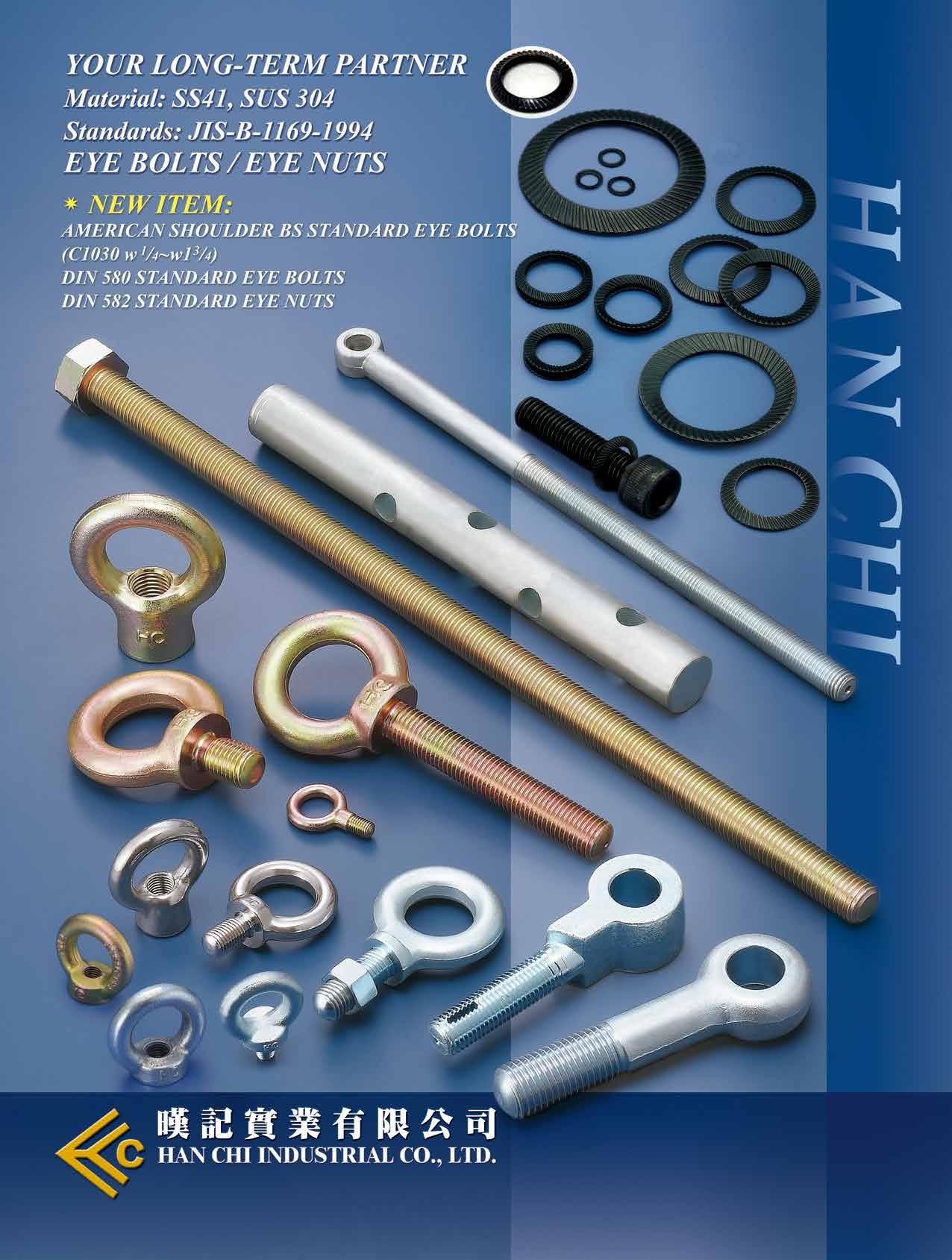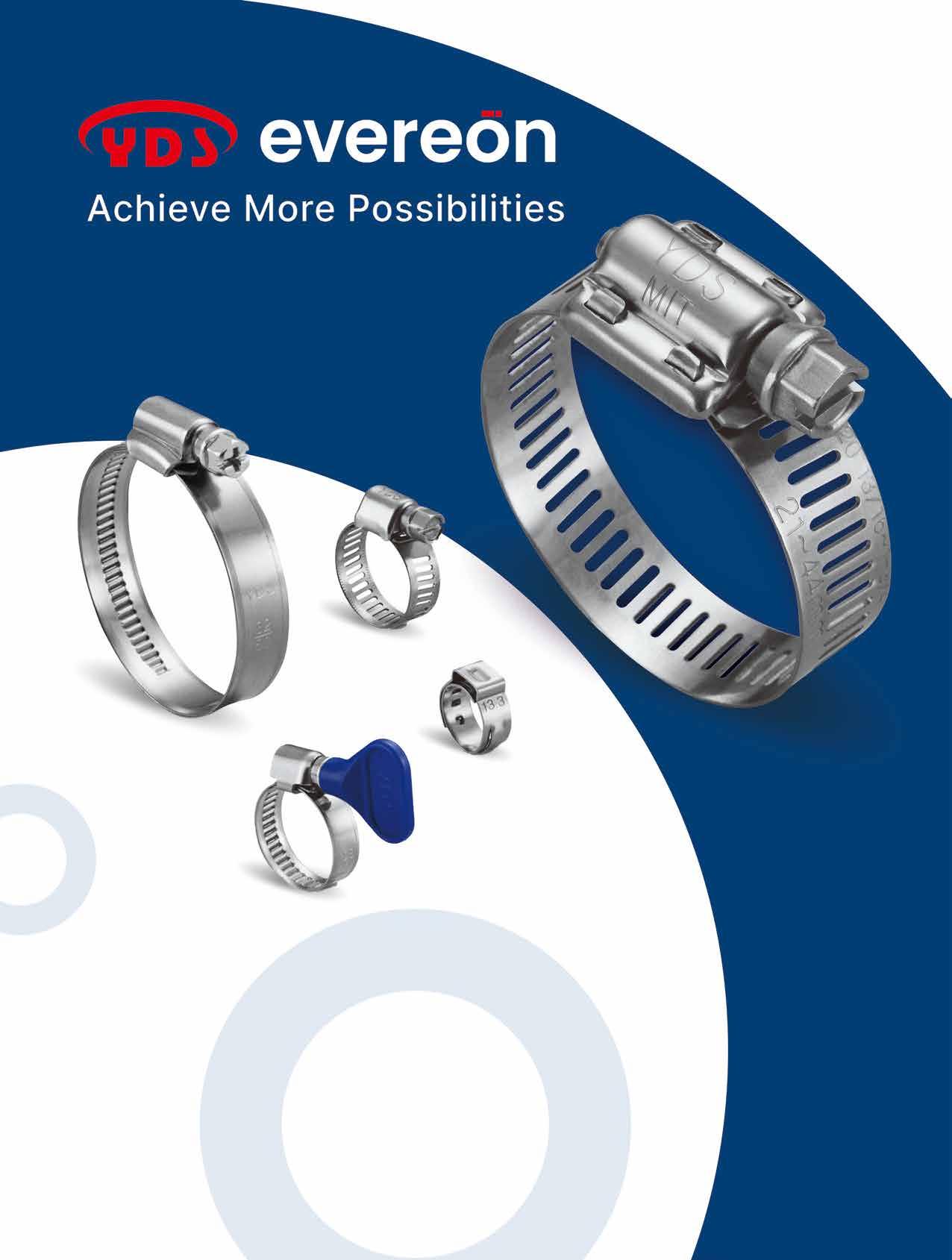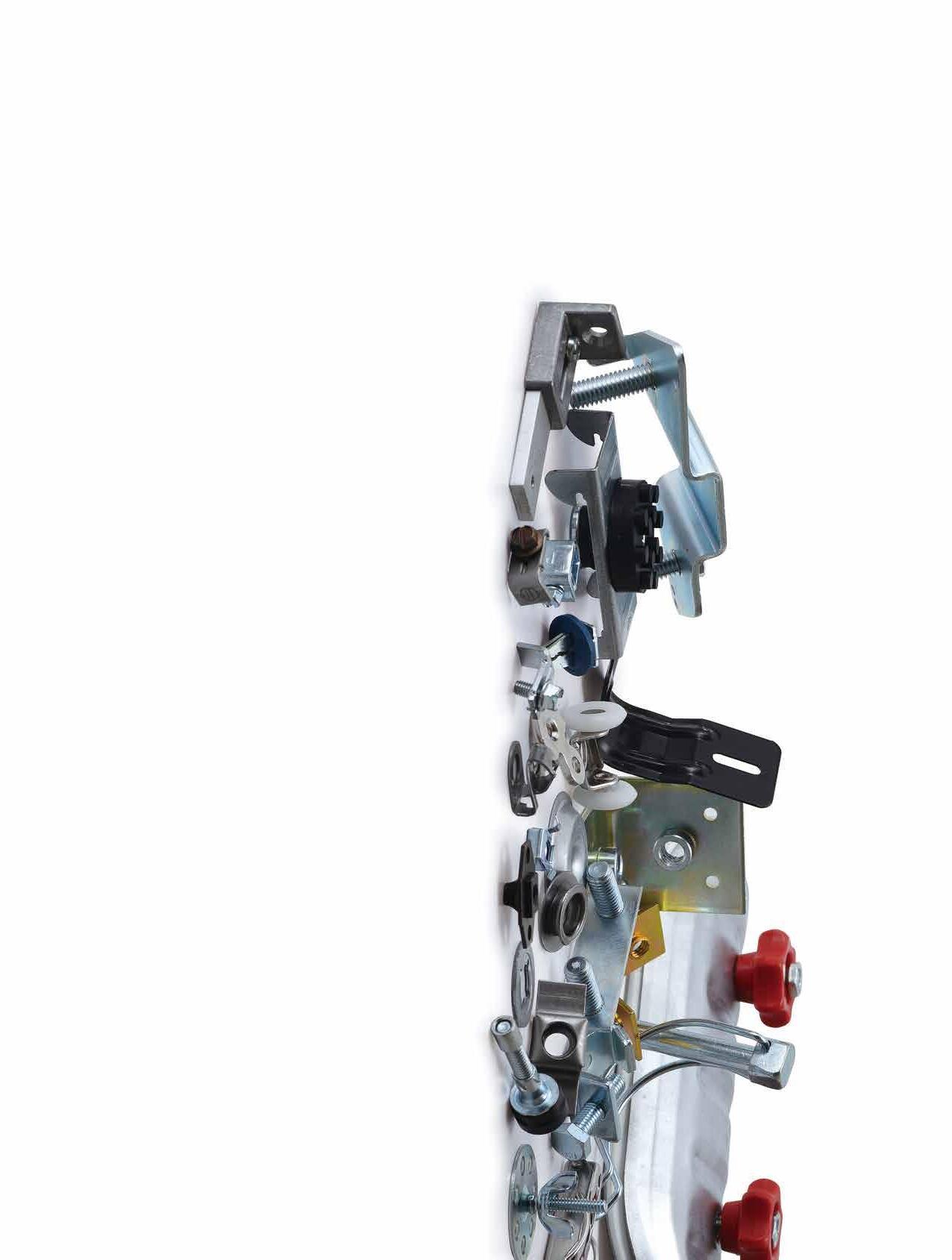













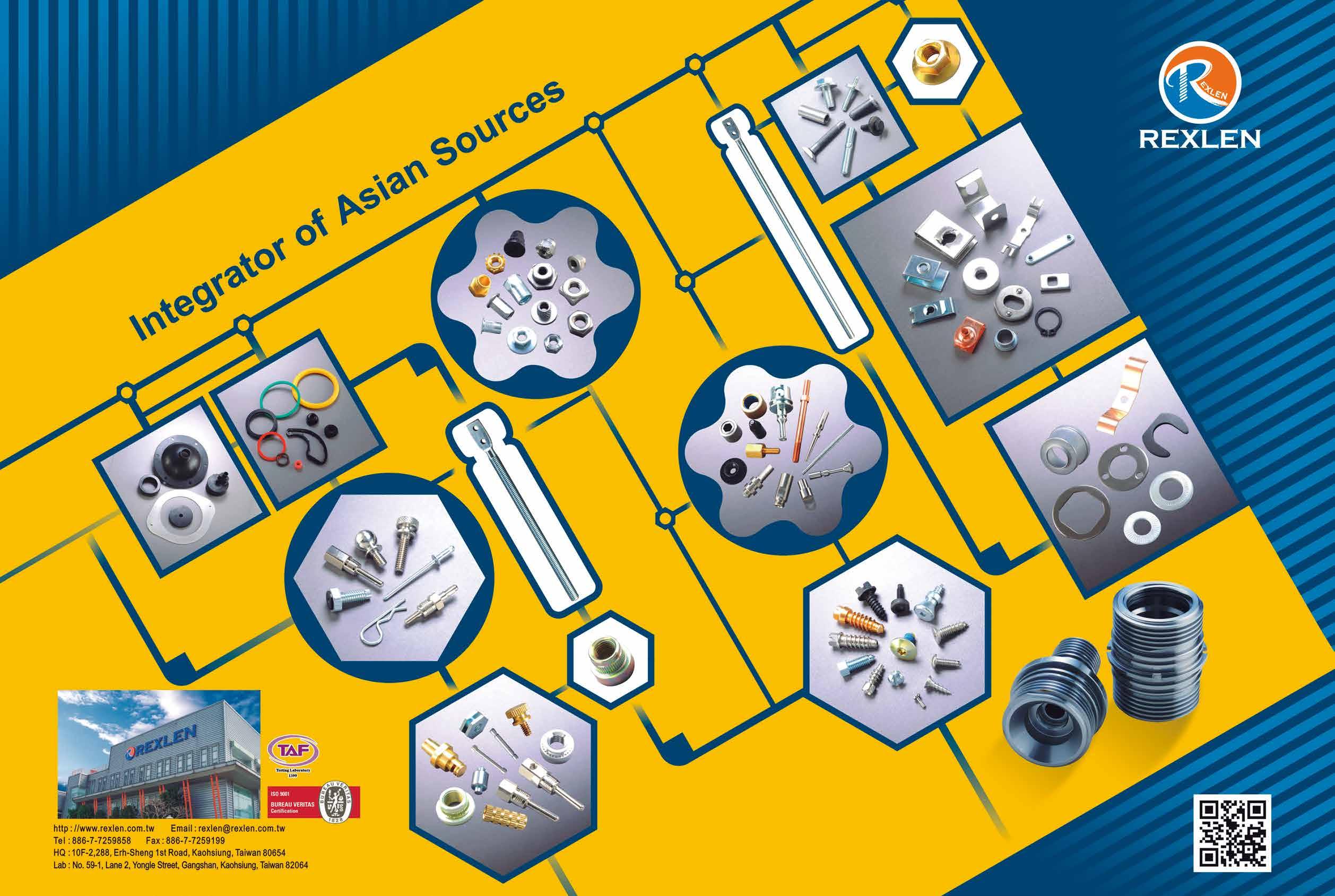


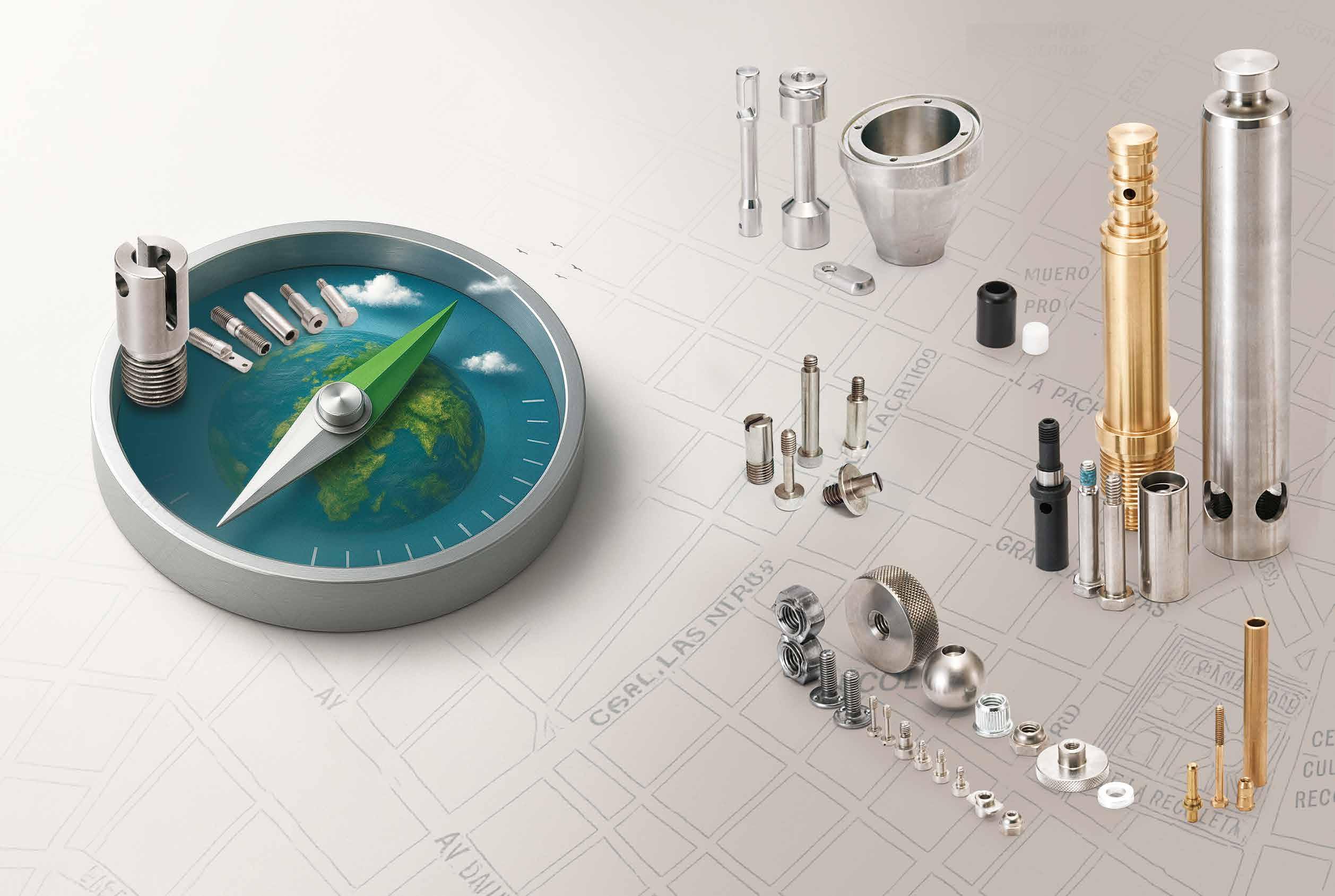





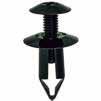






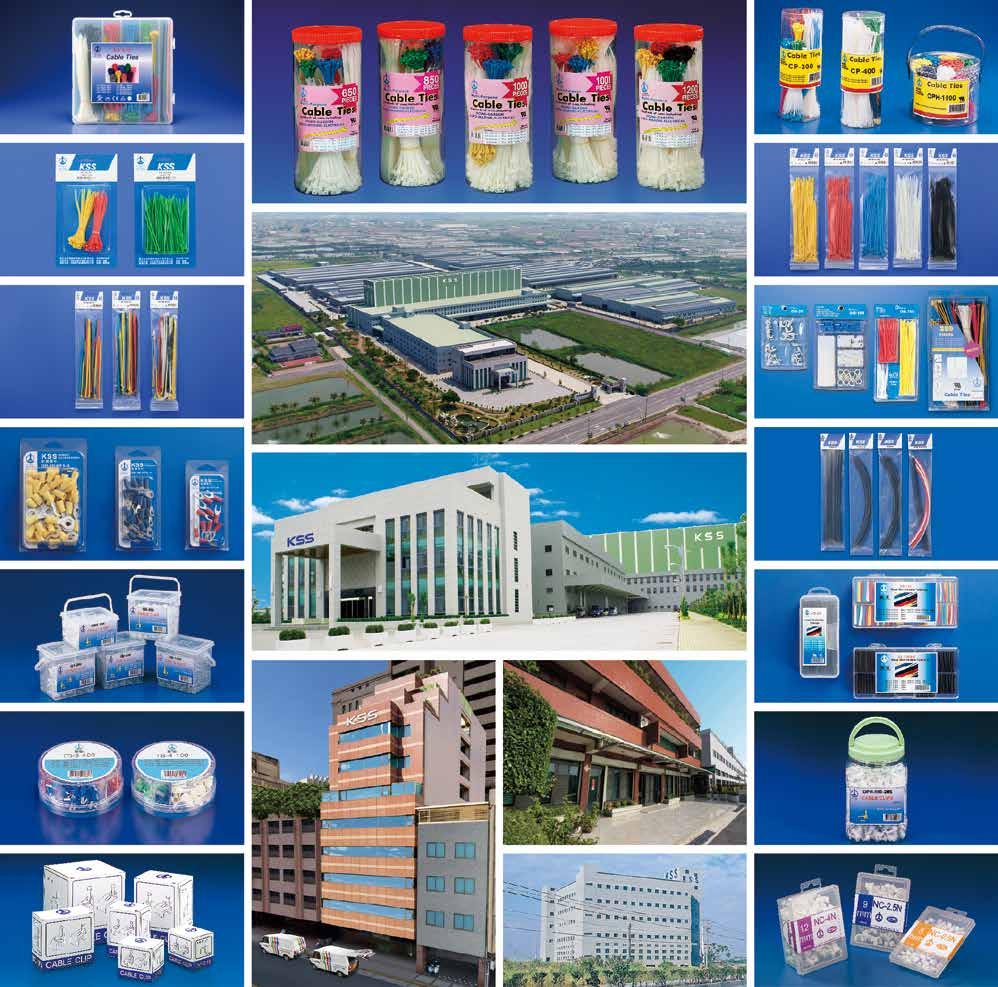

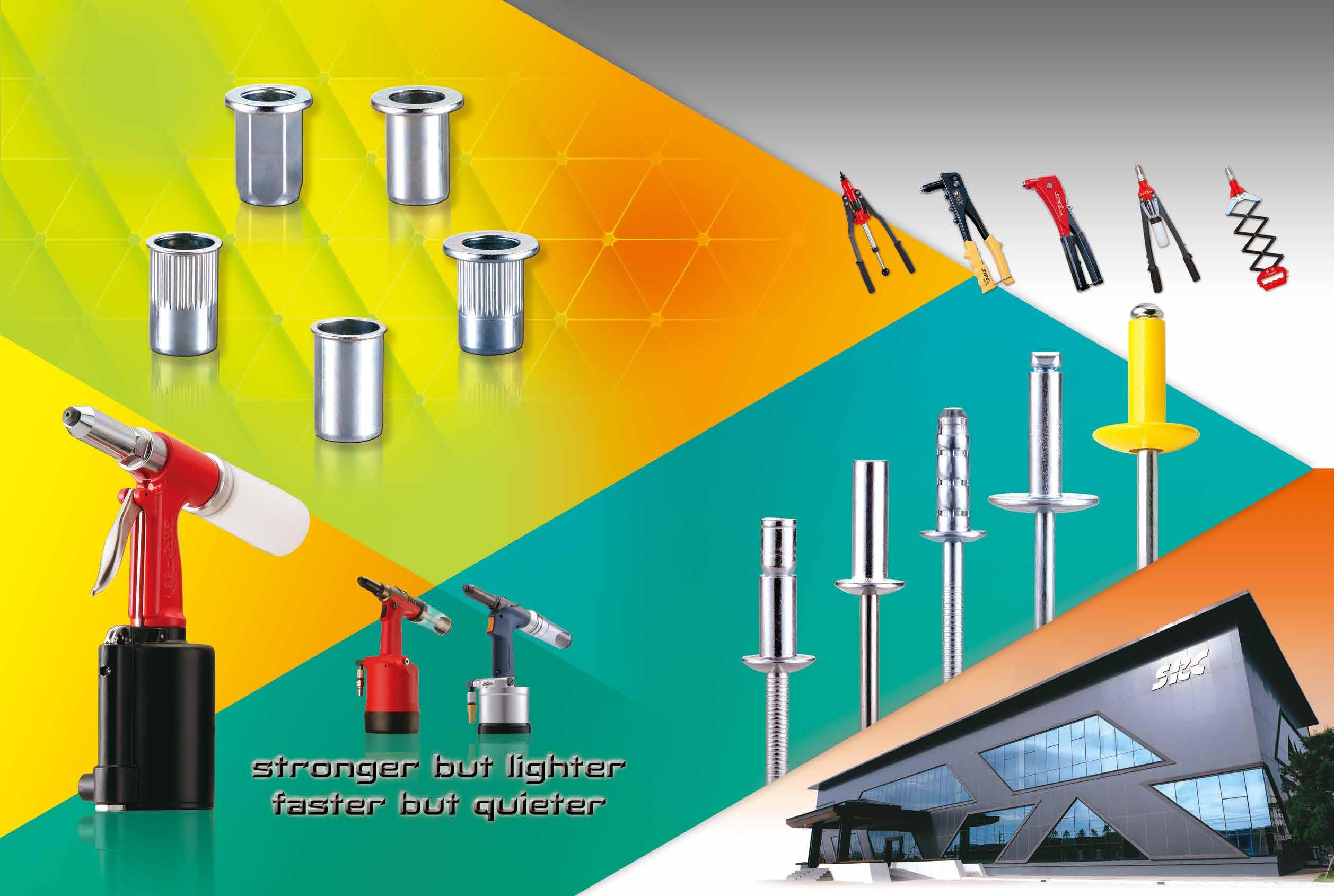










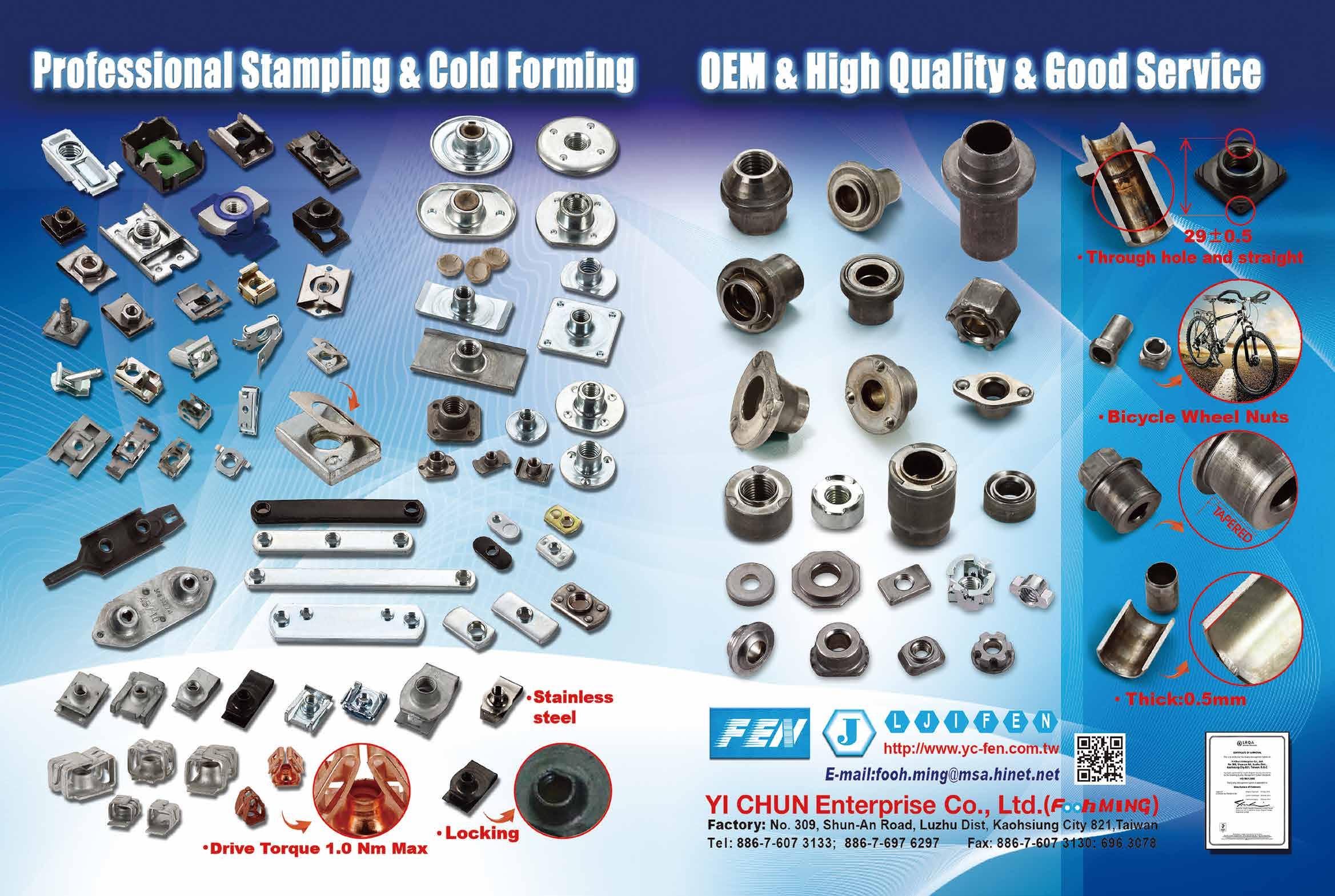
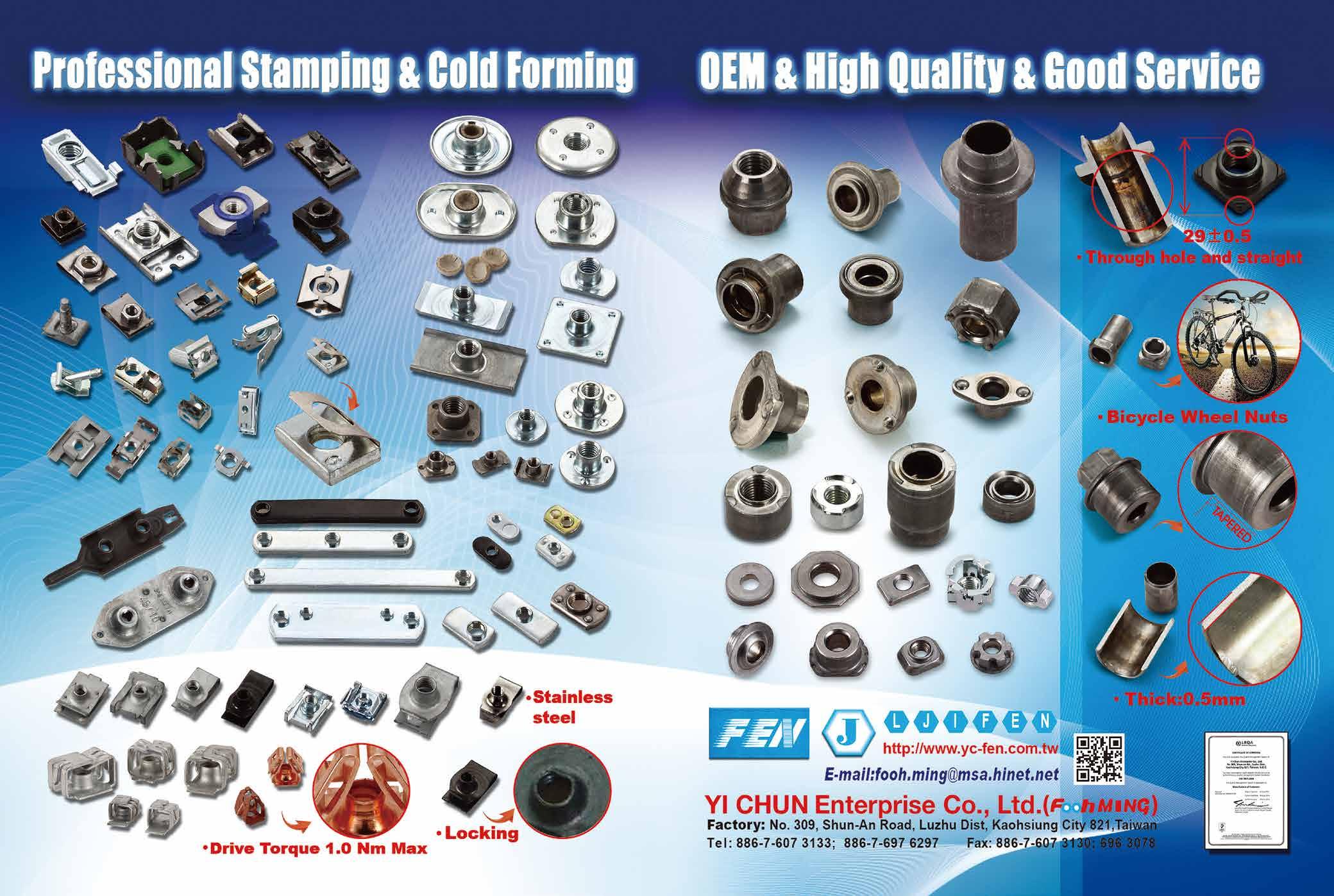
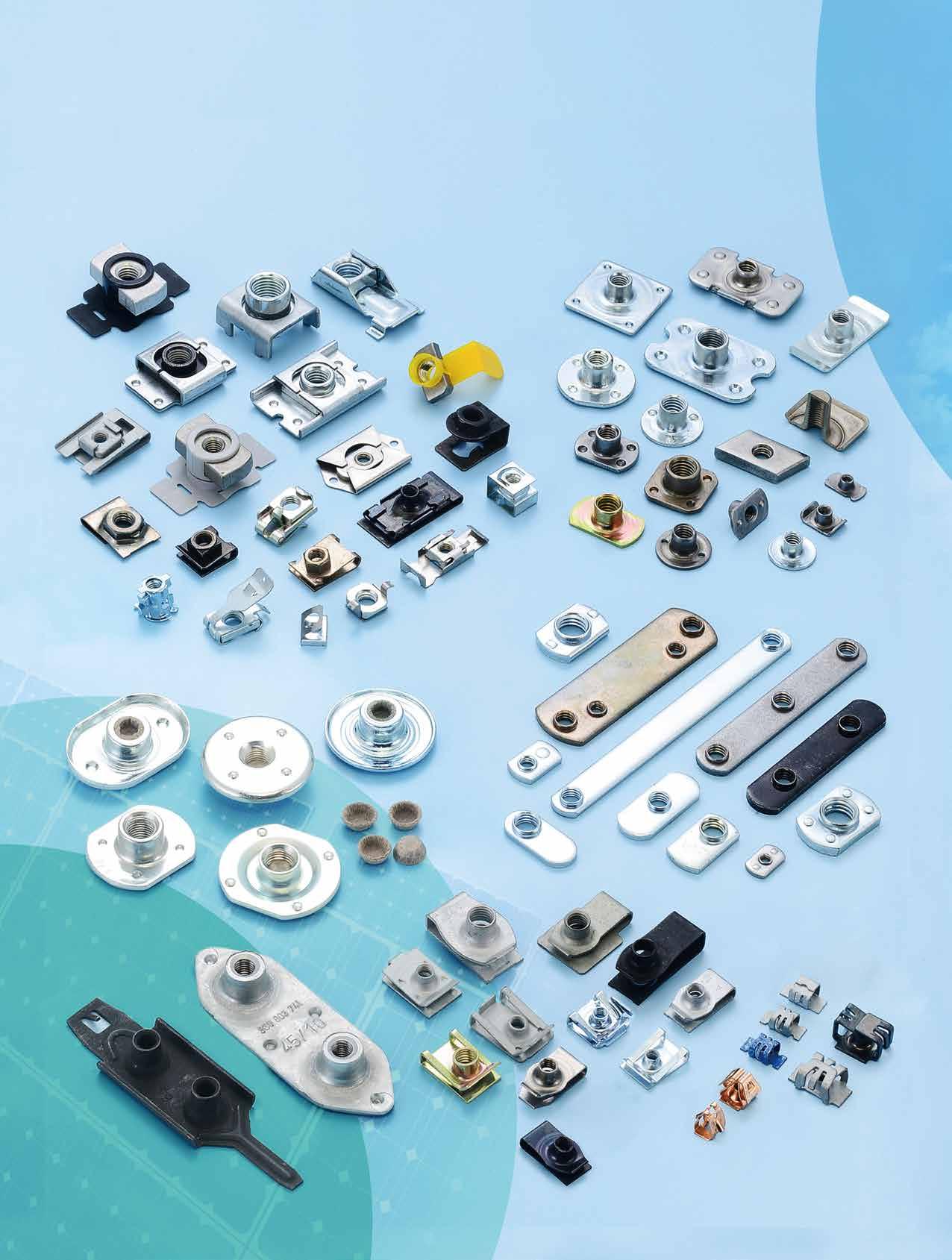






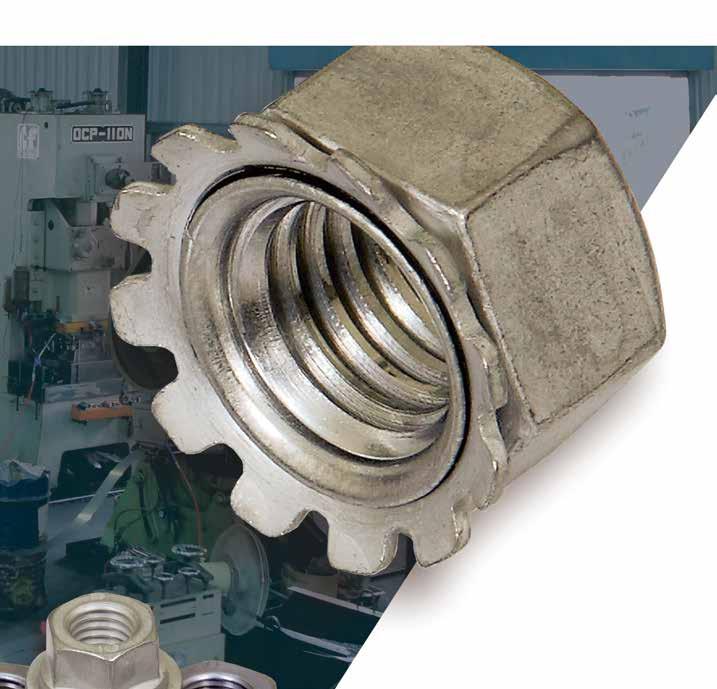






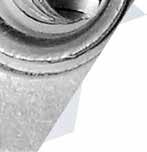


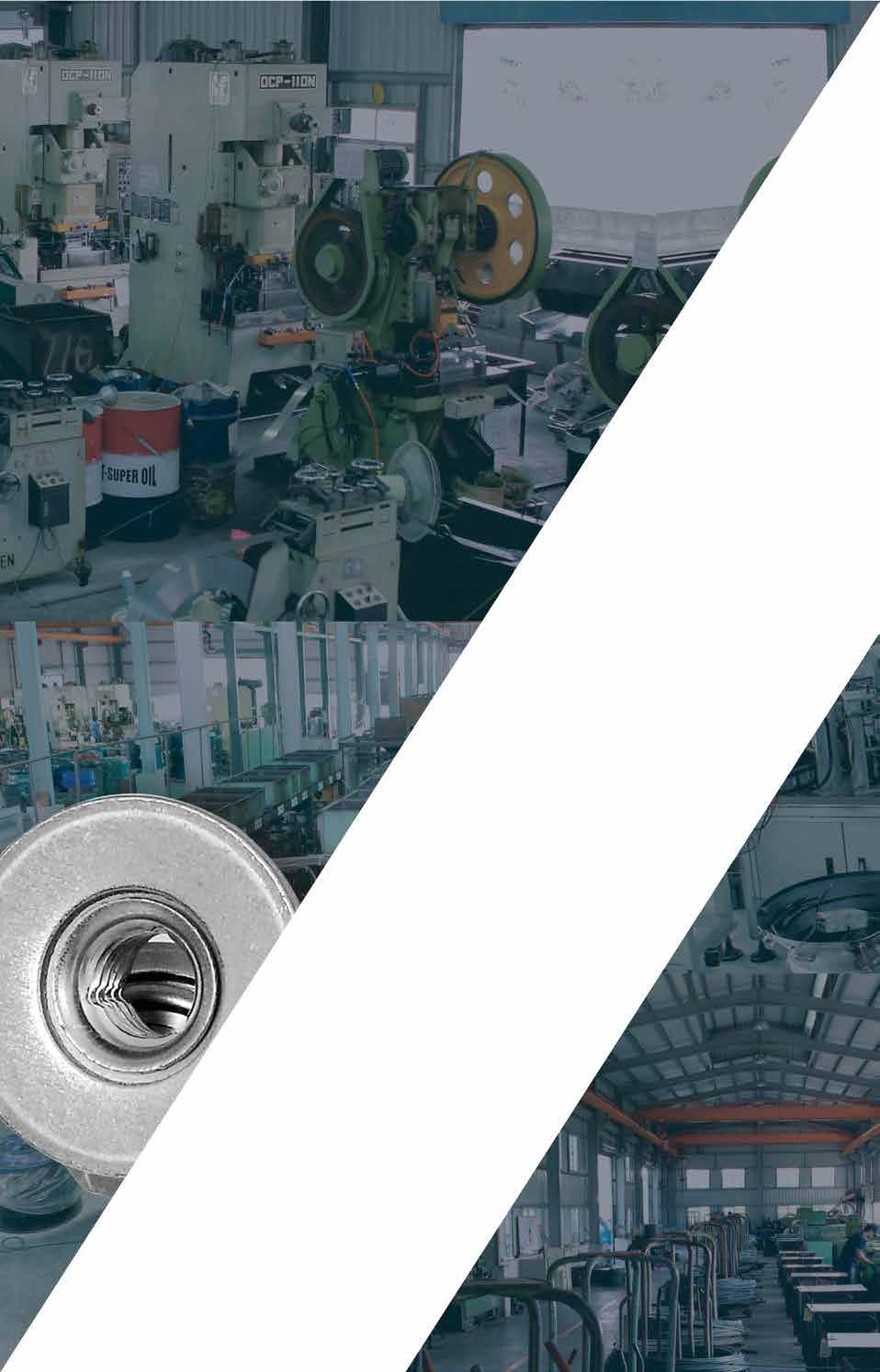






























































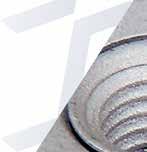

































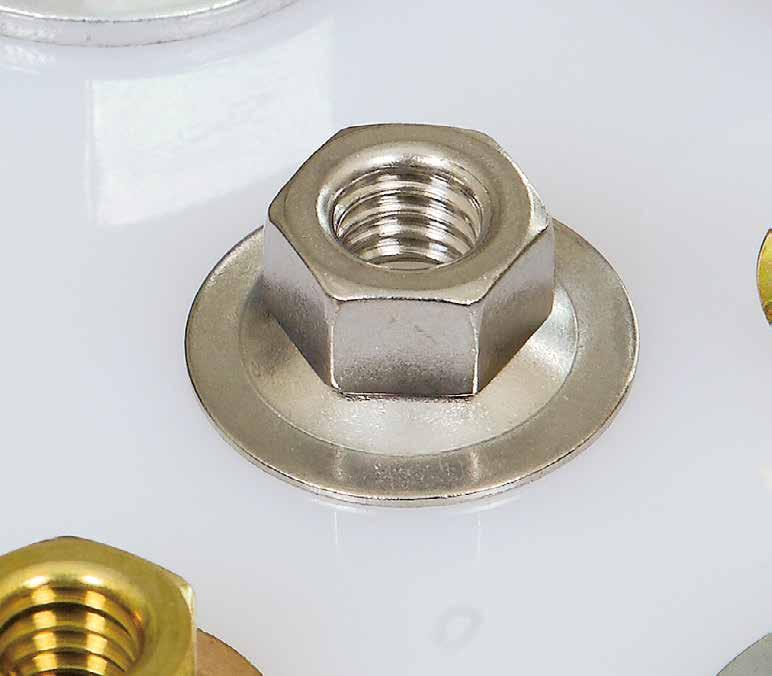

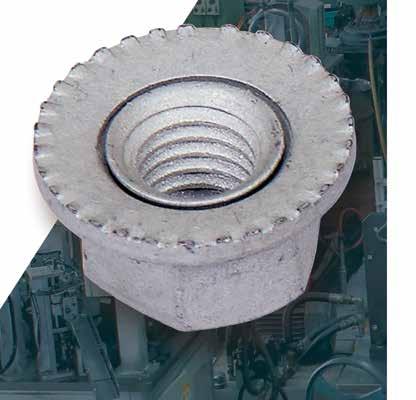

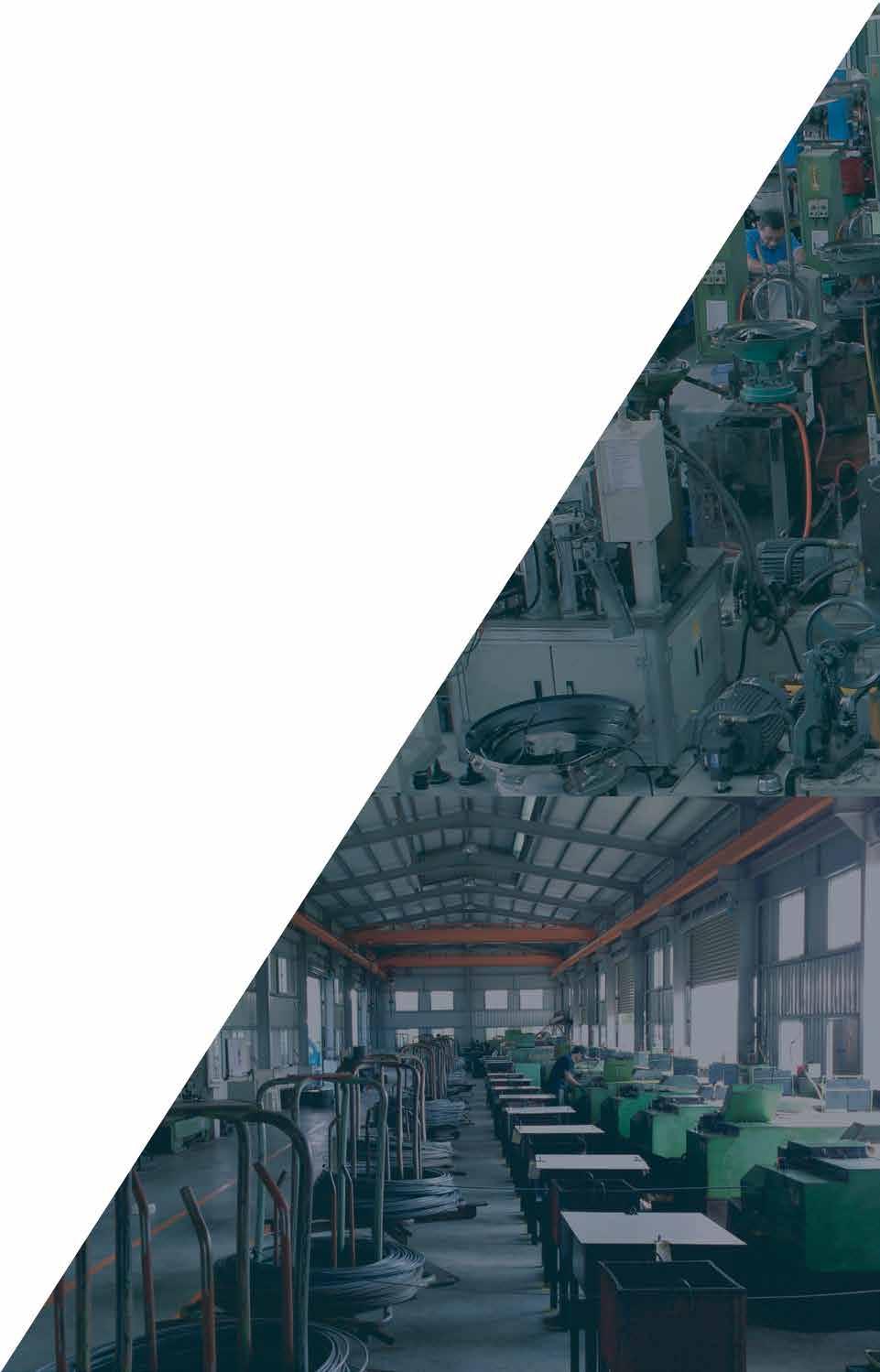



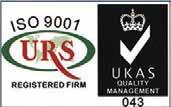





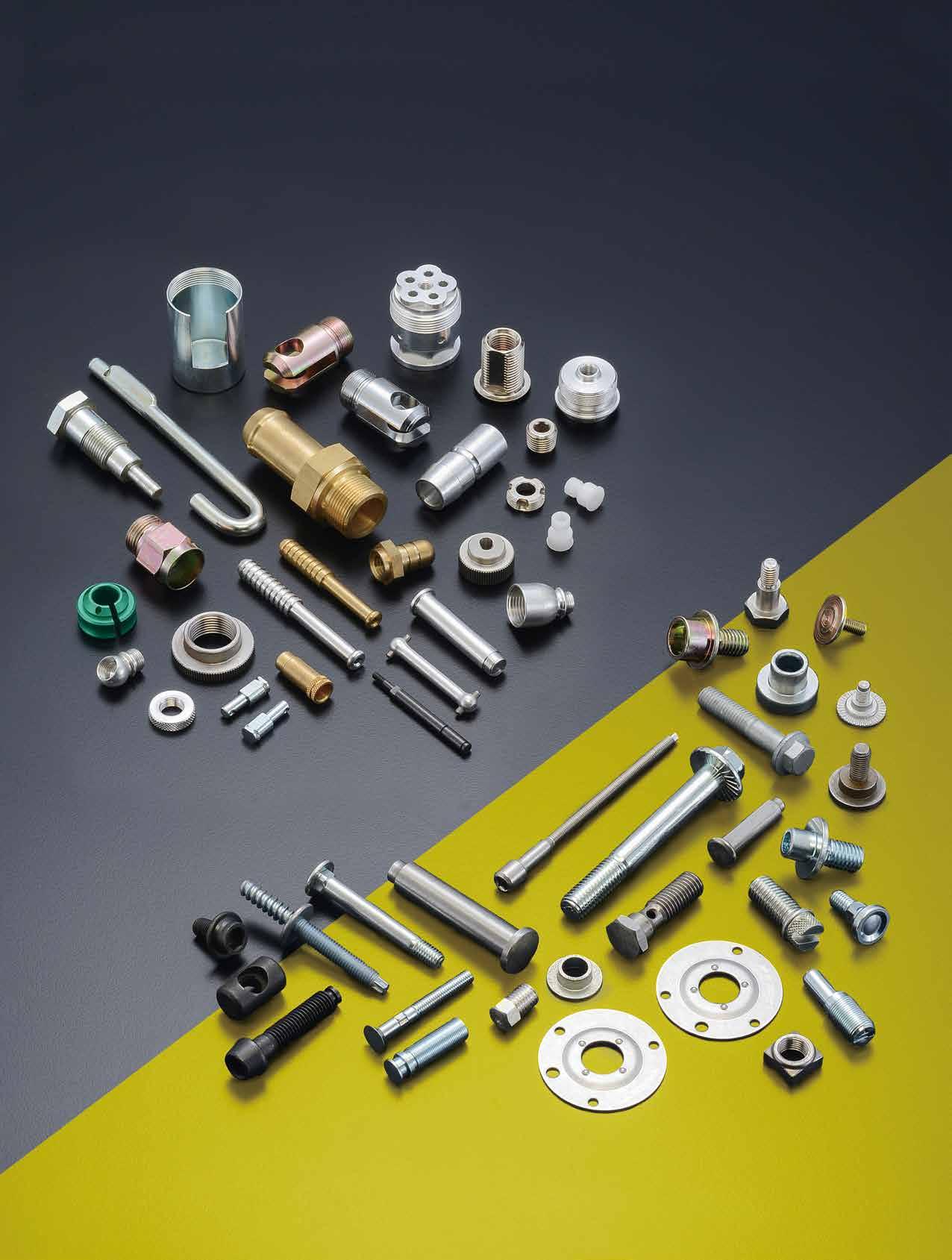





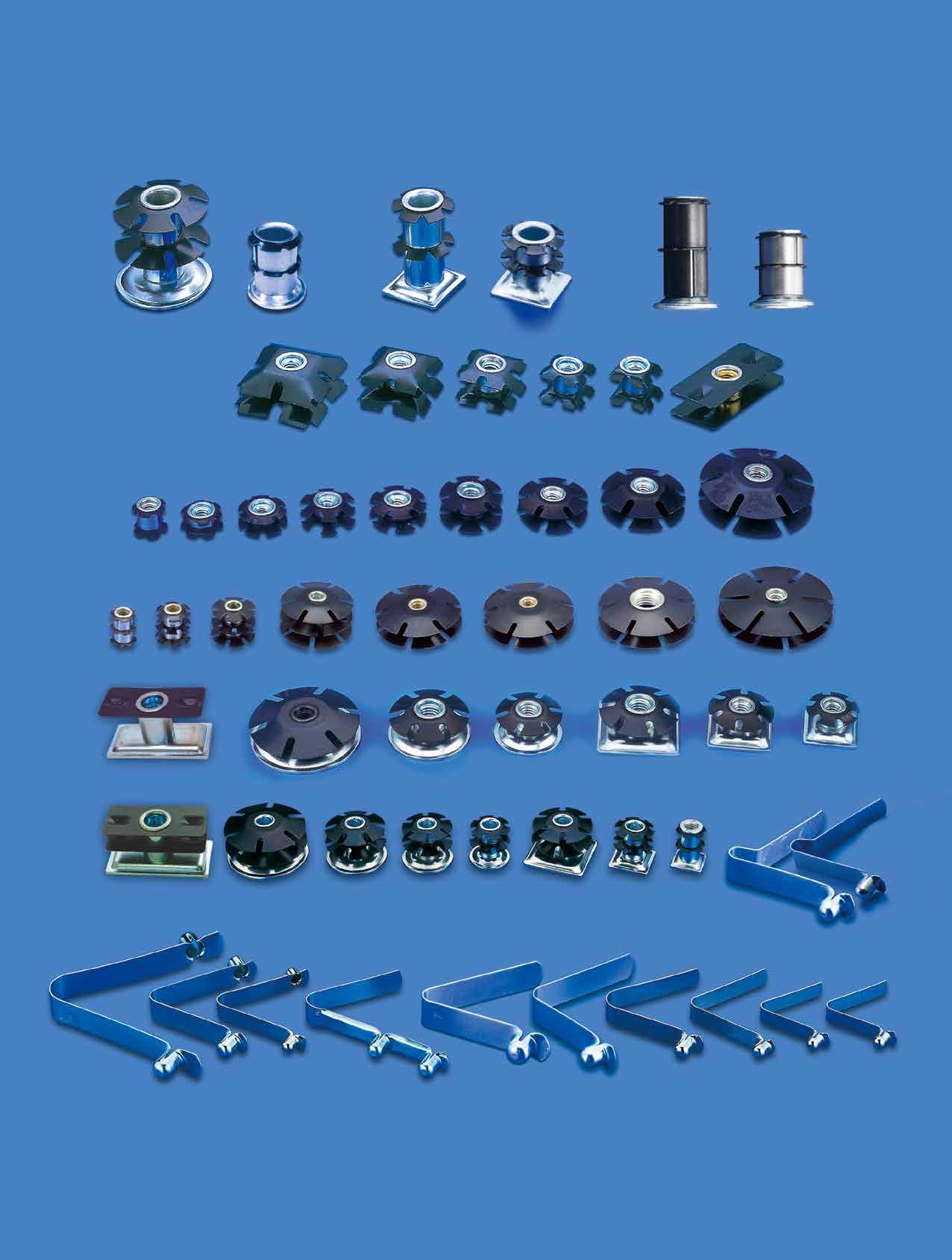
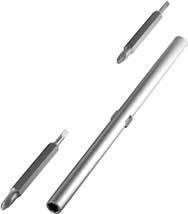

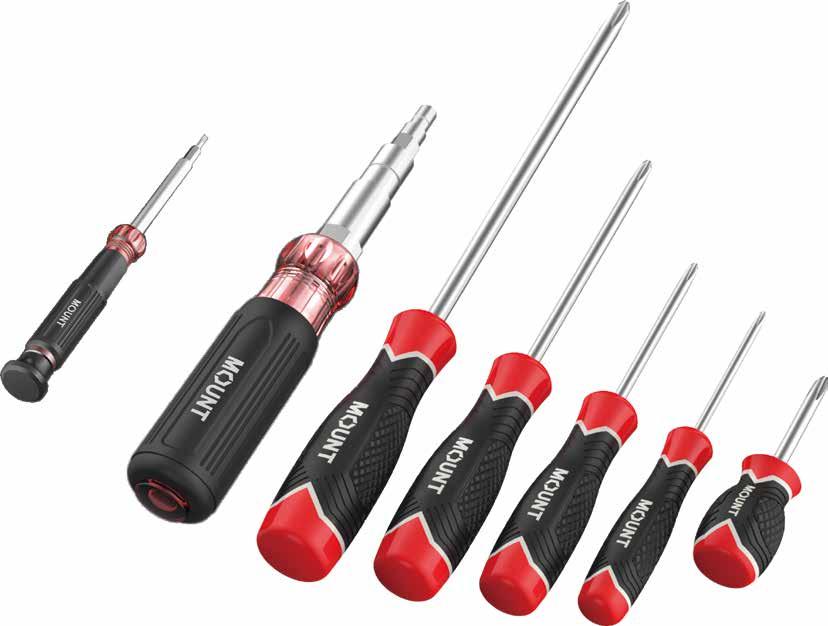





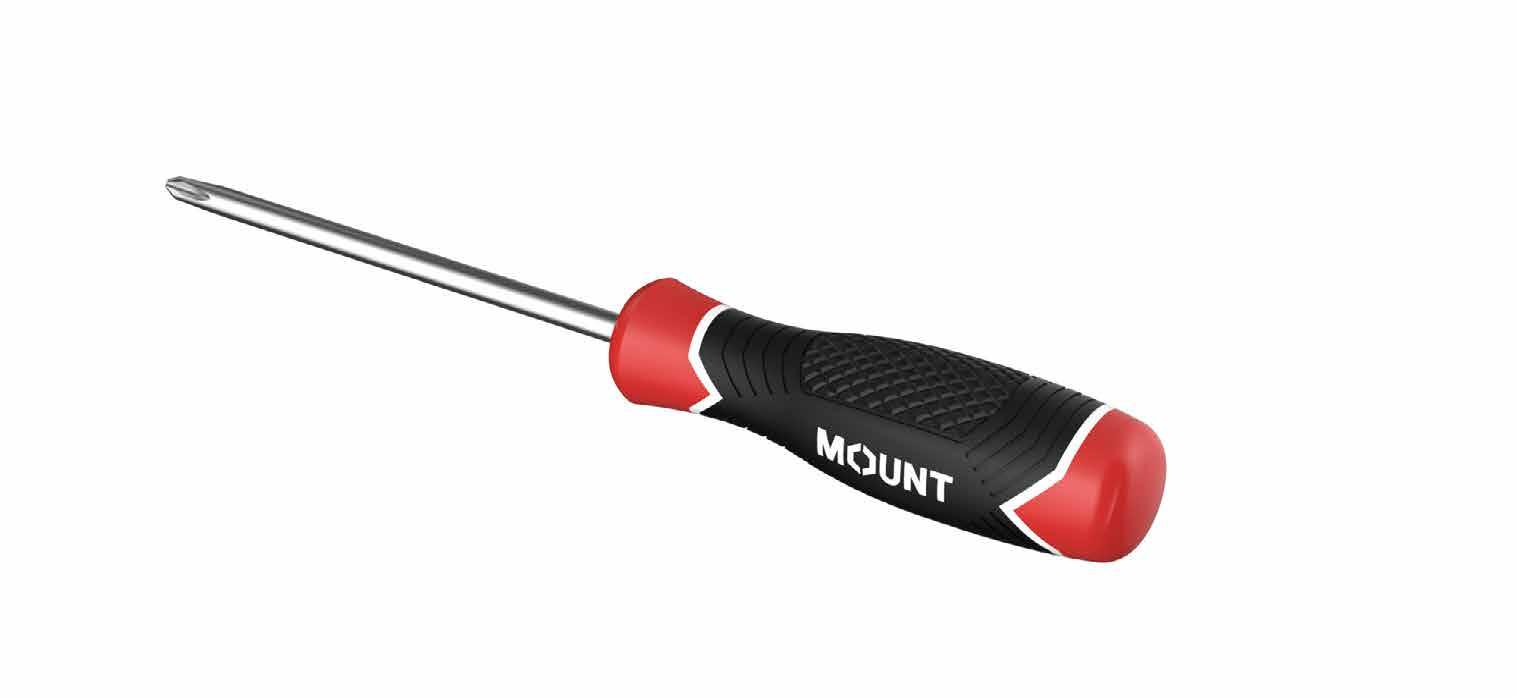

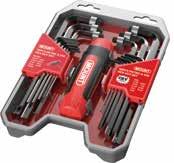

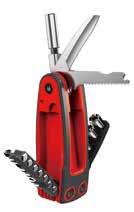
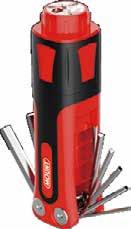

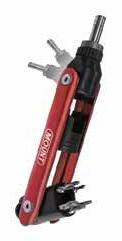
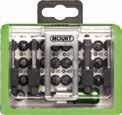
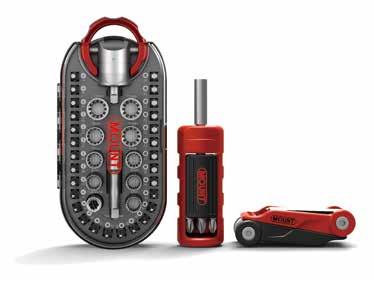
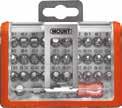
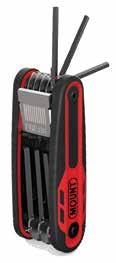

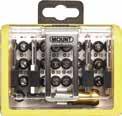
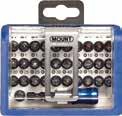
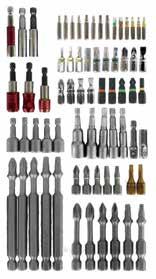



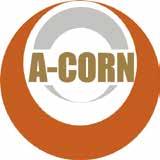


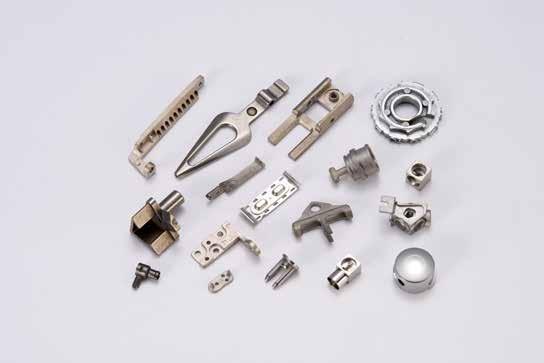
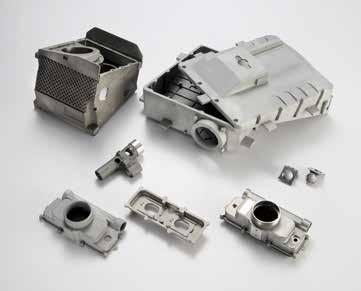
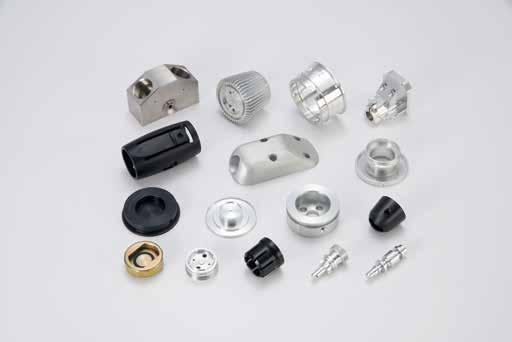
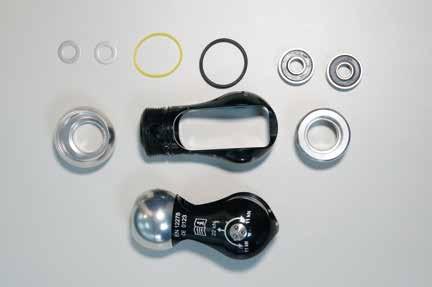
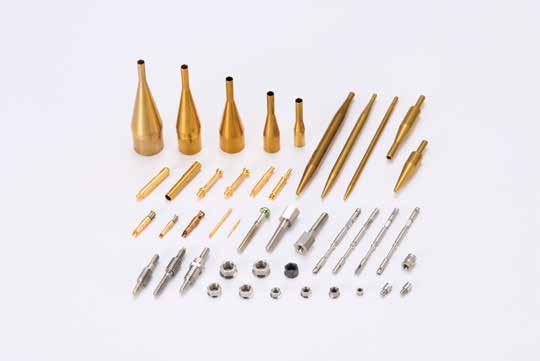
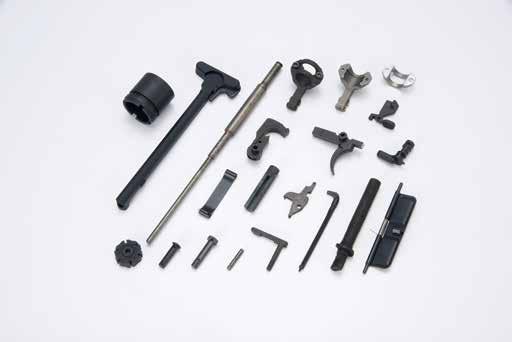
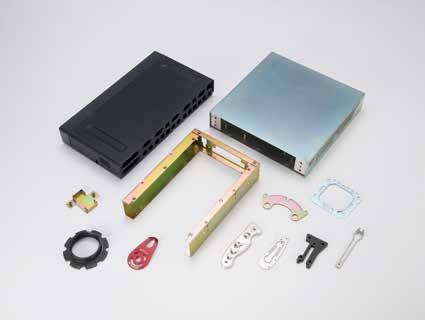
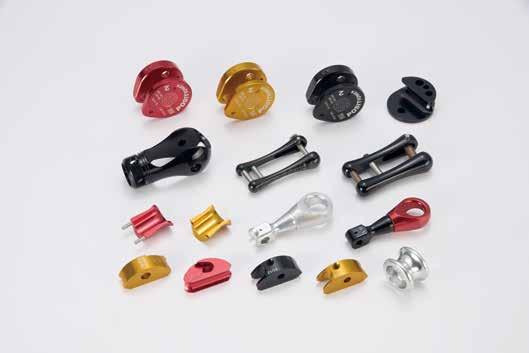




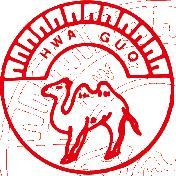

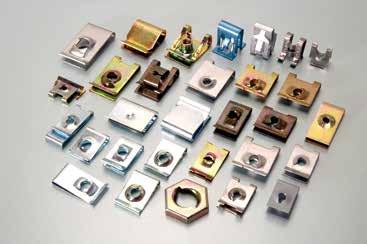

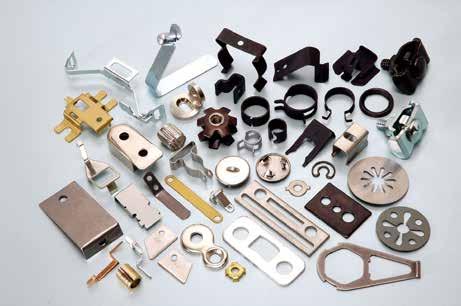





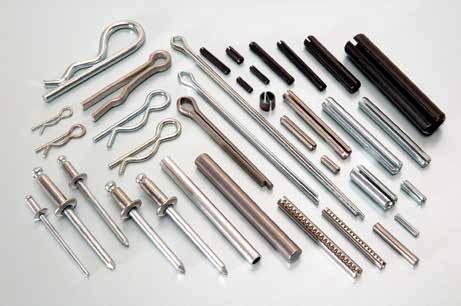


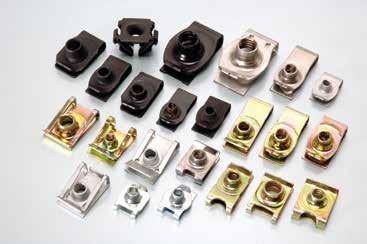


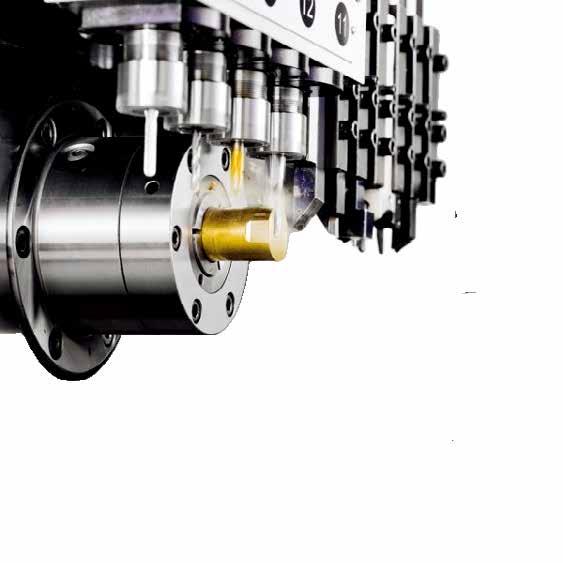
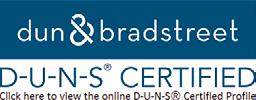
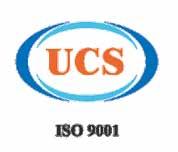







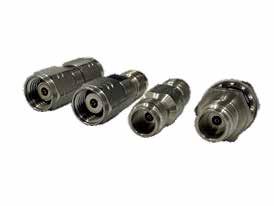
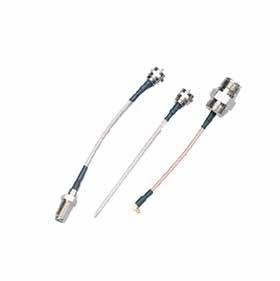

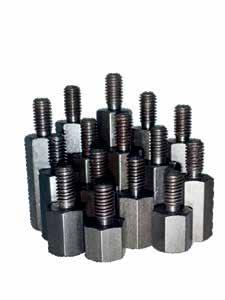

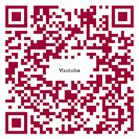

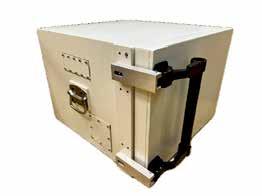



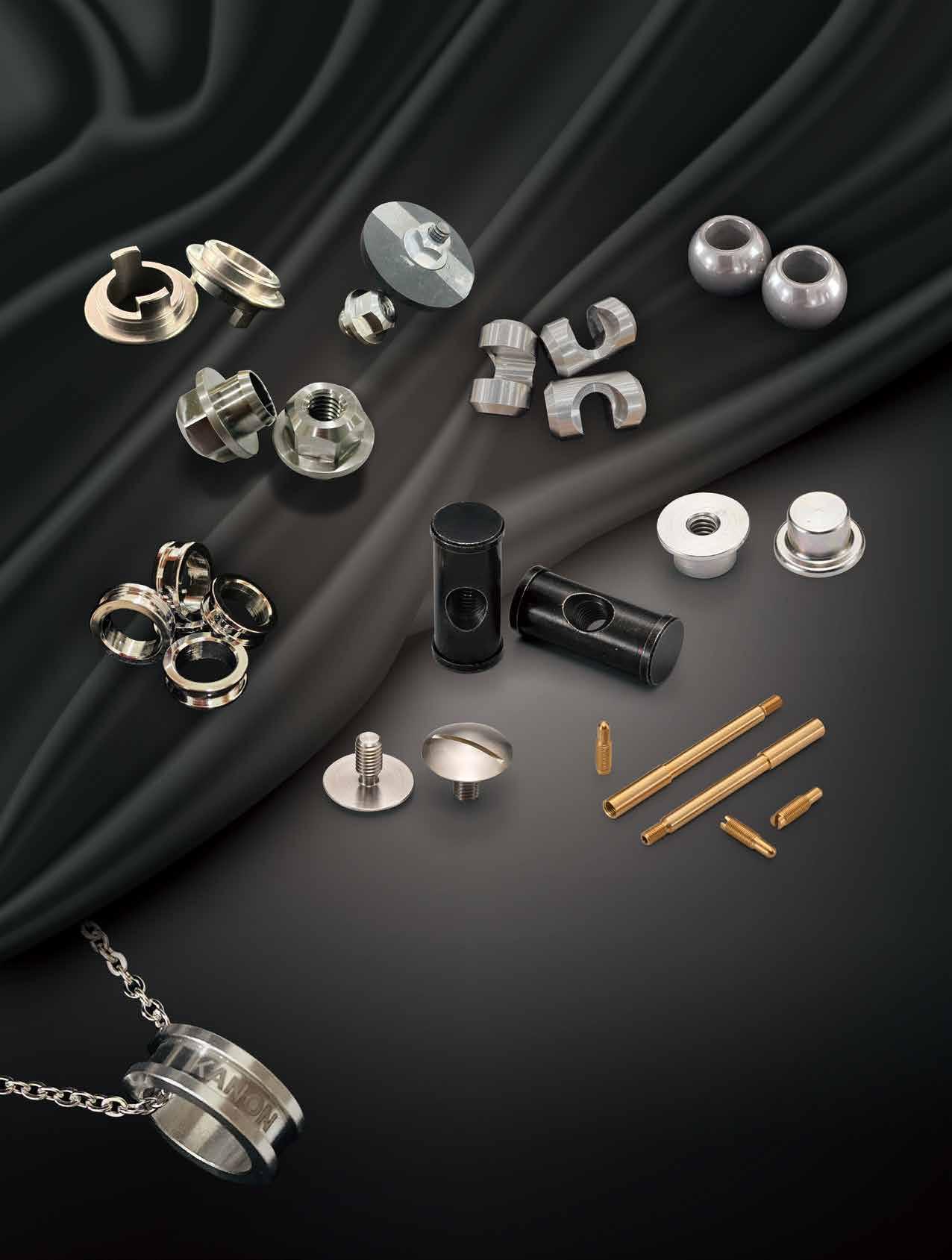


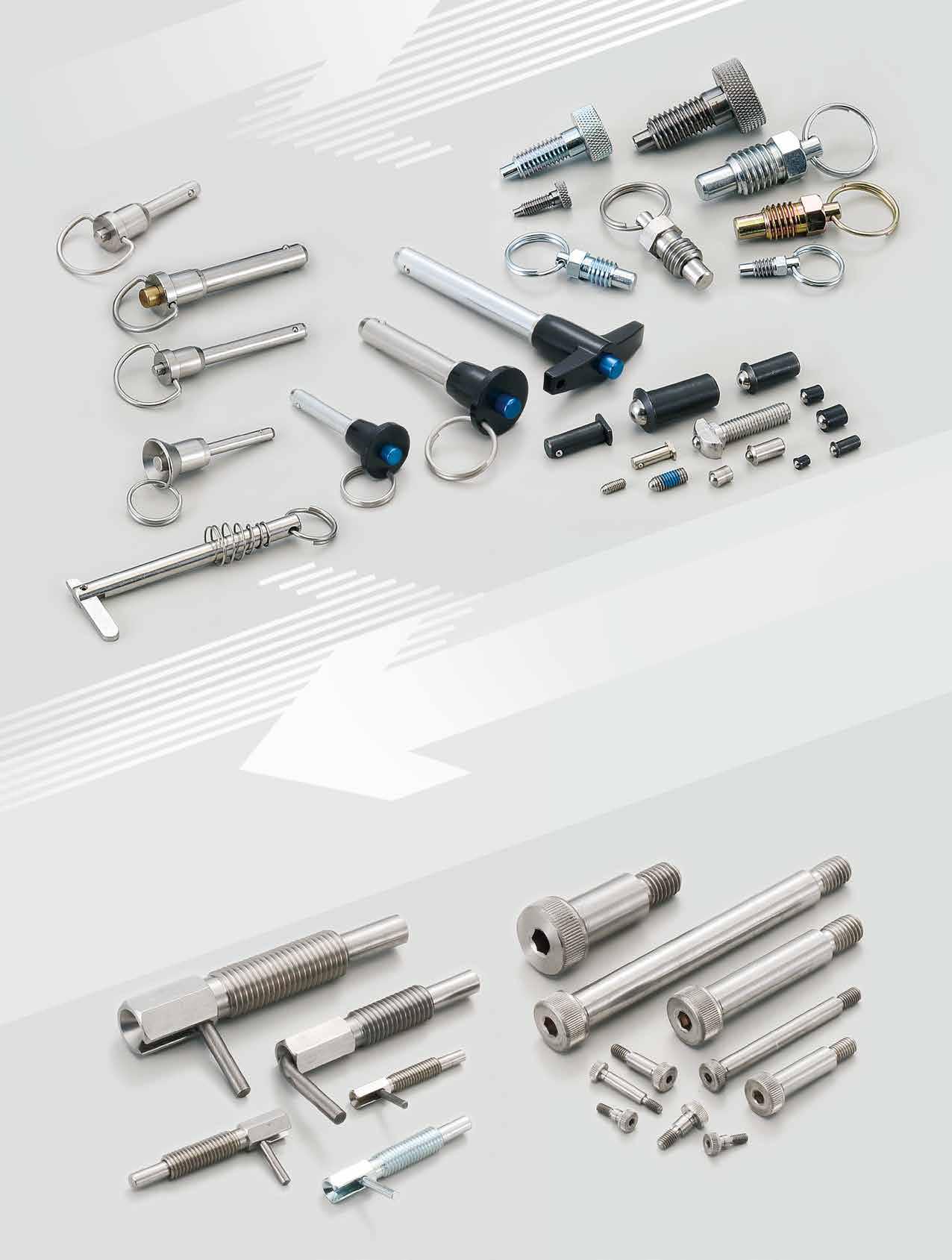










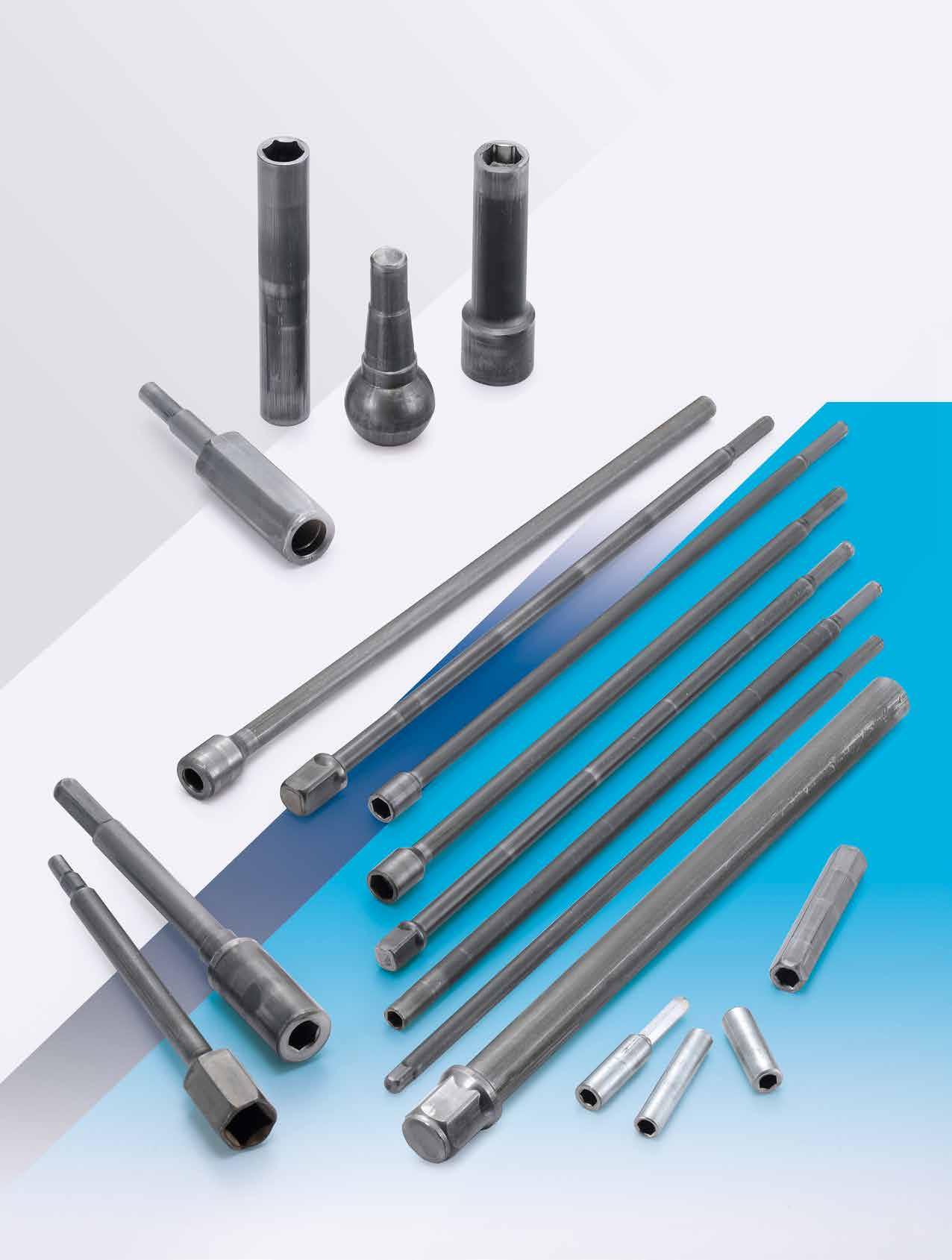


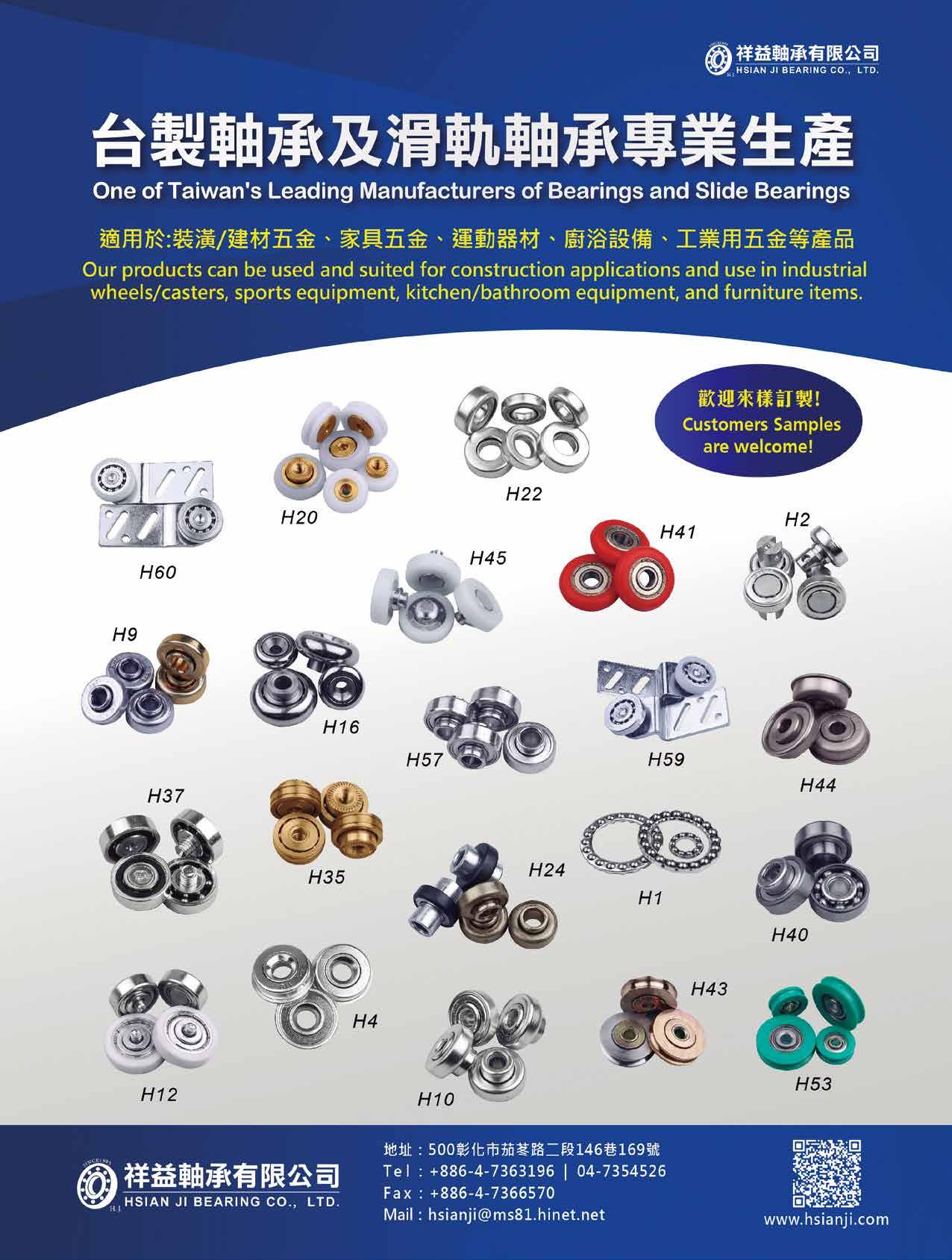
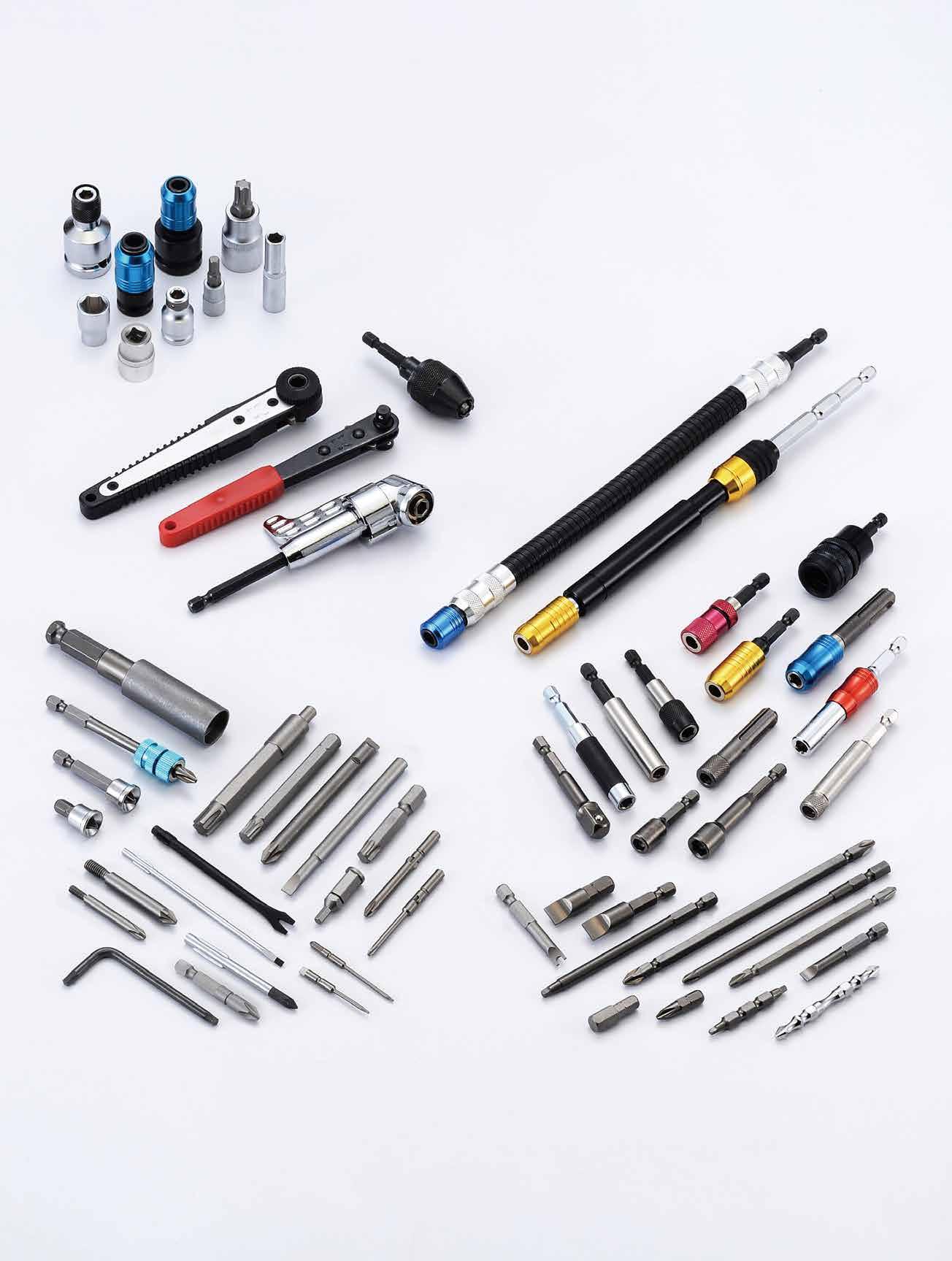




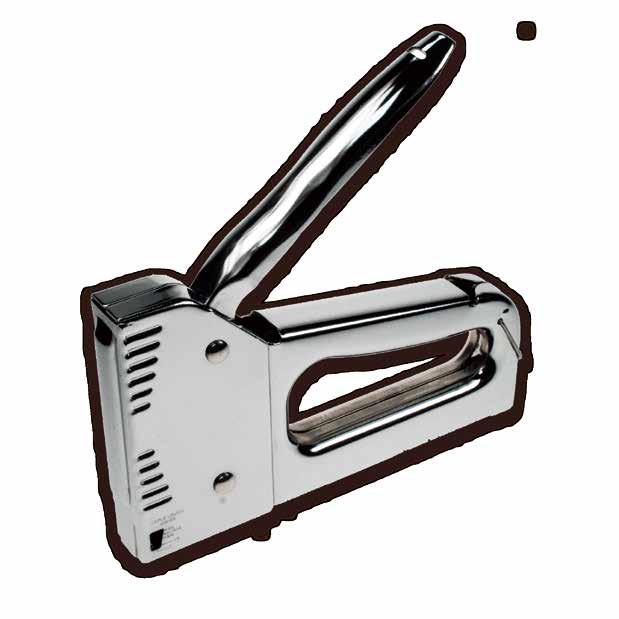




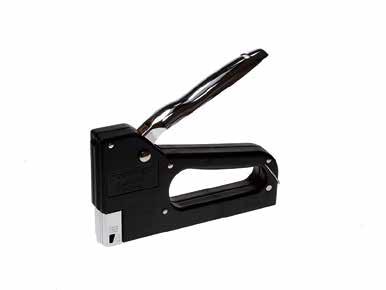

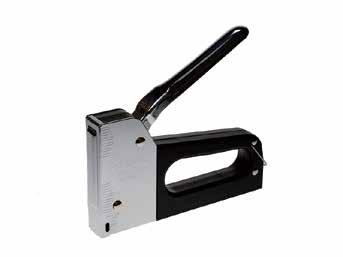
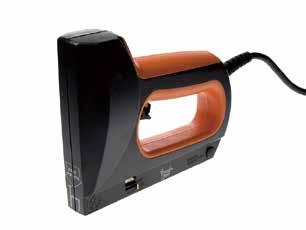




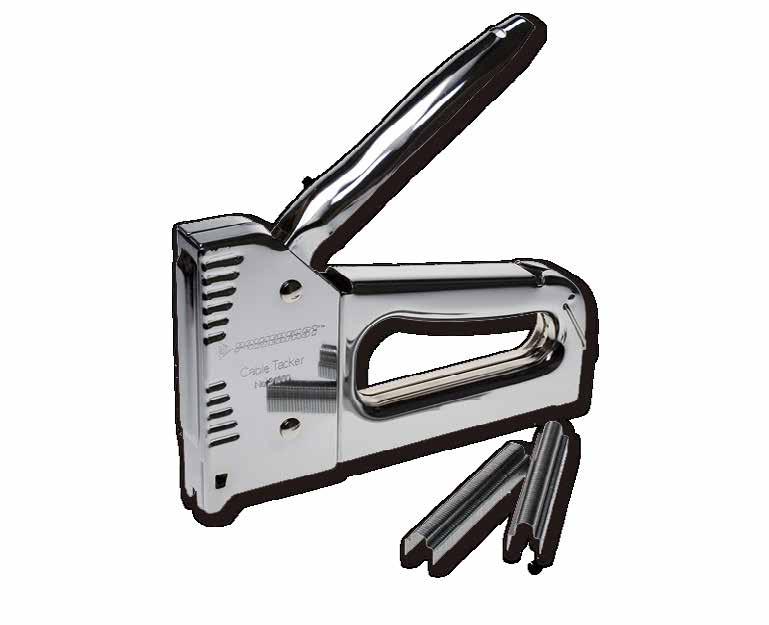











































































































































































































































































































Taiwan’s fastener, tool, and component industries have faced rising operational costs and intense low-price competition from overseas in recent years, resulting in a significant drop in revenue. Specifically, the fastener industry in Taiwan, which was originally already dealing with a 25% tariff on steel and aluminum, has seen that tariff increase to 50%. This has led to an overall revenue decline of roughly 10% for the fastener industry. Meanwhile, across different other industries, some products are currently subject to steel and aluminum tariffs of 50%, while others face the reciprocal tariff (pegged at 20% as of August 1). At the time of writing, Taiwan and the United States were engaged in new negotiations
following the 20% reciprocal tariff announcement. Because many negotiation details remain undisclosed, the outlook is still uncertain. It is too early to definitively assess the long-term impact of these developments.
These three industries largely depend on exports and have built an integrated supply chain, making them an economic driver that Taiwan takes pride in and a model for industrial development. However, there have been multiple challenges in recent years. Industry players now stand on the precipice of history. Beyond monitoring economic trends closely, it would be wise to remember this: times of drastic change in the global business environment often present the best opportunities for companies to outpace their competitors.
Looking ahead, four key challenges threaten the livelihoods of Taiwan’s fastener, tool, and component industries. First is the “Trump tariff”. Since these tariffs were announced, Taiwanese companies have been struggling and are now thinking about exploring markets beyond the United States. The era of large-volume inventories and mass orders is over; the new reality demands smaller, more diversified, agile production with quick turnaround times and rush orders. With rising tariff costs, U.S. importers are reducing their purchase volumes, inventory levels, and orders placed on Taiwan to maintain cash flow and sustain normal business operations to cope with future tariff changes. For Taiwanese suppliers, “make-to-order” production is set to become the future standard going forward.
At this moment, Taiwanese companies should avoid focusing heavily on cross-field, cross-regional, or cross-industry transformations. These approaches comparatively consume considerable time, labor, and resources—luxurious in today’s volatile environment. For example, industry insiders have told Fastener World that investing in manufacturing facilities in Southeast Asia requires at least 1 billion New Taiwan dollars—a significant cost. In such an unpredictable era, pursuing overseas diversification is not an easy path. A more advantageous approach for Taiwanese companies now is to upgrade and optimize their most competitive products, processes, business structures, and services. The current market environment favors steady, well-focused investments rather than high-risk ventures.
Second is the “exchange rate.” Over the recent years, the New Taiwan Dollar (NTD) has been one of the strongest and most rapidly appreciating currencies globally. On July 4, it briefly reached 28.8 NTD to 1 USD. Profit margins in Taiwan’s hardware component sector generally range from 10% to 15%, while the fastener industry averages around 15%. When the NTD appreciates from 32 NTD to 30 NTD per USD, it eats up a large portion of these thin margins when it comes to exporting from Taiwan. If the NTD continues to appreciate past critical levels like 30, 29, or even 27 without timely adjustment, it could trigger a wave of massive temporary business closures.
Industry players shared with Fastener World their hope that the USD/NTD exchange rate will hold steady near 32 by the year-end to help sustain operations in these three industries
Third is “CBAM” (Carbon Border Adjustment Mechanism). For the fastener industry, if the EU begins imposing carbon taxes starting in 2026, Taiwanese businesses could see their wire material costs increase by 10% to 20%. This EU carbon tax may prompt other countries to follow suit, creating even greater challenges that will be difficult to avoid. However, there is still a glimmer of hope: companies need to closely watch whether the EU will announce exemptions for downstream fastener processes from the carbon tax in the third quarter of this year.

Fourth is the “Economic Climate.” Statistics signal a global economic slowdown. Tariffs and wars have heightened economic uncertainty, dampening investment and consumer demand. Meanwhile, climate change has led to frequent natural disasters, forcing governments to redirect budgets from economic stimulus to disaster relief, further slowing growth. In the automotive market, the declining sales of gasoline-fueled vehicles have reduced demand for fasteners, tools, and components. Additionally, the shift from internal combustion engines to electric vehicles dramatically cuts the use of higher-margin fasteners used in engines, impacting fastener industry revenues.
The most effective way to revive economic growth would be through a new round of global quantitative easing—similar to what the U.S., Japan, and the EU successively implemented from 2008 to 2015—to stimulate investment and procurement across global industries.
Furthermore, while TSMC has become the frontrunner driving Taiwan’s economic growth, a key challenge for these three industries is finding ways to break into hightech supply chains—such as those for AI robotics, robotic arms, and electric vehicles—and leverage these “giants’ shoulders” to uncover new business opportunities.
Taiwan’s fastener, tool, and component industries have been exporting worldwide for over 50 years. Many companies have successfully weathered global economic downturns including the financial crisis, SARS, trade wars, the COVID-19 pandemic, and the Russia-Ukraine conflict. There is no need to view the current challenges for Taiwanese industries too pessimistically. Fasteners, tools, and components, being essential goods critical to everyday life, still have opportunities to find a turning point and thrive anew.
Copyright owned by Fastener World / Article by Dean Tseng

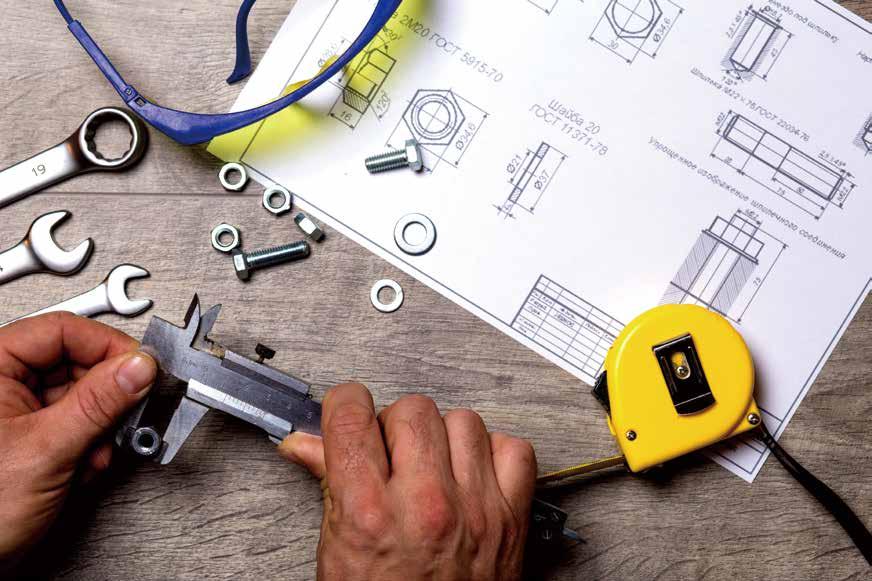


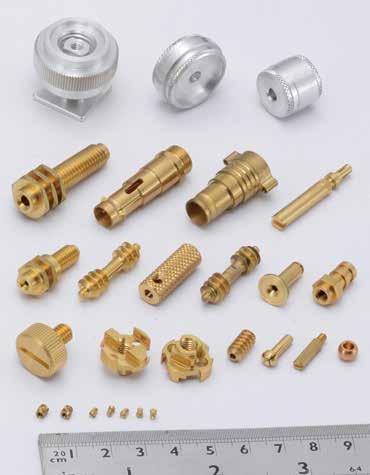


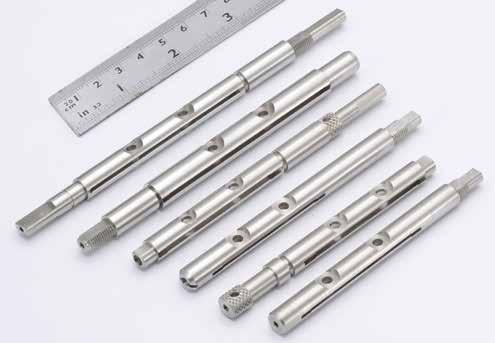



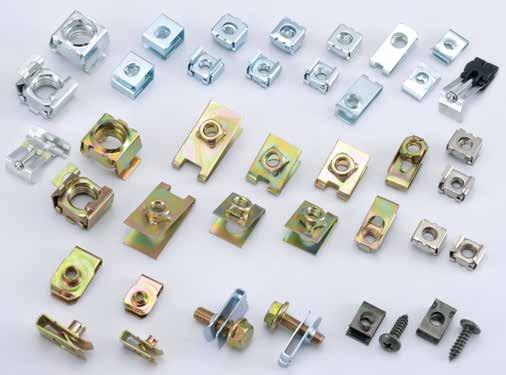



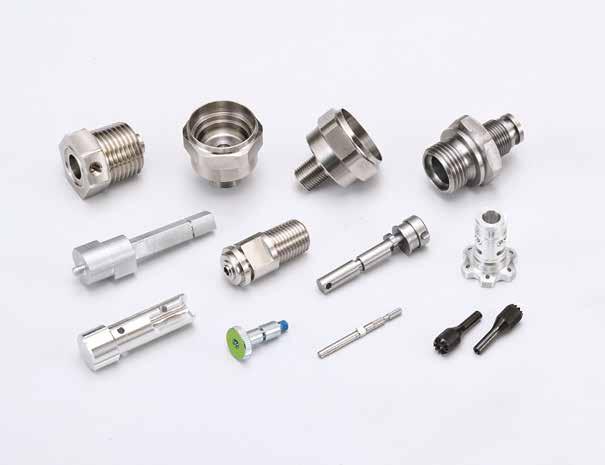


Bolt & Nut Extractor
Aiming to be the trusted partner for innovative tool solutions of its customers, Way Win Tools Trade Company, established 5 years ago, has been dedicated to the production and development of professional hand/ pneumatic/electric tools, automotive repair tools, and fastener tools. It is a rising star widely noticed in many industries that require the use of professional tools for fastening.
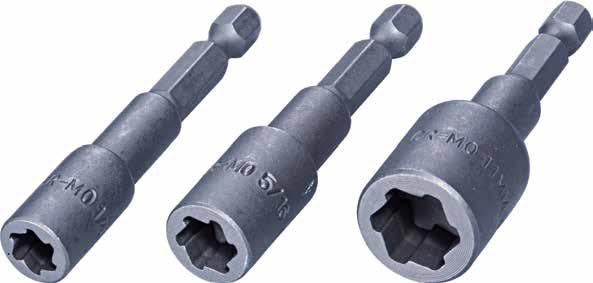
Way Win's R&D team is composed of members with more than 25 years of experience in tool manufacturing and R&D, and is able to provide the most suitable fastening tools according to the characteristics of different industrial applications and the individual needs of customers. With this highly skilled production team and a rigorous product control process, Way Win has been able to surprise the market with innovative tools every year (such as the recently launched patented Extractor Bolt & Driver Set, which can dismantle rusted and worn-out bolts and nuts). In addition to demonstrating strong product development capabilities with numerous product patents, Way Win also actively demonstrates its commitment to quality, reliability and performance to its customers.
Currently, Way Win's main products for export include sockets, wrenches, torque wrenches & accessories, vehicle maintenance tools, hexagonal wrenches & screwdrivers, pliers, vises, clamps, power tools, pneumatic tools, fasteners & accessories. With a production capacity of 20 containers per year, the company serves customers worldwide.

"We have been working hard to build our brand value through our innovation capabilities and partnerships with global customers, and to enable our customers to continue to play a leading role in the highly competitive marketplace. Meanwhile, innovation is at the core of our corporate development, enabling us to help our clients accomplish and even exceed their goals, and transform intangible ideas into endless business opportunities. On the basis of trust, innovation and success sharing, providing customers with the most complete product solutions is the ultimate mission we pursue,” said President Morris Chen.
In response to the ever-changing demands of customers, Way Win emphasizes on product quality, functionality, and the introduction of new technologies, which has enabled it to successfully penetrate into the automotive, construction, and DIY industries in critical markets such as Europe, the U.S., and South Asia. Currently, 40% of its products are sold to the U.S., 30% to Scandinavia, 20% to Israel, and 10% to India, and it looks forward to developing more customers from emerging markets in the future.
President Chen added, “Our products have not been sold to emerging markets such as the Middle East, North Africa and Central & South America at this stage, but a number of our patented power/pneumatic tools and their accessories and fasteners are well suited to the application needs of the industries in these markets, which can help local customers quickly connect with the world. In the scenario where U.S. tariffs and exchange rates continue to affect the global economy, we will endeavor to promote high quality, high performance and innovative products to customers in the global market.”
Contact: Morris Chen, President Email: waywintoolsk@gmail.com
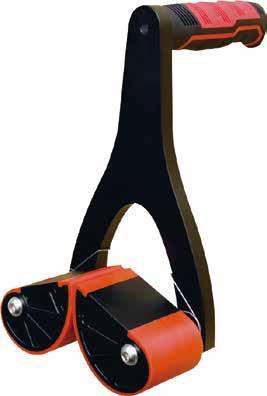
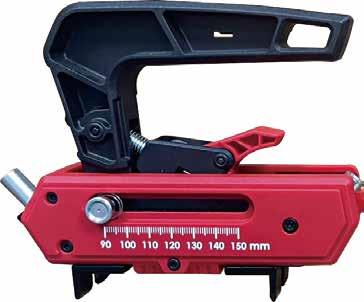


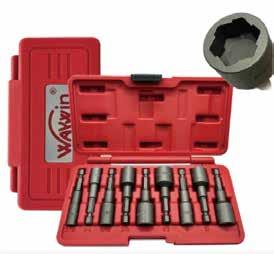

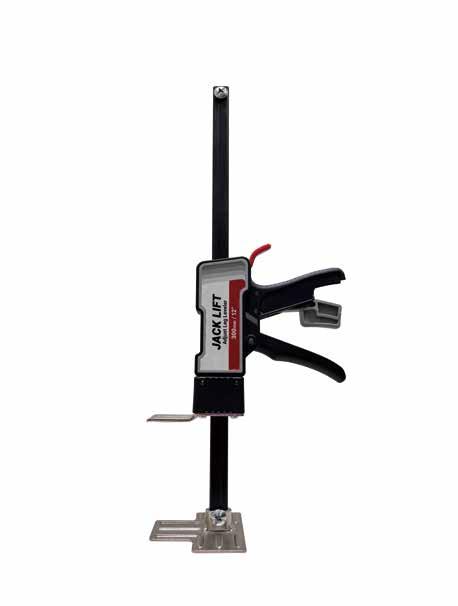
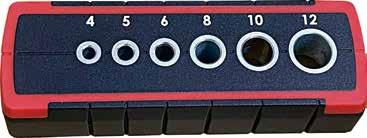

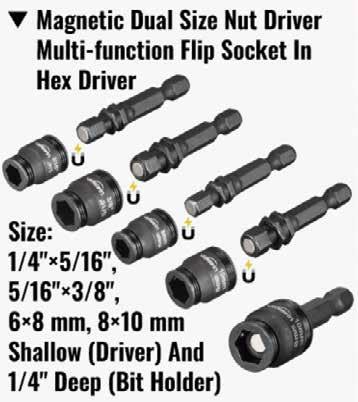
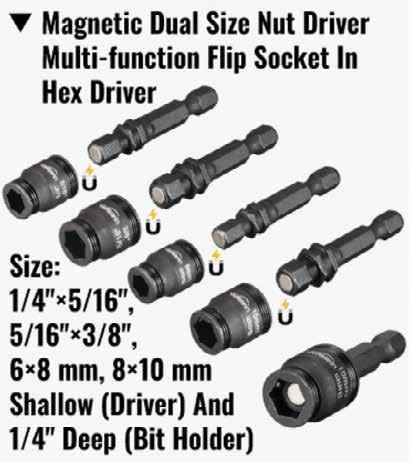

HAI Triumphs at 2025 Association and Institute Awards, Secures Best Learning Program 愛爾蘭五金協會榮獲「2025協會與學會獎」下的「最佳學習計劃」大獎
Hardware Association Ireland (HAI) has triumphed at the Association and Institute Awards 2025, winning the prestigious Best Learning/ Professional Development Program award. The accolade recognizes the excellence and impact of HAI’s Certificate in Hardware Retail & Merchanting and its comprehensive training services that support the Irish hardware and building materials sector. These services include classroom and virtual workshops as well as customized training solutions.

The award reflects the dedication and vision of the HAI team, alongside the collaboration of member companies, trainers, and industry partners contributing to the success of HAI’s programs. The judges praised HAI’s innovative approach, highlighting the unique requirement mandating students to engage in learning reflection with active mentor and company involvement throughout the course—a model they believe could be replicated in other sectors.
In addition to this major win, HAI was shortlisted for Best Association of the Year, with judges commending its strong community connections, impressive growth, and a wide range of member services. The association’s leadership and positive impact on Ireland’s hardware sector were also recognized. HAI expressed gratitude to the awards organizers and looks forward to continuing its commitment to raising professional standards and providing accessible, high-quality training to the industry.
■
2.0 ■ Trump Tariffs Drive Up Power Tool and Fastener Prices, Impacting DIYers and Professionals
The reintroduction and escalation of tariffs under President Donald Trump’s 2025 trade policies have significantly increased the cost of imported power tools in the United States. These tariffs, ranging from 10% to as high as 50% on various imported goods including power tools, have directly contributed to price hikes imposed by major manufacturers. As a result, power drills and other common electric tools have become notably more expensive for both professional contractors and DIY enthusiasts.
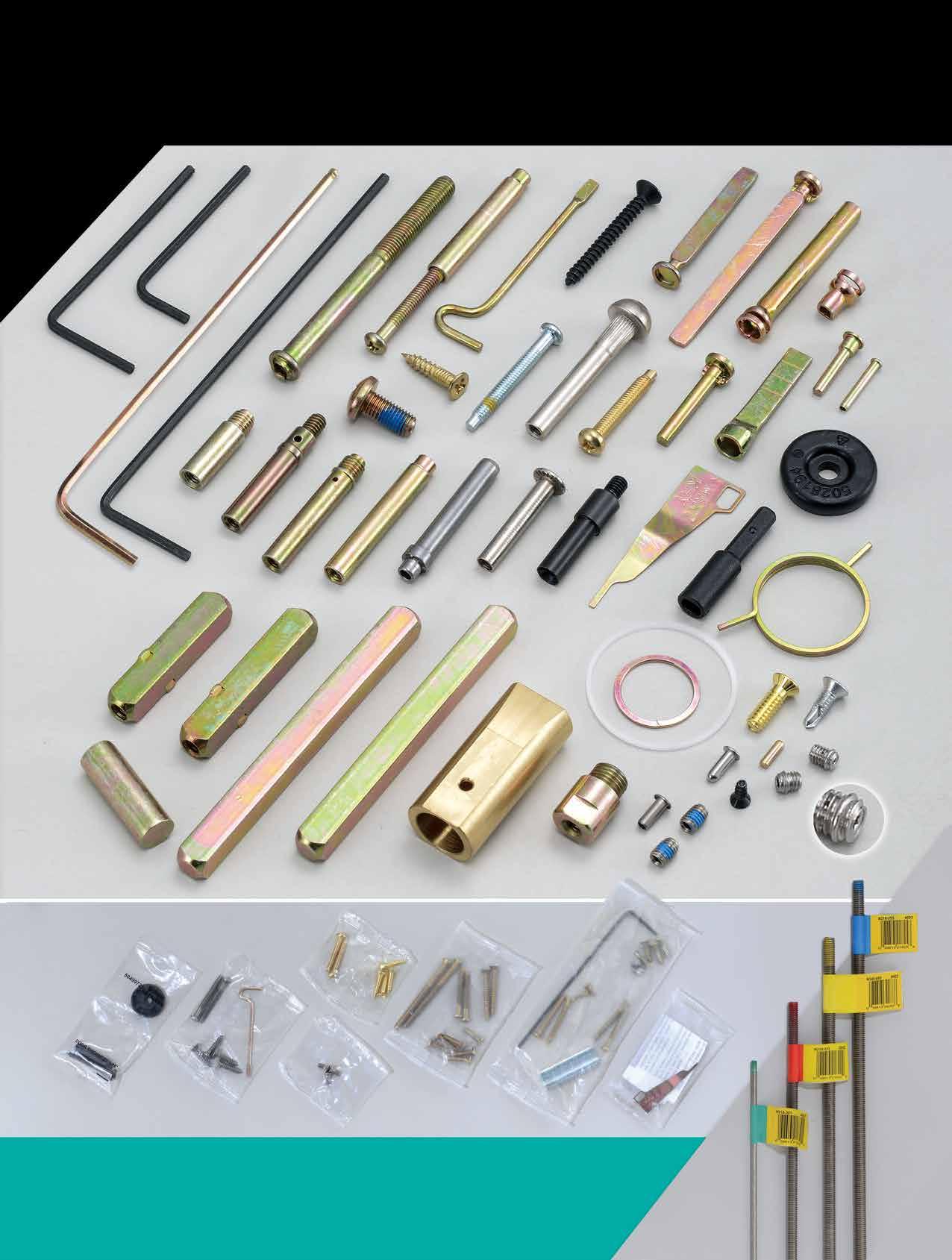
Manufacturers are passing higher import duties onto consumers, making routine repairs and home improvement projects costlier. Many brands have cited the unpredictability and rapid changes in tariff policies as challenges in setting stable prices. The increased costs are compounded by supply chain disruptions already impacting the industry. Retailers warn that these price increases could curb demand and slow market growth in power tool sectors.
Experts note that tariffs aimed at reducing trade deficits have instead pushed up prices for everyday products, often accelerating inflationary pressures on consumers. The power tool industry remains on alert as ongoing trade tensions and potential new tariffs threaten further cost increases.
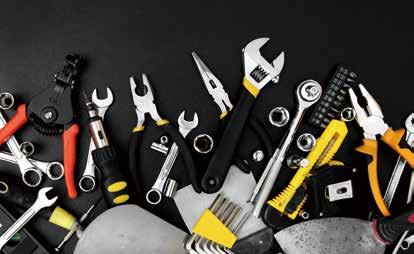
The tariff has also created uncertainty and pricing difficulties for the fastener wholesale industry. Craig Christensen, president of Trinity Fastener, said that although current inventory cushions the immediate impact, prices may still rise in the future. Importers have already adjusted prices in advance, causing market volatility that makes business management and forecasting very challenging. He hopes the U.S. and its trade partners can reach a stable agreement and establish a reasonable pricing standard together.
墨西哥製造商因川普關稅受益,加速供應鏈區域化轉型
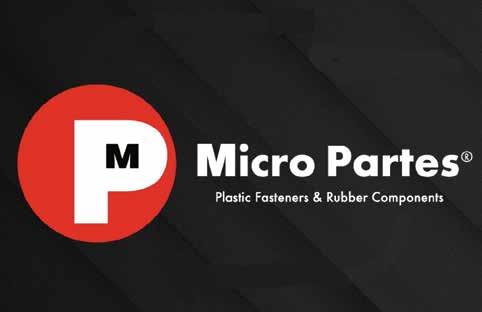
Jorge H. Martínez, CEO of Micro Partes, a small manufacturer in Monterrey, Mexico, credits the Trump administration’s tariffs for boosting his business amid changing trade dynamics. While many feared tariffs would disrupt markets, Martínez saw an opportunity to thrive by supplying small plastic parts previously imported largely from Asia.
With tariffs raising costs on Asian imports, companies increasingly seek North American suppliers to comply with USMCA rules and avoid penalties. Martínez’s company produces essential industrial components like clips, fasteners, and grommets—items vital to assembly lines. To meet demand, Micro Partes invested in new machinery and local resin suppliers, expanding its production capacity.
The tariffs encouraged nearshoring, prompting many businesses to reduce reliance on Asian supply chains and favor regional sourcing. As a result, Micro Partes has seen significant growth, including orders from multinational firms such as LG and Samsung operating in Mexico. This trend underscores a broader shift to strengthen North American manufacturing networks.
川普關稅重塑全球經濟格局
Trump's high tariffs are significantly reshaping global supply chains and international trade. Since early 2025, the average U.S. import tariff has surged to about 15%, hitting an 80-year peak, forcing multinational companies to revise production and logistics. Industrial supplier Fastenal has to split imports into multiple shipments, resulting in higher supply chain costs; Nike expects to pay one billion US dollars in import taxes this year, is working on cost reduction, and plans moderate price increases.

Tariffs fuel inflation and strain U.S. trade relations, pushing Europe to seek alternative markets and bypass the U.S. Emerging supply chains are relocating from China to Southeast Asia and Mexico, marking a profound transformation in the global trade order. Although tariffs have increased U.S. government revenue, manufacturing investments and employment have not improved as expected. The long-term consequences remain uncertain amid ongoing economic shifts.
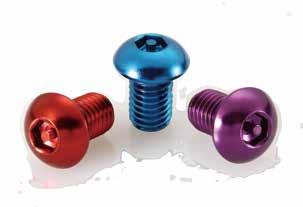
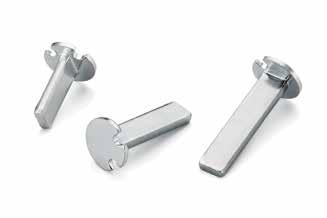
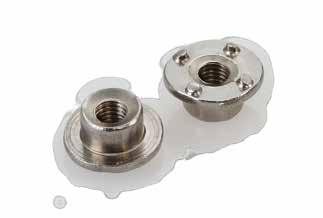
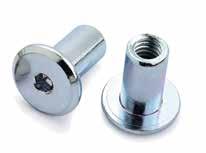
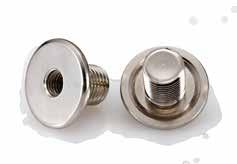


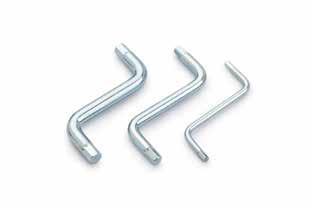

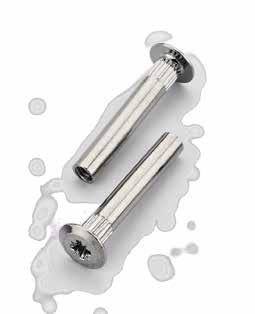


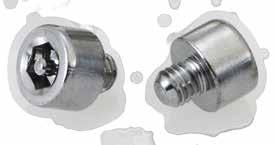


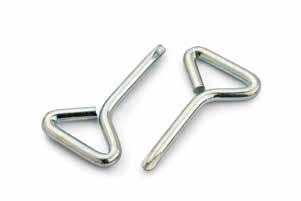

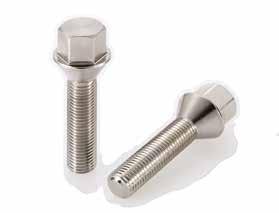
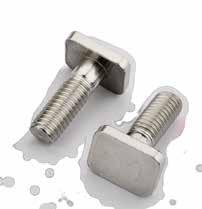
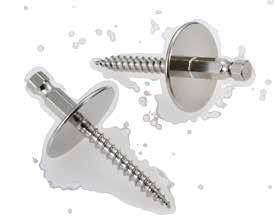

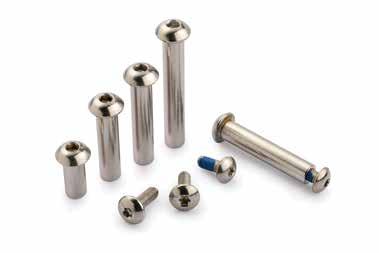




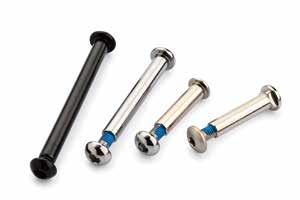
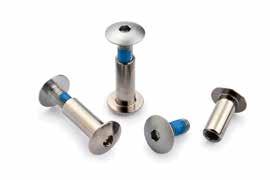
Trump Tariffs Slash GM and Stellantis Profits, Impacting the Auto
川普關稅削減通用與 Stellantis利潤 汽車產業受創
General Motors (GM) reported a significant decline in its secondquarter profits, falling over 34% compared to last year, primarily due to USD 1.1 billion in losses caused by tariffs imposed by the Trump administration. GM's net earnings dropped to USD 1.9 billion, while sales slightly increased by 7.3%. The company expects tariff-related costs to total between USD 4 billion and USD 5 billion for 2025. GM CEO Mary Barra announced plans to invest USD 4 billion in U.S. plants to increase production and shift production of key models such as pickups and SUVs back to the U.S., aiming to reduce tariff exposure.
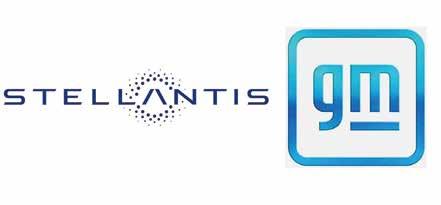
Similarly, Stellantis, owner of brands like Chrysler, Jeep, and Dodge, revealed tariff costs of around €300 million (USD 350 million) in the first half of 2025. The tariffs have caused production halts and a 10% decline in U.S. sales for Stellantis during the second quarter. Industry experts warn these tariffs are squeezing automakers' profitability, as companies absorb costs without immediately raising vehicle prices.
Tariff Policies Reshape Hand Tool Supply Chains, Opening New Opportunities for Taiwanese Manufacturers
關稅政策重塑手工具供應鏈
In 2025, ongoing U.S. tariff policies and appreciation of the Taiwan Dollar are challenging Taiwanese hand tool makers, but also creating new opportunities from redirected orders. Major Taiwanese companies like Basso Industry, Chiu Ting Machinery, and KHgears International are witnessing order shifts due to rising tariffs on China and increased market uncertainty. The hand tool supply chain is mainly centered in China and Taiwan, with the U.S. as the primary sales target market. The recent tariff tensions have prompted American customers to reconsider their heavy reliance on Chinese suppliers. As a result, some new project models and replacement parts are being relocated to Taiwan and Vietnam.
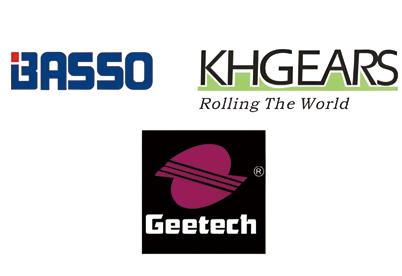
Basso Industry sees no clear order increases yet but expects contributions from new electric tool products by year-end. KHgears International's Vietnam plant benefits from supply chain restructuring, gaining orders from Stanley Black & Decker. Chiu Ting Machinery notes that moving production from China back to Taiwan could present growth opportunities if tariffs on Taiwan remain reasonable.
中國專家表示高勞動成本阻礙工具製造業回流美國
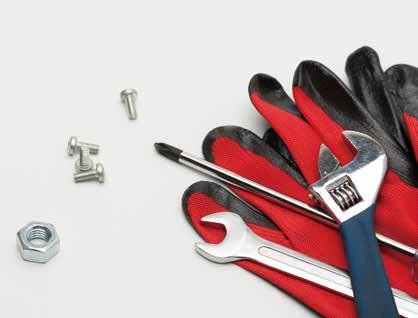
According to Chinese executives, tool manufacturing will not return to the U.S. due to high labor costs. GreatStar Industrial's senior VP Li Feng noted U.S. labor costs are several times higher than in China or Vietnam. After acquiring U.S. hand tool company Arrow Fastener in 2017, they observed U.S. worker costs are prohibitively expensive. Chervon Holdings' CEO Pan Longquan said manufacturing in the U.S. would increase production costs by at least 50%. The U.S. lacks core component manufacturing and suitable lithium battery supply chains for power tools. Further, U.S. import tariffs on industrial materials push costs even higher. Tools made in China or Vietnam sell for tens of dollars in the U.S., while U.S.-made tools cost hundreds, making reshoring unfeasible. To cope, Chinese toolmakers like Chervon and GreatStar are expanding production in Vietnam and building inventories in the U.S. Vietnam factories aim to meet U.S. demand while China focuses on exports to Europe and other markets.

復盛應用布局手工具市場,目標營收突破百億元
Fusheng Precision, a Taiwanese golf equipment OEM, has officially acquired Proxene Tools this year and is actively expanding into the hand tool market. Leveraging Proxene Tools as a key base, the company plans to integrate group resources and aggressively pursue a hand tool business revenue exceeding NTD 10 billion. It is currently in talks with two to three major Taiwanese hand tool manufacturers for potential cooperation, with one deal expected to be finalized by the end of the year.
The company revealed it started developing titanium alloy hand tools five years ago, which now contribute nearly 10% of its revenue. By forming alliances with other industry players, Fusheng Precision aims to capture at least 10% market share in Taiwan's hand tool sector, whose annual output value exceeds NTD 100 billion. The strategy centers on resource and technology integration to scale operations and enhance global competitiveness.

崧騰手工具訂單穩定,市場環境充滿不確定性

Despite ongoing global economic uncertainties and tariff pressures, Solteam Incorporation, a notable Taiwanese manufacturer specializing in power module mechanical components, reports stable hand tool orders with a visibility of approximately 3 to 4 months. Currently, shipments slightly exceed customer orders as key clients continue to maintain steady production levels with inventories remaining at historically low levels. This cautious inventory management reflects concerns about economic volatility and fluctuating demand, leading to some variability between order and shipment volumes. Nevertheless, urgent reorder demand persists, underpinning a baseline level of activity within the hand tools segment. Solteam Incorporation's management remains attentive to market signals and continues working closely with customers to balance supply and demand effectively amid these challenges. The company's ability to sustain order stability despite macroeconomic headwinds highlights its resilient operations and solid positioning in the industrial components market.
Basso
鑽全受關稅及匯率影響短期謹慎看待
Basso Industry, a leading Taiwanese manufacturer specializing in nail guns, expressed a cautious short-term business outlook due to ongoing tariff issues and the sharp appreciation of the New Taiwan Dollar. The typical peak season effect for orders in July and August has not yet materialized. However, new development projects for electric tools continue steadily, with research and development expenses indicating an expected increase in electric tool contributions in the fourth quarter. The international tariff situation has prompted adjustments in major global manufacturers' supply chains, creating opportunities for Basso Industry to develop new products and attract new customers.
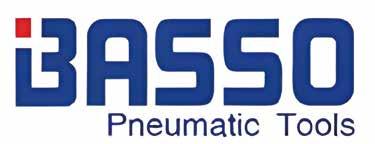
As of the end of May 2025, the company's consolidated revenue totaled NTD 1.298 billion, matching last year's level. While the company proactively converted US dollars to New Taiwan Dollar at its previous peak exchange rates (NTD 32-33), foreign exchange losses may still arise due to currency fluctuations. The recent rise of the New Taiwan Dollar exchange rate to NTD 29.5 to USD 1 may also affect gross margins, though these depend on product mix and material costs.
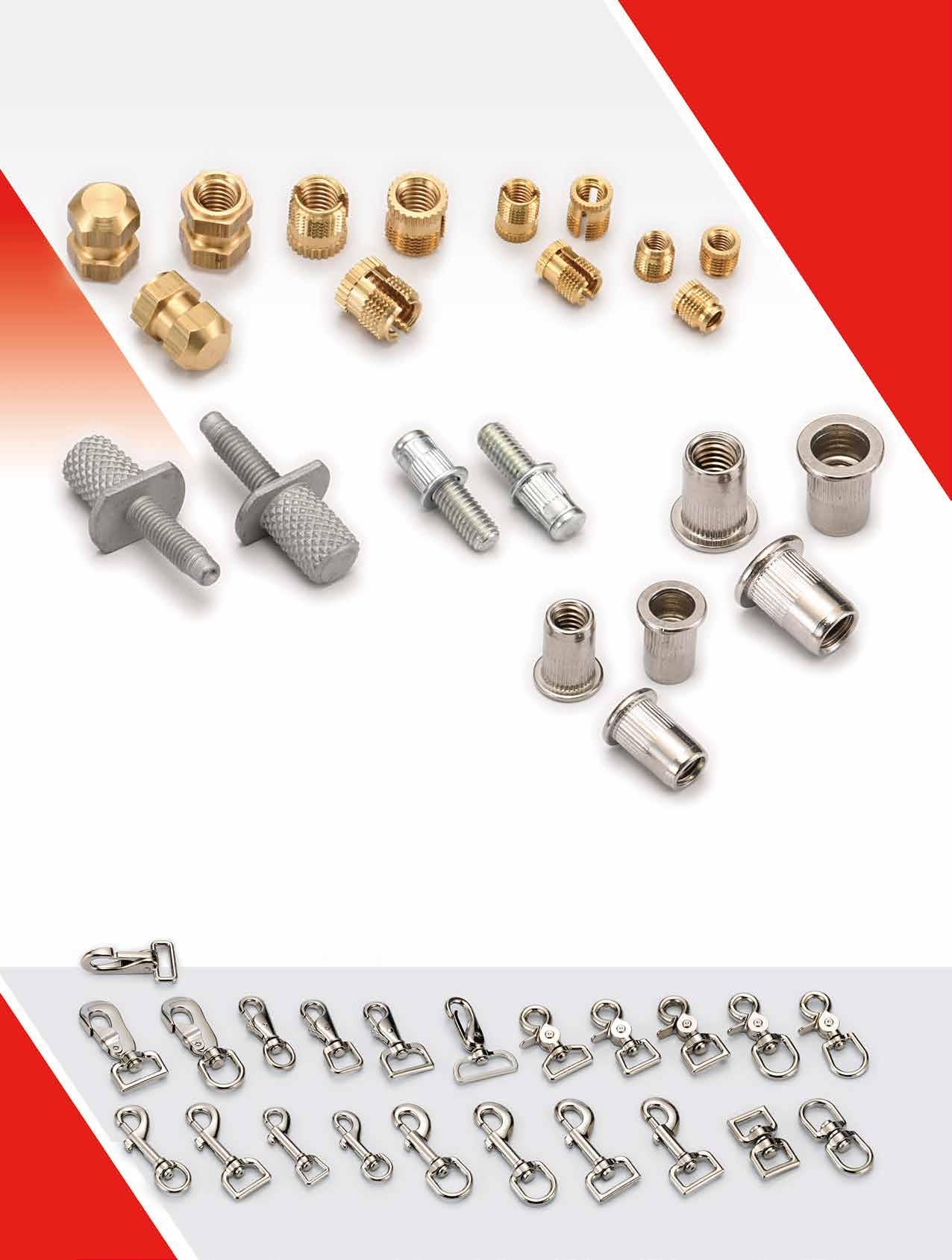
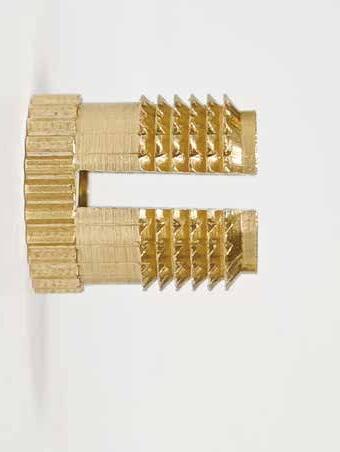
Acme Tools擴展版圖開設 明尼蘇達州伊根新門市

Grand Forks-based Acme Tools is expanding its footprint with the opening of a new retail location in Eagan, Minnesota. The new store aims to better serve professional contractors, industrial users, and DIY customers in the Twin Cities metropolitan area by offering a broad selection of power tools, hand tools, accessories, and tool storage solutions.
Acme Tools is recognized for its extensive inventory of quality brands and knowledgeable staff committed to customer service. The Eagan store opening marks the company’s continued growth strategy to increase accessibility and convenience for customers through physical locations in key regional markets. The company also plans to leverage this expansion to strengthen local partnerships and provide expert support for trades requiring reliable tools. This new site complements Acme Tools’ existing network and highlights its ongoing commitment to meeting the diverse needs of professional and hobbyist tool users.
Snap-on公司公布2025年第二季財報

The company reported stable net sales of US $1.179 billion, matching the previous year’s figures. However, operating earnings before financial services declined to US $259.1 million, representing 22.0% of net sales, down from 23.8% last year. Diluted earnings per share fell to US $4.72 from US $5.07 in Q2 2024.
Sales growth was mixed across business segments. The Tools Group and Repair Systems & Information Group saw sales increases of 1.9% and 2.3% respectively, driven mainly by the U.S. market. Conversely, the Commercial & Industrial Group experienced a 7.6% sales decline due to weaker activity in Asia Pacific and Europe.
Snap-on’s CEO Nick Pinchuk remains optimistic, highlighting the company’s focus on product innovation, strengthening dealer networks, and strategic investments to drive future growth despite market challenges.
Grainger公司任命 Melanie Tinto

Grainger, a leading distributor of maintenance, repair, and operating products, has appointed Melanie Tinto as Senior Vice President and Chief Human Resources Officer, effective April 28, 2025. Melanie will join the Grainger Leadership Team and oversee all HR strategies, including talent management, succession planning, compensation, organizational performance, and benefits. Melanie brings over 30 years of human resources experience, having previously served as CHRO at WEX, where she transformed HR into a strategic partner. She also held senior roles at Medtronic, HewlettPackard, Walmart, and Bank of America. Grainger's Chairman and CEO, D.G. Macpherson, highlighted that Melanie's leadership will support Grainger's culture of engagement and development, ensuring every employee has opportunities to grow and succeed. Melanie will relocate to Chicago later in 2025 as she takes on this key leadership position.
Grainger Downgraded by Wolfe Research Amid Tariff Concerns and Slowing Momentum
因關稅壓力與動能放緩,Grainger 公司遭 Wolfe Research下調評級

Grainger was downgraded to "Underperform" by Wolfe Research in April 2025. Wolfe Research cited concerns over new U.S. tariffs that could pressure Grainger's import-heavy cost structure, potentially compressing profit margins for the full year 2025. Although Grainger attempts to offset tariff impacts through price increases and enhanced productivity, Wolfe Research remains cautious about the company achieving the higher end of its operating margin guidance of 15.1-15.5%. The downgrade reflects a tough setup ahead of Grainger's first-quarter earnings report. Despite strong fundamentals, including a gross margin of 39.36% and a long dividend streak, tariff risks and slowing momentum contributed to the rating cut, signaling investor caution amid these challenges.
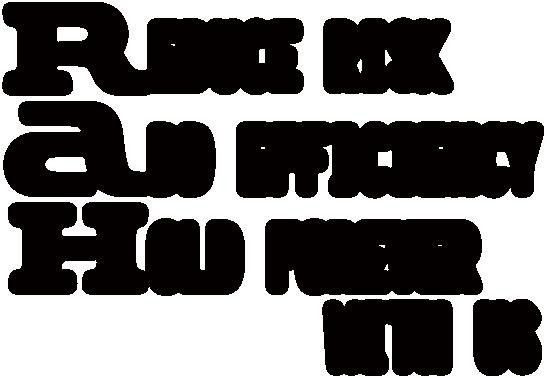
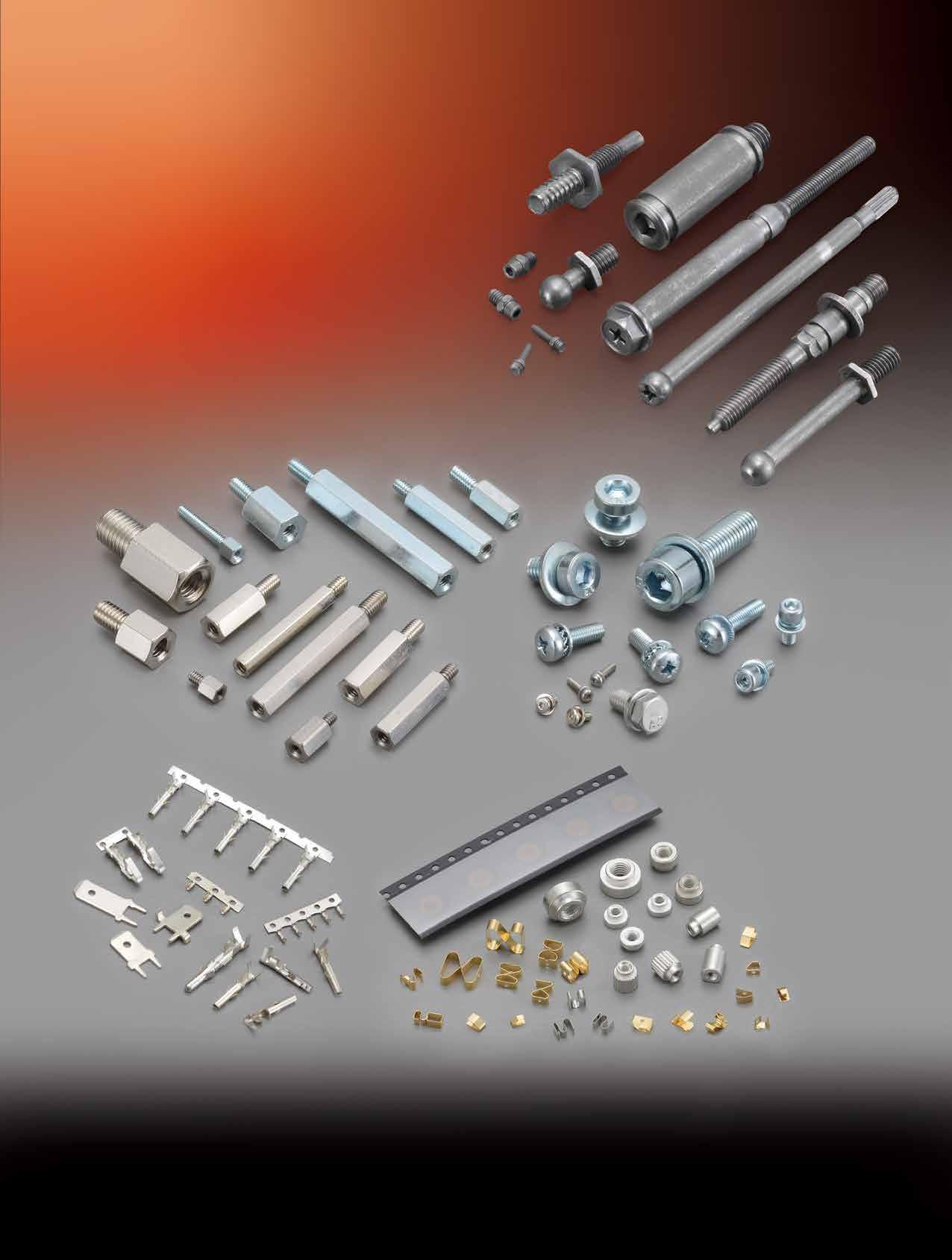

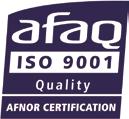
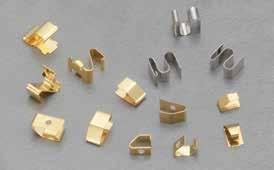


Hilti Vadodara Plant Achieves India's First DGNB Gold Certification for Sustainable Industrial Construction
Hilti梵多拉工廠榮獲印度首座 DGNB

Hilti Manufacturing India's plant in Vadodara, Gujarat, has become the first industrial facility in India to receive the prestigious DGNB Gold Certification from the German Sustainable Building Council. This certification recognizes Hilti's commitment to sustainability across environmental, economic, and social dimensions throughout the building's
lifecycle—from planning and construction to operation and eventual decommissioning. The Vadodara plant features advanced energyefficient technologies such as a chilled beam and radiant floor HVAC system using water as the cooling medium, passive cooling elements, and a centralized building management system that optimizes energy usage. The site also includes a 1500 MWh photovoltaic system, rainwater harvesting with 100% water recycling, a zero-discharge policy, and a Miyawaki forest covering 25% of the campus to promote biodiversity.
Designed with inclusivity in mind, the facility offers barrier-free access, gender-sensitive amenities, excellent indoor air quality, acoustic comfort, and employee wellness zones including childcare and fitness areas. Hilti's CEO emphasized that the gold certification marks a new benchmark for sustainable industrial construction in India and reflects the company’s vision to combine performance with purpose.
State Grid Launches Innovative Bolt Loosening Soundprint Detection Technology for Power Tower Maintenance
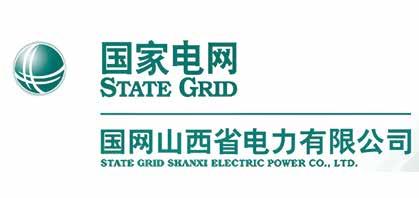
State Grid (China) announced the successful application of its self-developed bolt loosening soundprint detection technology for power transmission towers. This breakthrough allows accurate inspection of over 10,000
critical tower bolts within just 20 minutes, dramatically improving efficiency and safety compared to traditional manual methods.
Historically, bolt inspections on towering structures requiring 3 operators working at heights took about 2 hours for around 20,000 bolts. The new technology is based on the principle of vibration acoustic wave analysis and, combined with acoustic wave sensors, achieves high-precision detection of bolt conditions, fundamentally transforming the traditional methods. This technology promotes the intelligent and automated maintenance of power transmission lines, significantly reducing labor risks and costs while enhancing the safety and stability of power grids.

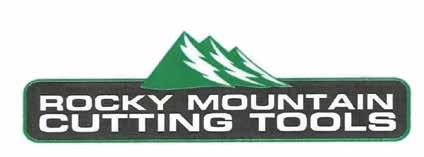
Stellar Industrial Supply, a Washington-based distributor specializing in MRO and tools, announced plans to acquire Rocky Mountain Cutting Tools (RMCT), a Colorado metalworking distributor. The acquisition will add RMCT's Frederick, Colorado location as Stellar's 18th regional hub, further strengthening Stellar's footprint in the Denver/Colorado Front Range market. John Wiborg, Stellar's President and CEO, described the deal as an important step in expanding the company's reach and enhancing customer value. He highlighted the mutual learning opportunities between the two organizations. Bryan DeAngelo, President of RMCT, expressed excitement over Stellar's expanding presence and commitment to maintaining the customer-focused values RMCT is known for across Colorado. The acquisition has been closed on June 30, 2025. Financial terms of the deal were not disclosed.



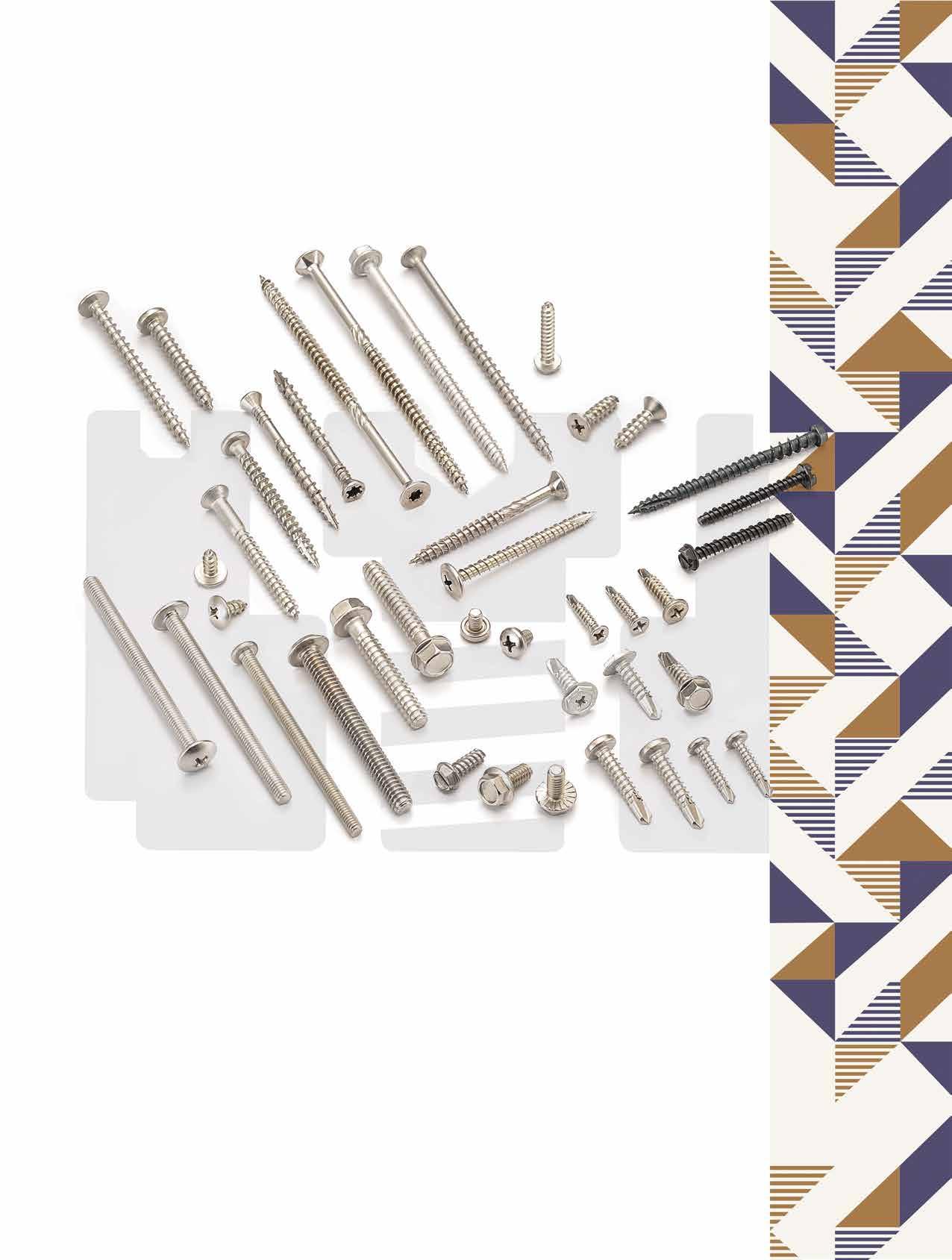


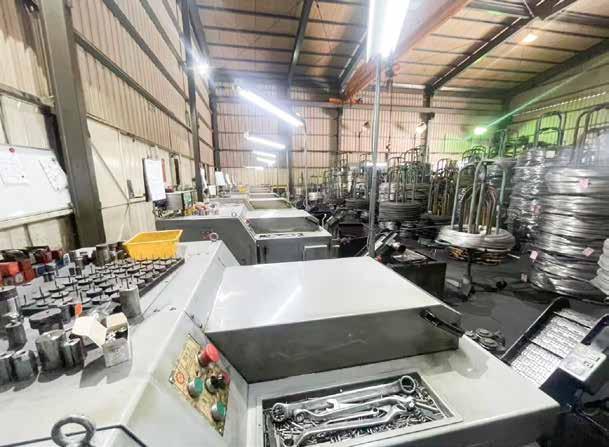
Ideal Tridon Group Acquired by Nautic Partners to Accelerate Growth
Ideal Tridon集團被 Nautic Partners收購


Ideal Tridon Group, a Tennessee-based engineered components supplier, has been acquired by private equity firm Nautic Partners. Nautic purchased the company from TruArc Partners for an undisclosed amount, partnering with Ideal Tridon’s management on the acquisition. Ideal Tridon produces over 60,000 SKUs of engineered components used in critical sectors such as process manufacturing, facility automation, power systems, and water management. Their product portfolio includes clamps, brackets, metal framing systems, fittings, couplings, industrial hose connections, and hygienic flow control components. CEO Rick Stepien emphasized their dedication to quality, service, and innovation, while also expanding with new products like EV battery cooling components and customized support systems. Nautic Partners expressed enthusiasm about working with the strong leadership team and supporting Ideal Tridon’s next growth phase. This acquisition is expected to enhance Ideal Tridon’s market presence and accelerate innovation across industries.
Spartan Fastener Acquires American Jebco to Strengthen Product and Market Presence
Spartan Fastener收購 American Jebco
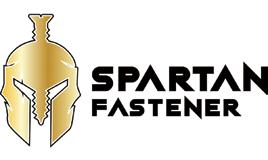
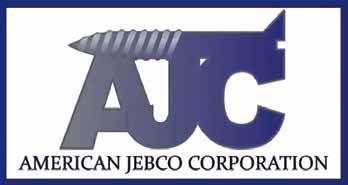
Spartan Fastener, a fastener manufacturer and distributor based in southeastern Wisconsin, has acquired American Jebco, a specialty fastener and rivet supplier located in Cicero, Illinois. This acquisition immediately expands Spartan's product lineup, manufacturing capabilities, and supply chain efficiency, enhancing its position in key markets across North America. Founded in 1903, American Jebco serves various industries including automotive, construction hardware, and fire safety equipment. The company focuses on precision specialty fasteners and shifted away from high-volume rivets in 2015 to prioritize engineered, custom components. Key leadership from American Jebco, including Vice President of Sales Eddie O'Connor and Materials Manager Pete O'Connor, will remain in place to ensure operational continuity and maintain valued customer relationships. Spartan Fastener's CEO Tim Cash described the acquisition as a major milestone in the company's growth strategy, emphasizing a shared commitment to quality and service. Eddie O'Connor expressed optimism about the combined strengths positioning the companies for a strong future.
AFC Industries Acquires Cavanaugh Government Group to Expand Military and Defense Services
AFC Industries收購 Cavanaugh Government Group


AFC Industries announced the acquisition of Cavanaugh Government Group (CGG), a Chicago-based provider specializing in parts sourcing and distribution for military and defense applications. Founded in 2012, CGG offers logistics services across all government sectors, strengthening AFC’s footprint in the aerospace and defense market. AFC CEO Kevin Godin expressed enthusiasm about welcoming Mike Cavanaugh, Dina, and the CGG team into the AFC family, emphasizing that the acquisition aligns with the company's strategic focus on expanding defense capabilities. He highlighted CGG'’s expertise and customer-centric approach, which goes beyond stocking parts to partner with clients in solving problems and streamlining processes. Mike Cavanaugh, owner of CGG, stated that joining AFC provides resources and culture to accelerate growth, expressing confidence and excitement for the next chapter. Terms of the deal were not disclosed. AFC Industries is owned by private equity firm Bertram Capital and continues to expand globally with over 100 locations in eight countries. compiled by Fastener World
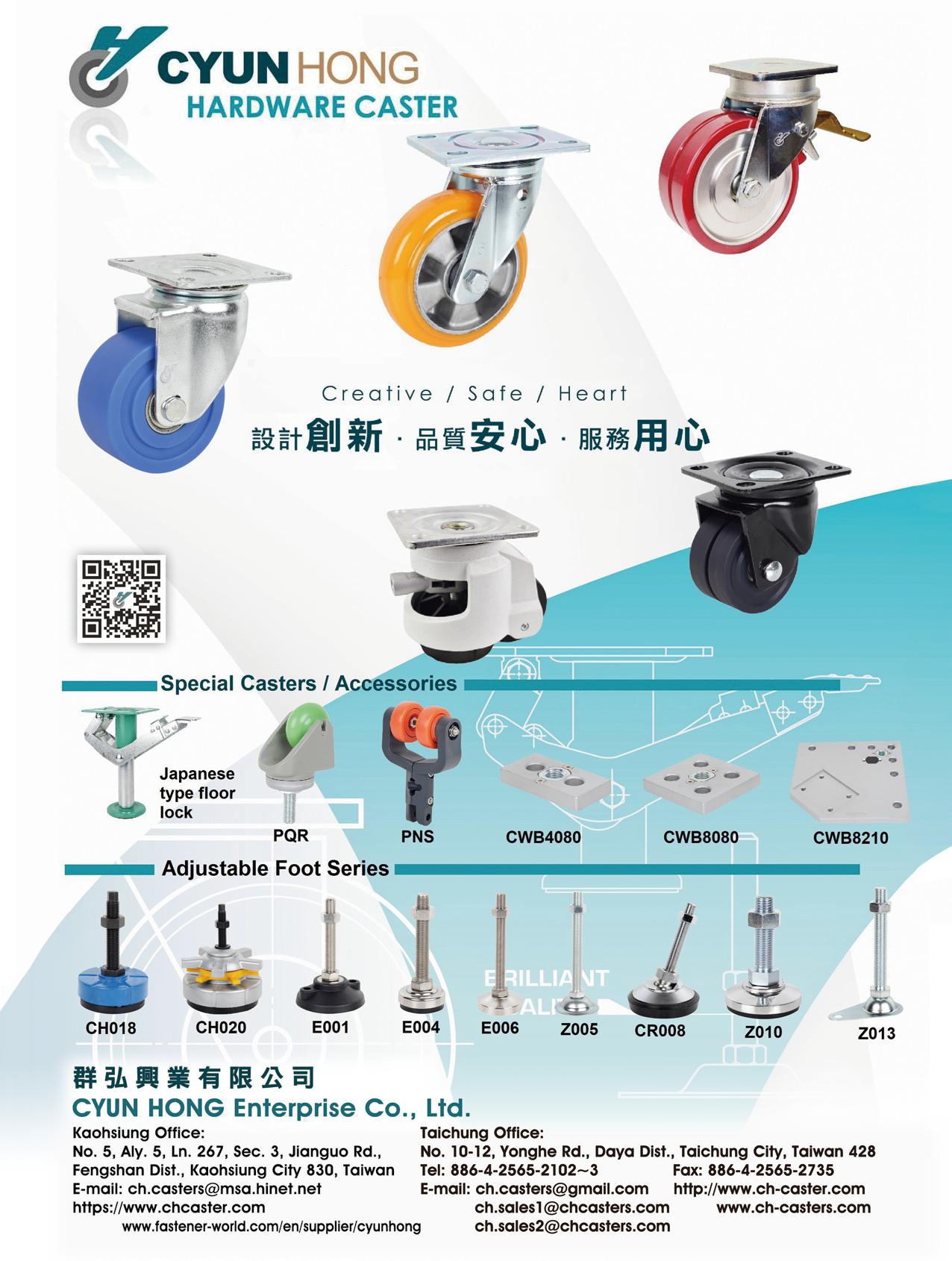


8,624.480
8,399.973

MobileTron's 2024 revenue was NTD 3,345.244 million, down 16.4% from NTD 4,003.635 million in 2023. The company ended the fiscal year with NTD 39.991 million in net loss in 2024, compared to NTD 124.275 million net loss in 2023. Total assets increased to NTD 8,624.480 million in 2024 from NTD 8,399.973 million in 2023.
Proxene's 2024 revenue was NTD 889.647 million, down 2.8% from NTD 915.526 million in 2023. The company ended the fiscal year with NTD 195.190 million in net profit in 2024, up 16.7% from NTD 167.321 million in 2023. Total assets increased to NTD 1,753.705 million in 2024 from NTD 1,628.572 million in 2023.
Jenn Feng Group's 2024 revenue was NTD 112.684 million, down 42.0% from NTD 194.406 million in 2023. The company ended the fiscal year with NTD 29.251 million in net loss in 2024, as compared to NTD 36.714 million net loss in 2023. Total assets decreased to NTD 271.904 million in 2024 from NTD 330.248 million in 2023.

Grainger's 2024 net sales were USD 17,168 million, up 4.2% from USD 16,478 million in 2023. The company ended the fiscal year with USD 1,909 million in net income in 2024, up 4.4% from USD 1,829 million in 2023. Total assets increased to USD 8,829 million in 2024 from USD 8,147 million in 2023.



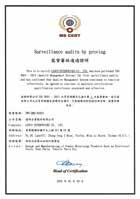




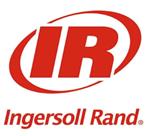

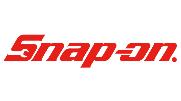
Illinois Tool Works' 2024 net sales were USD 15,898 million, down 1.3% from USD 16,107 million in 2023. The company ended the fiscal year with USD 3,488 million in net income in 2024, up 18.0% from USD 2,957 million in 2023. Total assets decreased to USD 15,067 million in 2024 from USD 15,518 million in 2023.
Ingersoll Rand's 2024 net sales were USD 7,235.0 million, up 5.2% from USD 6,876.1 million in 2023. The company ended the fiscal year with USD 838.6 million in net income in 2024, up 7.7% from USD 778.7 million in 2023. Total assets increased to USD 18,009.8 million in 2024 from USD 15,563.5 million in 2023.





18,009.8 vs. 15,563.5
21,848.9 vs. 23,663.8
7,896.8 vs. 7,544.9
Stanley Black and Decker's 2024 net sales were USD 15,365.7 million, down 2.6% from USD 15,781.1 million in 2023. The company ended the fiscal year with USD 294.3 million in net income in 2024, compared to USD 310.5 million in net loss in 2023. Total assets decreased to USD 21,848.9 million in 2024 from USD 23,663.8 million in 2023.
Snap-on's 2024 net sales were USD 4,707.4 million, down 0.5% from USD 4,730.2 million in 2023. The company ended the fiscal year with USD 1,043.9 million in net income in 2024, up 3.2% from USD 1,011.1 million in 2023. Total assets increased to USD 7,896.8 million in 2024 from USD 7,544.9 million in 2023.




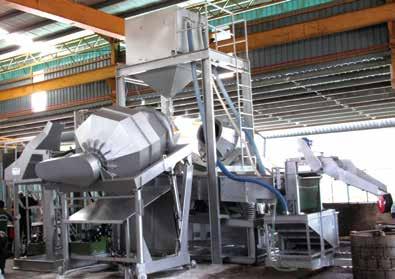
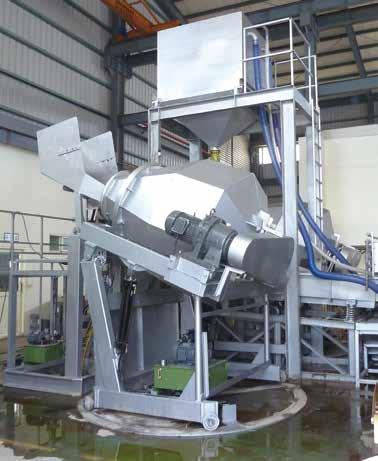
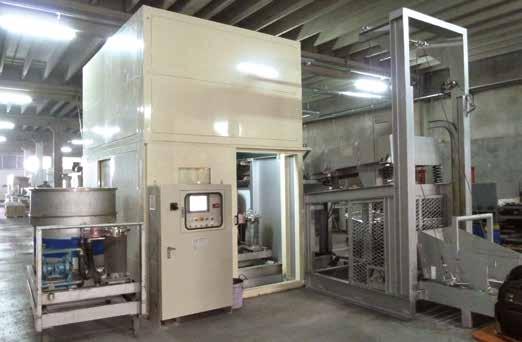


Atlas Copco's 2024 revenue was SEK 176,771 million, up 2.4% from SEK 172,664 million in 2023. The company ended the fiscal year with SEK 29,782 million in net profit in 2024, up 6.2% from SEK 28,040 million in 2023. Total assets increased to SEK 208,538 million in 2024 from SEK 182,684 million in 2023.
Einhell's 2024 revenue was EUR 1,109.699 million, up 14.2% from EUR 971.525 million in 2023. The company ended the fiscal year with EUR 65.070 million in net profit in 2024, up 28.9% from EUR 50.491 million in 2023. Total assets increased to EUR 974.813 million in 2024 from EUR 810.069 million in 2023.
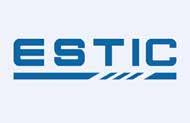
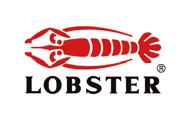



Hilti’s 2024 revenue was CHF 6,429 million, down 1.4% from CHF 6,520 million in 2023. The company ended the fiscal year with CHF 558 million in net profit in 2024, up 0.2% from CHF 557 million in 2023. Total assets increased to CHF 8,055 million in 2024 from CHF 7,704 million in 2023.
Bosch’s 2024 revenue was EUR 90,345 million, down 1.4% from EUR 91,596 million in 2023. The company ended the fiscal year with EUR 786 million in net profit in 2024, down 62.6% from EUR 2,101 million in 2023. Total assets increased to EUR 112,766 million in 2024 from EUR 108,330 million in 2023.
8,611 vs. 9,284
1,106,525 vs. 1,055,808
19,941 vs. 19,241
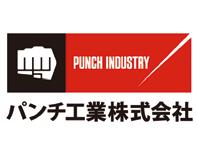
32,970 vs. 29,649
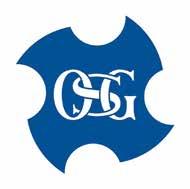

257,256 in 2024 vs. 250,124 in 2023
Estic's 2025 revenue was JPY 7,881 million, up 10.6% from JPY 7,127 million in 2024. The company ended the fiscal year with JPY 1,181 million in net profit in 2025, up 4.3% from JPY 1,133 million in 2024. Total assets increased to JPY 12,056 million in 2025 from JPY 10,730 million in 2024.
Lobtex's 2025 revenue was JPY 5,708 million, down 3.7% from JPY 5,925 million in 2024. The company ended the fiscal year with JPY 77 million in net profit in 2025, down 72.4% from JPY 279 million in 2024. Total assets decreased to JPY 8,611 million in 2025 from JPY 9,284 million in 2024. The company forecasts 2026 revenue at JPY 5,810 million, up 1.8%.
Makita's 2025 revenue was JPY 753,130 million, up 1.6% from JPY 741,391 million in 2024. The company ended the fiscal year with JPY 79,338 million in net profit in 2025, up 81.6% from JPY 43,691 million in 2024. Total assets increased to JPY 1,106,525 million in 2025 from JPY 1,055,808 million in 2024. The company forecasts 2026 revenue at JPY 700,000 million, down 7.1%.
NS Tool's 2025 revenue was JPY 9,431 million, up 4.3% from JPY 9,040 million in 2024. The company ended the fiscal year with JPY 1,264 million in net profit in 2025, down 4.2% from JPY 1,320 million in 2024. Total assets increased to JPY 19,941 million in 2025 from JPY 19,241 million in 2024. The company forecasts 2026 revenue at JPY 9,680 million, up 2.6%.
Punch Industry's 2025 revenue was JPY 40,822 million, up 6.5% from JPY 38,344 million in 2024. The company ended the fiscal year with JPY 868 million in net profit in 2025, compared to JPY 577 million in net loss in 2024. Total assets increased to JPY 32,970 million in 2025 from JPY 29,649 million in 2024. The company forecasts 2026 revenue at JPY 39,880 million, down 2.3%.
OSG’s 2024 revenue was JPY 155,517 million, up 5.3% from JPY 147,703 million in 2023. The company ended the fiscal year with JPY 13,439 million in net profit in 2024, down 6.1% from JPY 14,307 million in 2023. Total assets increased to JPY 257,256 million in 2024 from JPY 250,124 million in 2023. The company forecasts 2025 revenue at JPY 160,000 million, up 2.9%.








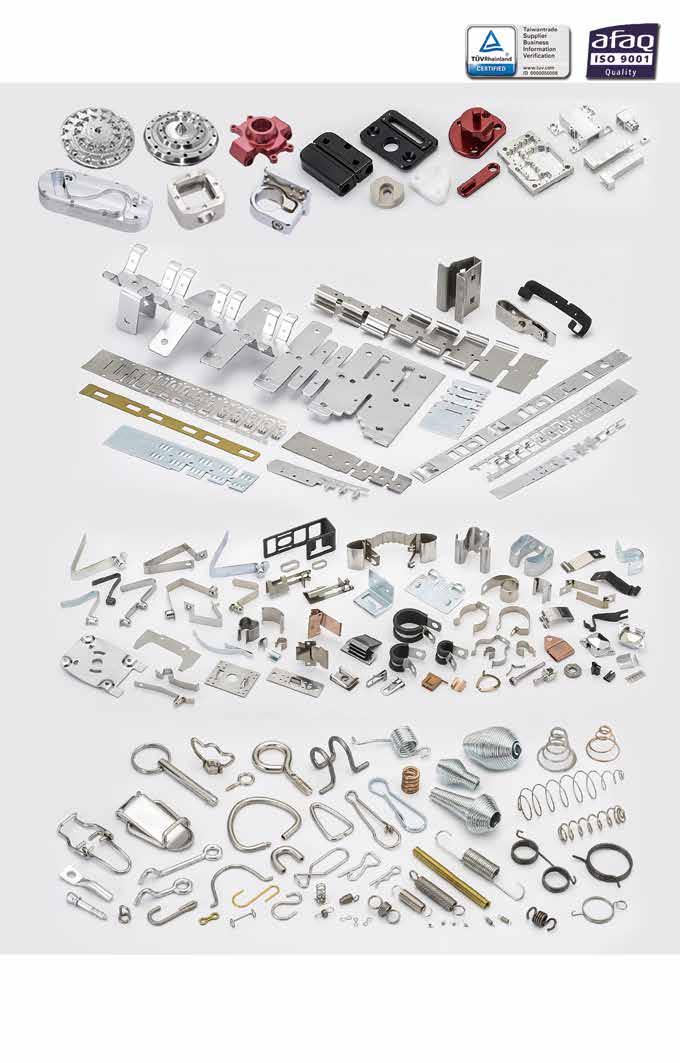




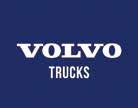

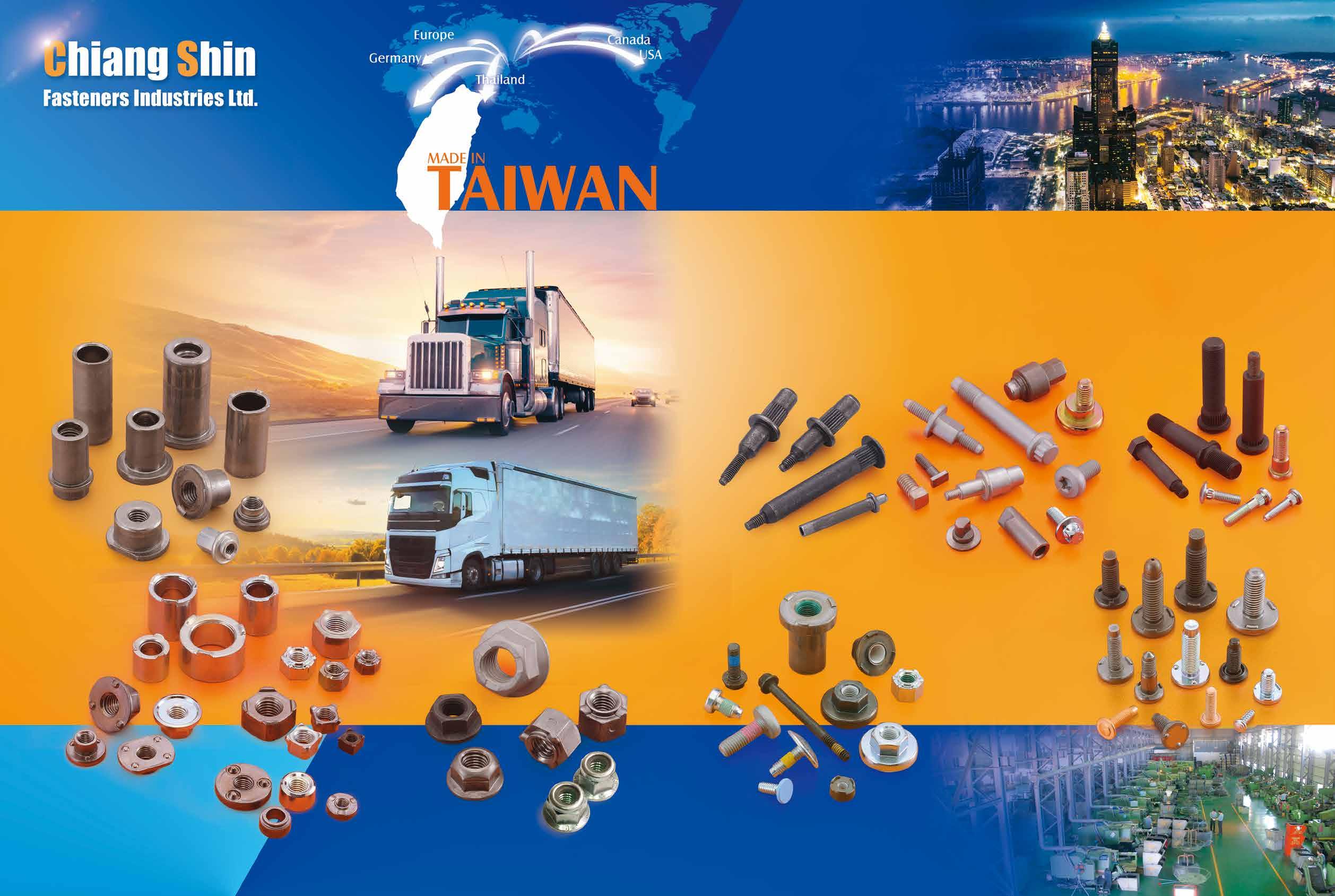














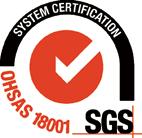



On May 22-24, roughly one thousand Chinese and a few overseas fastener-related exhibitors gathered at the Shanghai World Expo Exhibition & Convention Center (SWEECC) to participate in the annual IFS China. This year, two halls were open (one for raw materials, equipment, molds/dies, and consumables, and the other for finished fasteners) with the total exhibition area of about 40,000 square meters.


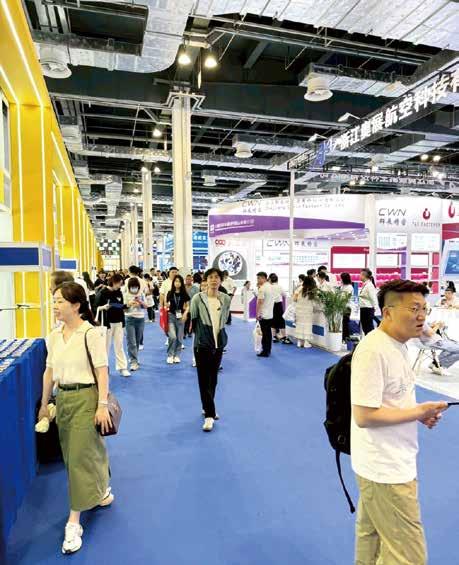
The exhibitors this year were mainly Chinese companies focusing on domestic sales, but there were also a few European and U.S. machinery-related companies (e.g. SACMA and National Machinery) wishing to expand their domestic sales in China. In addition, about 10 well-known Taiwanese machinery and equipment brands, such as Chun Zu, Jiancai, Tong Ming, and Jern Yao, as well as some punch/die/wire suppliers also participated in this year's show to enhance their exposure.
According to the observation of Fastener World’s staff on-site, the visitors this year, facing the influence of new regulations and tariff barriers from the EU and the U.S., were mainly buyers from China, India and Russia (not many from the EU and the U.S.), and most of them were buyers focusing on domestic sales in China. Visitors came mainly on the first day of the three-day exhibition, and the second day's crowd was less because of heavy rain.
Some local manufacturers revealed to Fastener World’s staff onsite that the turmoil in the global market over the past few months has caused a great impact on the export performance of Chinese suppliers, so many of them have turned to strengthen domestic sales and shifted to India, Brazil, Central and South America, and other emerging markets to cope with it. One Chinese manufacturer mentioned that as Russia recently put out a lot of post-war reconstruction programs ushering in increased demand for fasteners, many Chinese companies received a lot of inquiries and orders from Russian buyers, many of which could not even be handled by a single manufacturer and had to be divided into separate orders to be processed by 2-3 downstream factories in order to ensure punctual delivery. While the EU and the U.S. continue to exert economic pressure on China at the time, such orders do bring a ray of hope to Chinese manufacturers having encountered significantly decreased orders from Europe and the U.S. and ease the cost pressure on their operation. In addition, a number of industry experts were invited to hold trend seminars and industry summits focusing on CBAM and U.S. tariffs. They mentioned that although CBAM and U.S. tariffs had increased the short-term pressure on Chinese enterprises, the layout of export sales should be continuously strengthened in order to mitigate the involution of the Chinese market.
As there was also another international fastener expo in Shanghai this June, some exhibitors said that, considering the scale of both big shows, they would actively participate in one of these industry events or both on the premise of expanding market opportunities. However, they suggested that with the dates of both shows being so close to each other, it might be better to combine them into one bigger show, thereby attracting more visiting overseas buyers and expanding the benefits of participation.
The organizer has announced that the next show will be held on May 20-22, 2026 at SWEECC.


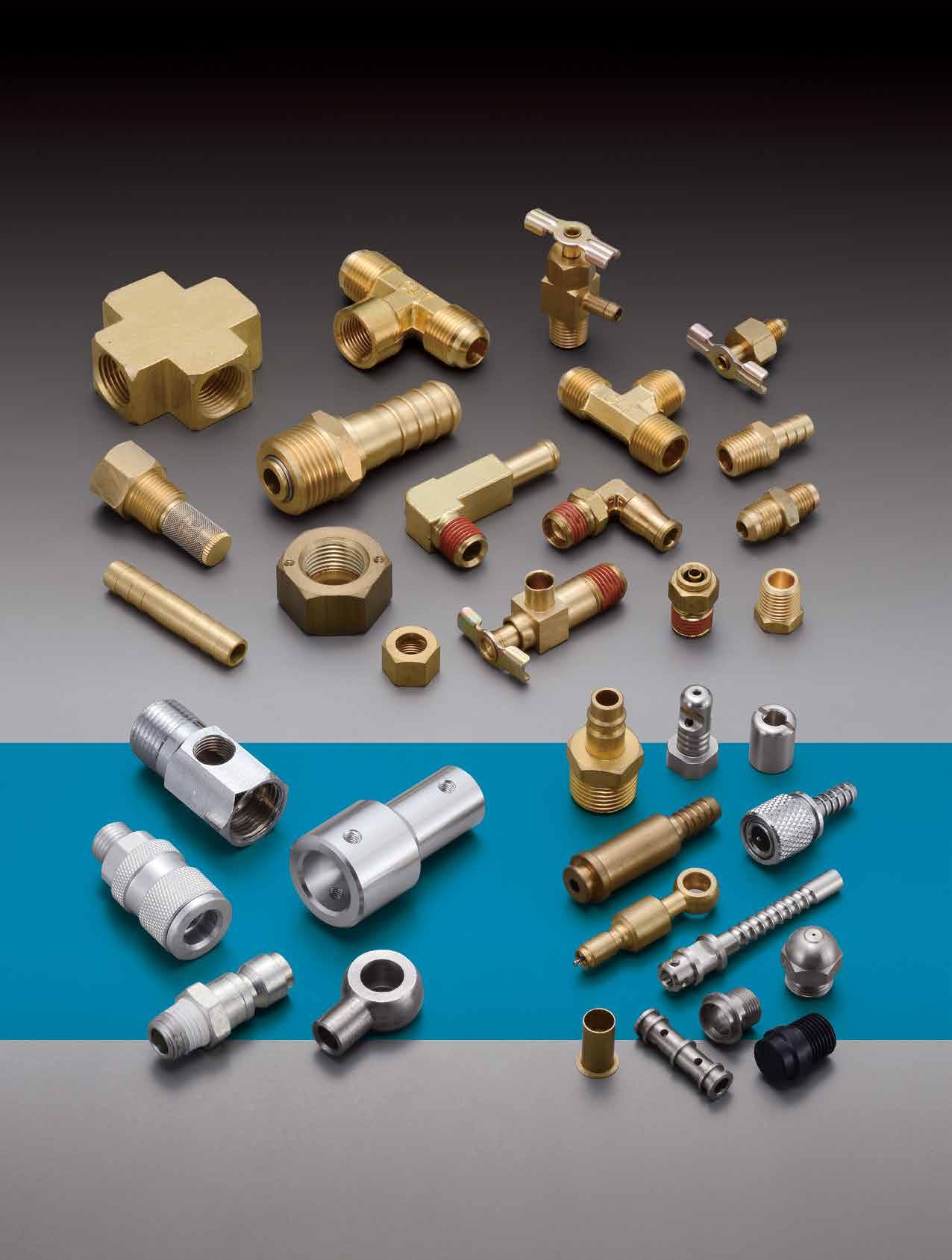


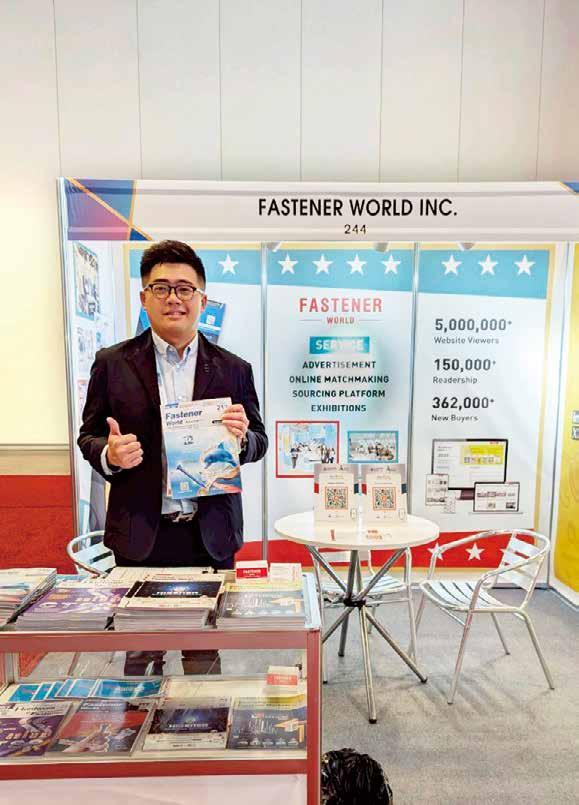
The annual Fastener Fair USA was held on May 28-29 in Hall C of the Music City Center in Nashville, the 4th largest city in the Southeastern United States. It is one of the international professional trade fairs in North America dedicated to creating networking and collaboration opportunities among manufacturers, distributors, equipment suppliers, processors, and end-users in the fastener manufacturing supply chain.
This year, there were 206 exhibitors, mainly from the fields of construction, automotive, aerospace, furniture, electronics, heavy machinery, home appliances, marine, railway, medical, military, energy, etc. The exhibits included a wide range of industrial fasteners, construction fasteners, assembly and installation systems, and fastener manufacturing technologies. Fastener World also joined many Taiwanese exhibitors to interact with local buyers from the U.S. market this time.
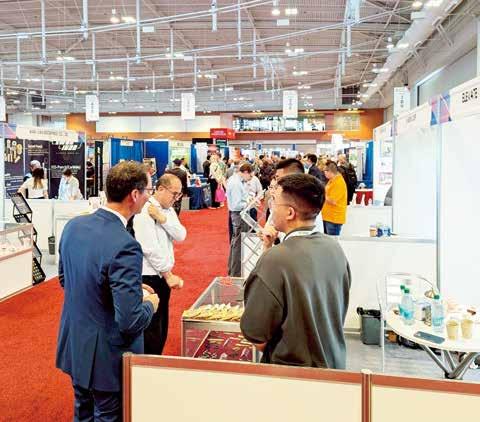
According to Fastener World's staff’s observation on-site, there were several visitors coming to Taiwan Pavilion on the first day of the show, and some exhibitors who also exhibited last year even said that the number of visitors was higher than last year’s record, which might be attributed to various new tariff policies in the U.S. announced this year, exchange rate fluctuations, freight cost hike, and rising raw material costs and other uncertainties, forcing more local buyers to visit the show to look for more alternative new opportunities. Some visitors also expressed high interest in sourcing from Southeast Asian and Taiwanese suppliers. Many of the visitors visiting Fastener World’s stand showed a high interest in purchasing construction-related products.
Although this show attracted many local U.S.-based exhibitors focusing on regional businesses to participate, it also attracted a number of international exhibitors from outside the U.S. looking for local importers and distributors to expand their collaboration. Some Chinese exhibitors noted that their U.S. customers still need to rely on Chinese suppliers for specific items that are not adequately supplied by the local market. On the other hand, Taiwanese suppliers also have fewer competitors in the U.S. market for certain higher value-added items, which are also attractive to local U.S. buyers, but they still need to pay attention to the possible impact of fluctuations in the exchange rate of NTD on their export competitiveness.
The organizer has announced that the next edition will be held on May 5-6, 2026 at the Charlotte Convention Center in Charlotte, the 2nd largest city in the Southeastern United States. As the city is known for its major furniture manufacturing hub, it may also attract more buyers of furniture fasteners when FF USA is open next year.







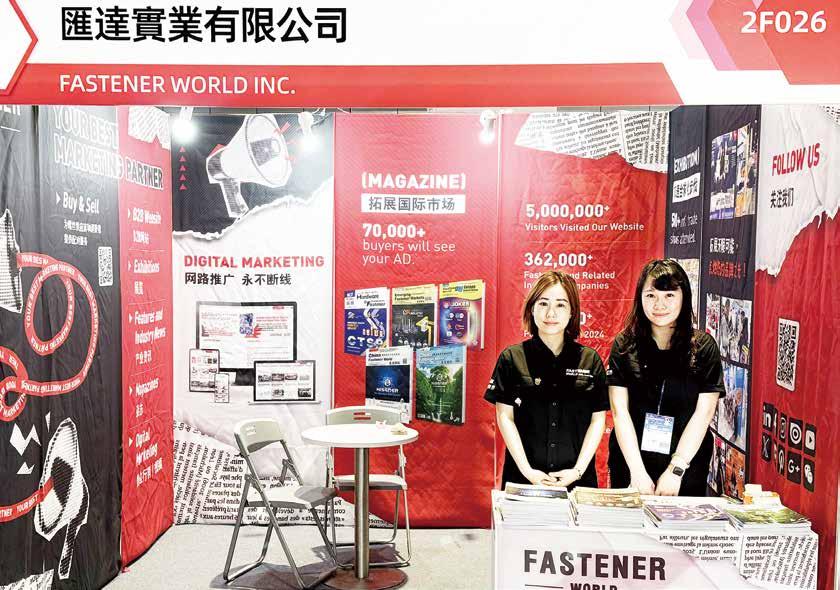
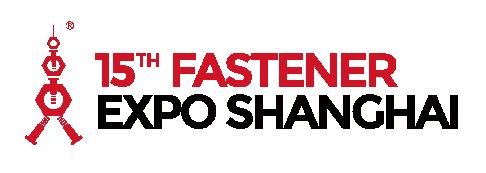
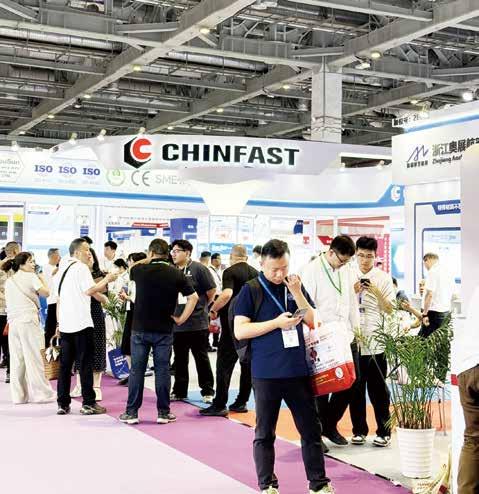

Less than a month after IFS China ended at the end of this May, the 15th Fastener Expo Shanghai was successfully held at the National Exhibition and Convention Center (Shanghai) from June 17 to 19.
Called the “Global Innovation Platform for the High-end Fastener Industry”, Fastener Expo Shanghai is often regarded as one of the barometers for observing Chinese fastener industry. This year, Halls 1.1, 2.1, and 3 were opened, attracting more than 1,200 local and overseas exhibitors to display a wide range of standard/non-standard fasteners, automotive connectors, riveting products & technologies, metal formed parts, made of carbon steel, stainless steel, and special alloys, as well as cold heading equipment, heat treatment equipment, surface treatment, molds & dies, inspection equipment & lab instruments, etc on the 70,000 sq. m. of exhibition space. A few Taiwanese machinery and equipment companies also attended the exhibition in the hope of increasing orders from local fastener manufacturers in China.
The visitors this year were mainly from domestic China and not many from overseas. According to Fastener World's on-site staffs, there were overseas buyers from Kazakhstan, Turkey, Malaysia and Peru coming to Fastener World's booth, and Japanese visitors were also seen sometimes, probably due to the dates of two similar shows (one in May and the other in June) being too close to each other.
During the exhibition, many exhibitors and visitors also seized the time to exchange views on the recent US tariffs, EU anti-dumping, currency exchange rates, market challenges, business opportunities in emerging markets and other issues. Some Chinese exhibitors told Fastener World’s staffs that "many Chinese enterprises are facing tough challenges in their business operations due to the anti-dumping duty from the EU, which is over 90%, and the uncertainty of U.S. tariffs, as well as the lack of subsidies from the Chinese government". However, some exhibitors said that "many Chinese companies have already turned to nonEuropean and non-U.S. markets", and are now doing well in the Middle East and Southeast Asia. In terms of domestic sales, some exhibitors said that "the market is still in the doldrums, and the strategy of price cutting in China is still a difficult problem for many companies to deal with."
The organizer held more than 10 industry forums, the fastener gala night and the B2B matchmaking event during the exhibition. The next Fastener Expo Shanghai will be held on June 24-26, 2026 at the National Exhibition and Convention Center (Shanghai), which will continue to provide an important business platform to promote view exchange, industrial learning, and business opportunities matchmaking.

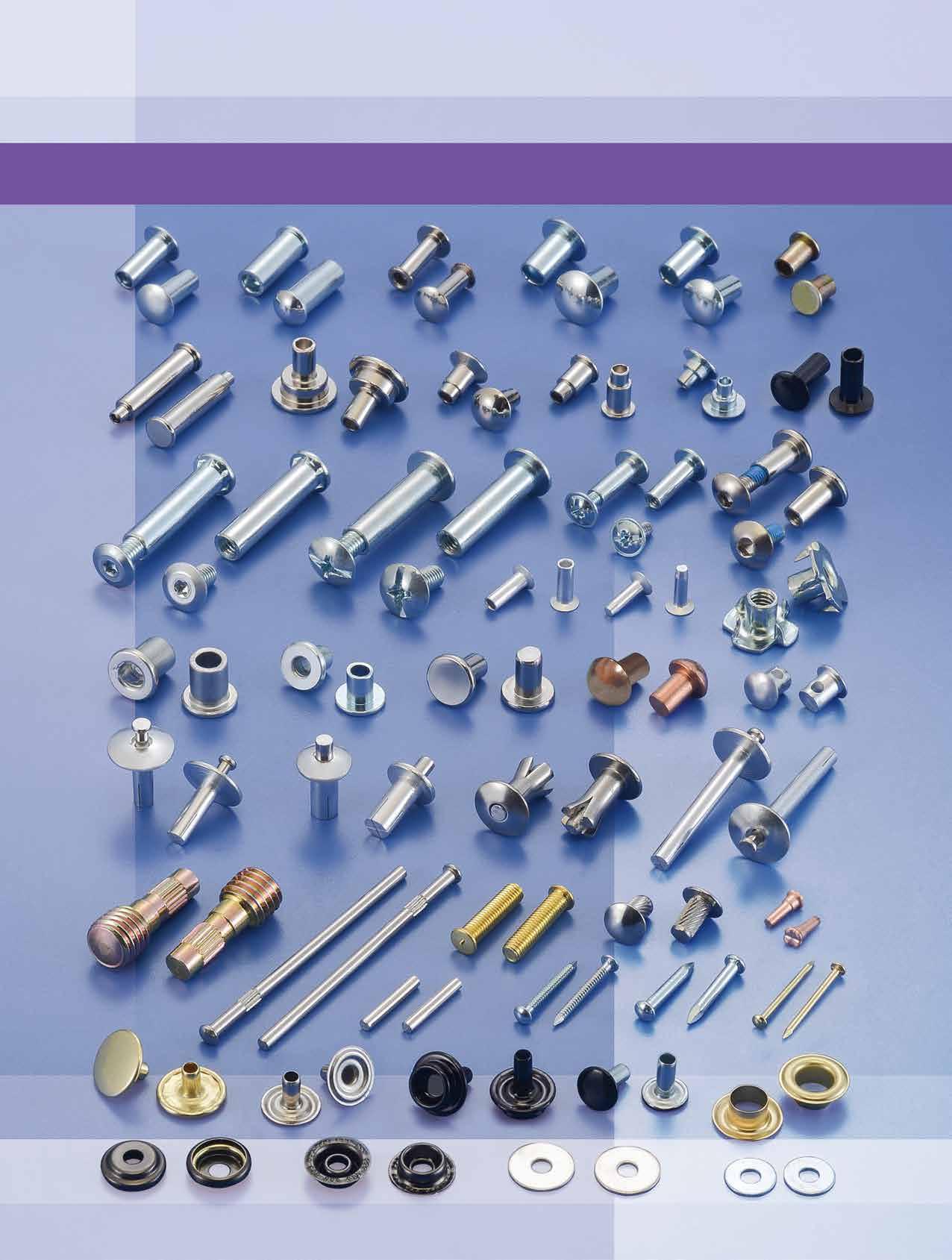

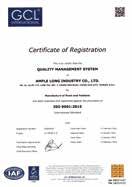
泰國曼谷國際工業製造展
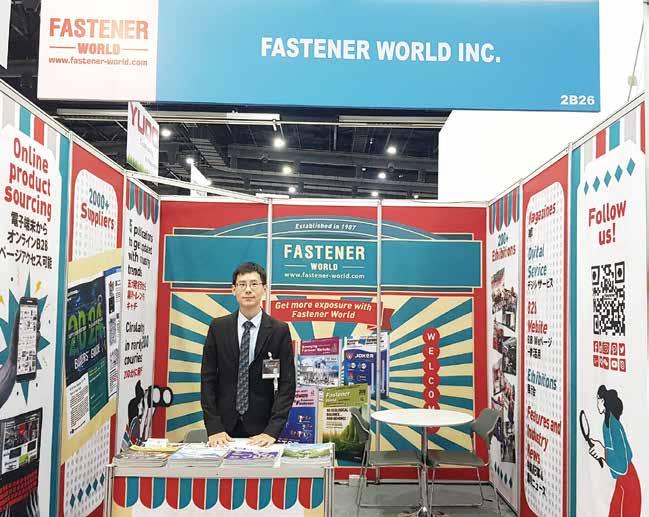

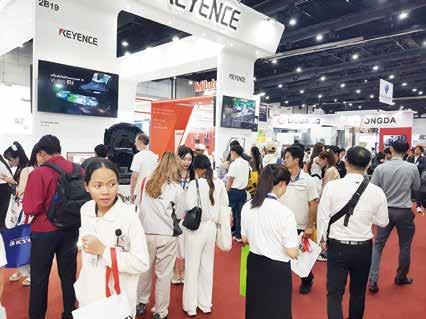

The show held from June 18 to 21 at the Bangkok International Trade & Exhibition Centre (BITEC) saw visitor numbers fill up within just half an hour of opening each day, clearly surpassing the attendance of the previous edition. This year’s event featured several notable new characteristics compared to last year’s.
In addition to the China and Taiwan pavilions, this year the Expo included pavilions from Singapore and South Korea, along with a dedicated section for industrial tools and tooling. A highlight was the Taiwan Excellence Award pavilion, which not only promoted award-winning Taiwanese companies but also hosted keynote presentations on Taiwan’s manufacturing technologies.
Japanese companies have increased their investments in Thailand in recent years. Many Japanese exhibitors seen at the show either have local factories or joint ventures with Thai firms. They employed local Thai staff to provide on-site supply services. Most of these Japanese companies were from machinery and materials sectors outside the fastener industry.
Unlike other country pavilions, there was not just one but multiple China pavilions in the different areas of the venue. By including numerous smaller Chinese booths, exhibitors with Chinese backgrounds accounted for over 50% of the total exhibitors. Fastener World talked with a Chinese exhibitor who even estimated this share to exceed 70%. This exhibitor explained that intense involution in China has suppressed domestic sales, prompting many to target Thailand for export growth. To him, the surge in Chinese presence in this show came as no surprise.
The majority of buyers came from four key industries: electronics, assembly, automotive, and machinery. As these buyers required fasteners in smaller quantities for assembly, their purchase requirements shared common traits: support for small-quantity supply, local manufacturing presence in Thailand, and the ability to provide customized products. These traits reflect that fastener companies able to supply locally in Thailand will be the most competitive in entering the Thai market.
Many visitors expressed difficulty finding local fastener suppliers despite strong demand. Hence, Fastener World offered them matchmaking with global suppliers and introduced to them fasteners, dies, tooling, and machinery suppliers through company reports and catalogs in Fastener World publications. Understanding the characteristics of these buyers offers interested suppliers a valuable opportunity to capture business in this Southeast Asian industrial hub.
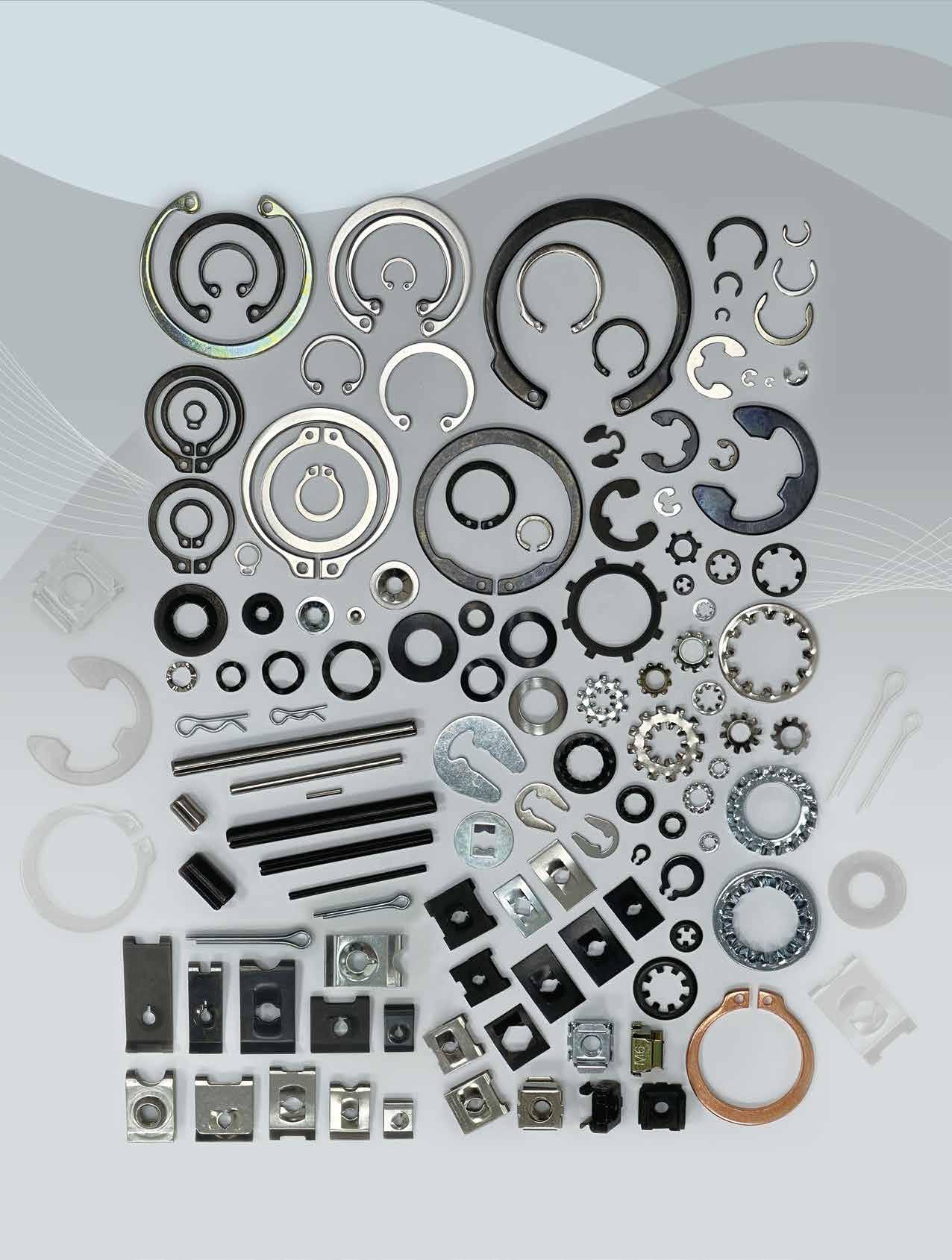




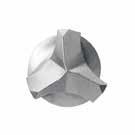
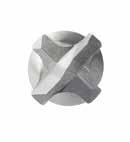



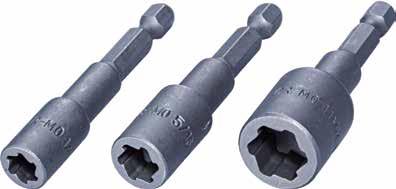

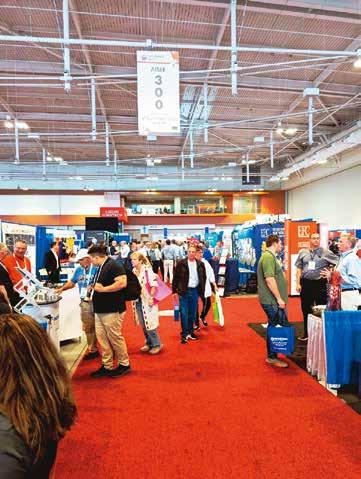
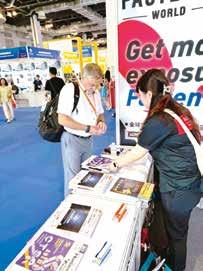
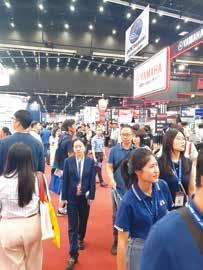



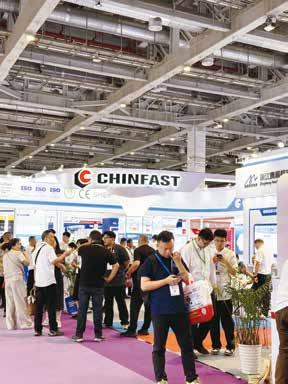












2025越南胡志明國際工具機暨金屬加工設備展鏈接國際製造業與越南市場商機
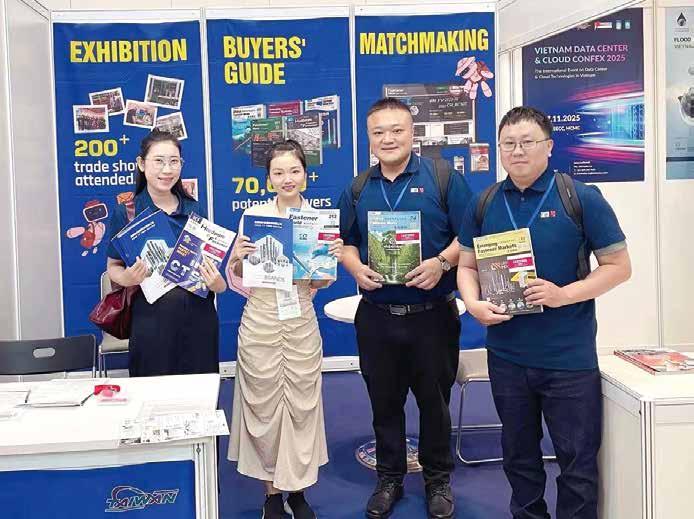
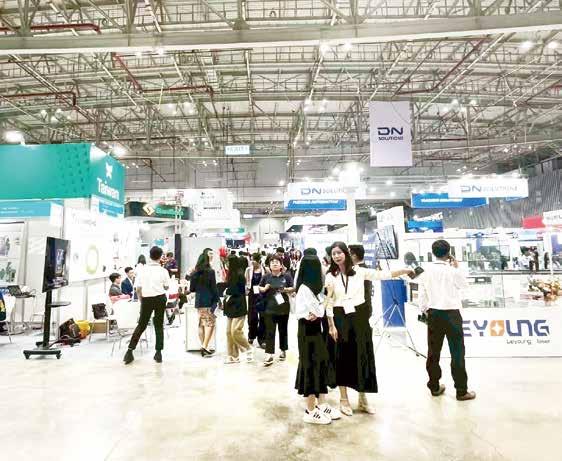
MTA Vietnam took place at Halls A and B of Saigon Exhibition and Convention Center (SECC) in Ho Chi Minh City from July 2 to 5, attracting about 380 exhibitors from Vietnam, Asia (Taiwan, India, Japan, China, Thailand, Korea, Malaysia, Singapore, Indonesia, Israel), Europe (Germany, UK, Italy, Austria, Netherlands, France, Switzerland, Finland) and the US. Moreover, Japan, Singapore, China, etc. were presented in the form of national pavilions.
Since its inaugural edition in 2005, MTA has continued to play an important role in facilitating two-way exchanges between the global manufacturing industry and Vietnam's local market, and introducing the most advanced manufacturing products, technologies and product solutions from around the world to the Vietnamese manufacturing industry. Exhibitors in 2025 mainly came from the fields of automation, cutting tool systems, factory equipment, material handling, measurement and inspection technology, metal cutting machines, metal forming/ sheet metal cutting machines, tools & dies, software and design systems, surface treatment and heat treatment.
In order to provide exhibitors and visitors with a deeper understanding of the latest manufacturing technologies and trends, the organizer also invited associations and industry experts to hold a number of market and technology seminars on topics ranging from automation to AItomation, investment/development/collaboration opportunities in Vietnamese semiconductor industry, digital transformation, smart sustainable manufacturing, sourcing, clean energy, manufacturing technologies, raw material processing, and many other topics. There were also matchmaking meetings with German and Japanese companies for buyers.
Fastener World also went to the exhibition again this year. In addition to disseminating the latest sourcing magazines, we also introduced the optimized online product and supplier search platform to the professional buyers coming to our booth. Many buyers who read our magazines on site or scanned the QR code to enter our online B2B buying & selling platform all said that the abundant information on fasteners, hardware, components, tools, machinery and peripheral suppliers was very helpful for them to find more sources for future purchases.
The organizer has not announced the dates and venue for the next edition of the show yet. Please stay tuned to our official website at www.fastener-world.com for more information.

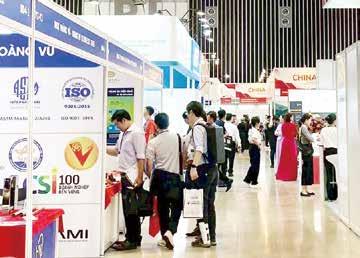
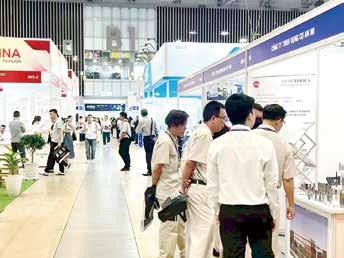














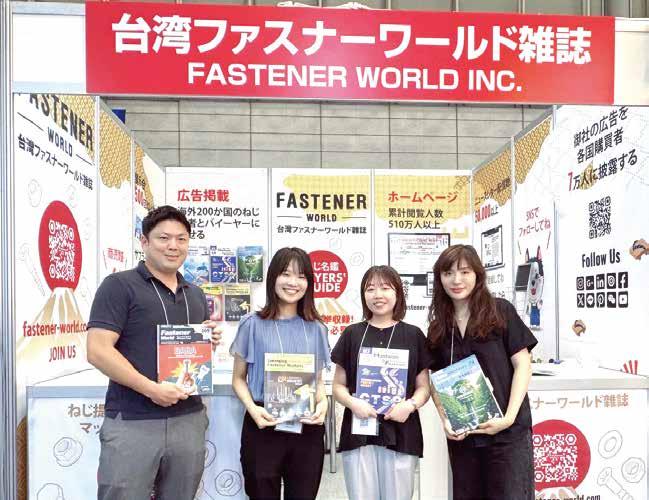


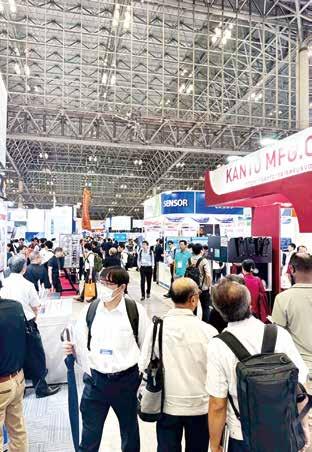
Manufacturing World is held in Tokyo, Osaka, Nagoya and Fukuoka by turns in different months of a year, and the edition in Tokyo is the largest of them all in terms of scale. On July 9-11 this year, Manufacturing World was grandly held at Makuhari Messe in Tokyo. The concurrent shows included Design Manufacturing Solutions Expo, Mechanical Components & Technology Expo, Medical Device Development Expo, Factory Facilities & Equipment Expo, Additive Manufacturing Expo, Manufacturing Cyber Security Expo, Smart Maintenance Expo, Measure/Test/Sensor Expo, Manufacturing DX Expo, and Industrial ODM/EMS Expo.
This year's event featured 11 pavilions and attracted 1,975 Japanese and overseas companies to exhibit the most advanced metal parts and components, facilities and equipment, manufacturing technologies, IT technologies, digital transformation and AI solutions, etc. According to the latest figures released by the organizer, the 3-day exhibition attracted a total of 55,749 visitors, mainly from the automotive, heavy industry, electronics, machinery, precision equipment and many other fields. During the exhibition period, the organizer also invited many Japanese and overseas leading business executives and renowned experts to hold a number of manufacturing-related industry trends and technology exchange seminars, which attracted many visitors interested in market trends and the latest manufacturing technologies to make appointments to listen to the seminars.
According to the observation of Fastener World's staff at the show, Tokyo located in the Kanto region of Japan is a pivotal city where many well-known manufacturers of electronic equipment, precision instruments, medical equipment, heavy industry, machinery, construction equipment, semiconductors, as well as automobiles and peripheral parts set up their factories or headquarters, which demonstrates a huge manufacturing momentum. The number of exhibitors this year was similar to that of last year. Roughly 20-30 exhibitors were related to the fastener industry and were mainly from Japan and China. There were also a few from Europe, Taiwan, and Thailand.
The organizer has announced that the next show will be held on July 1-3, 2026 at Tokyo Big Sight. For more show information, please keep following us on our official website at www.fastener-world.com.

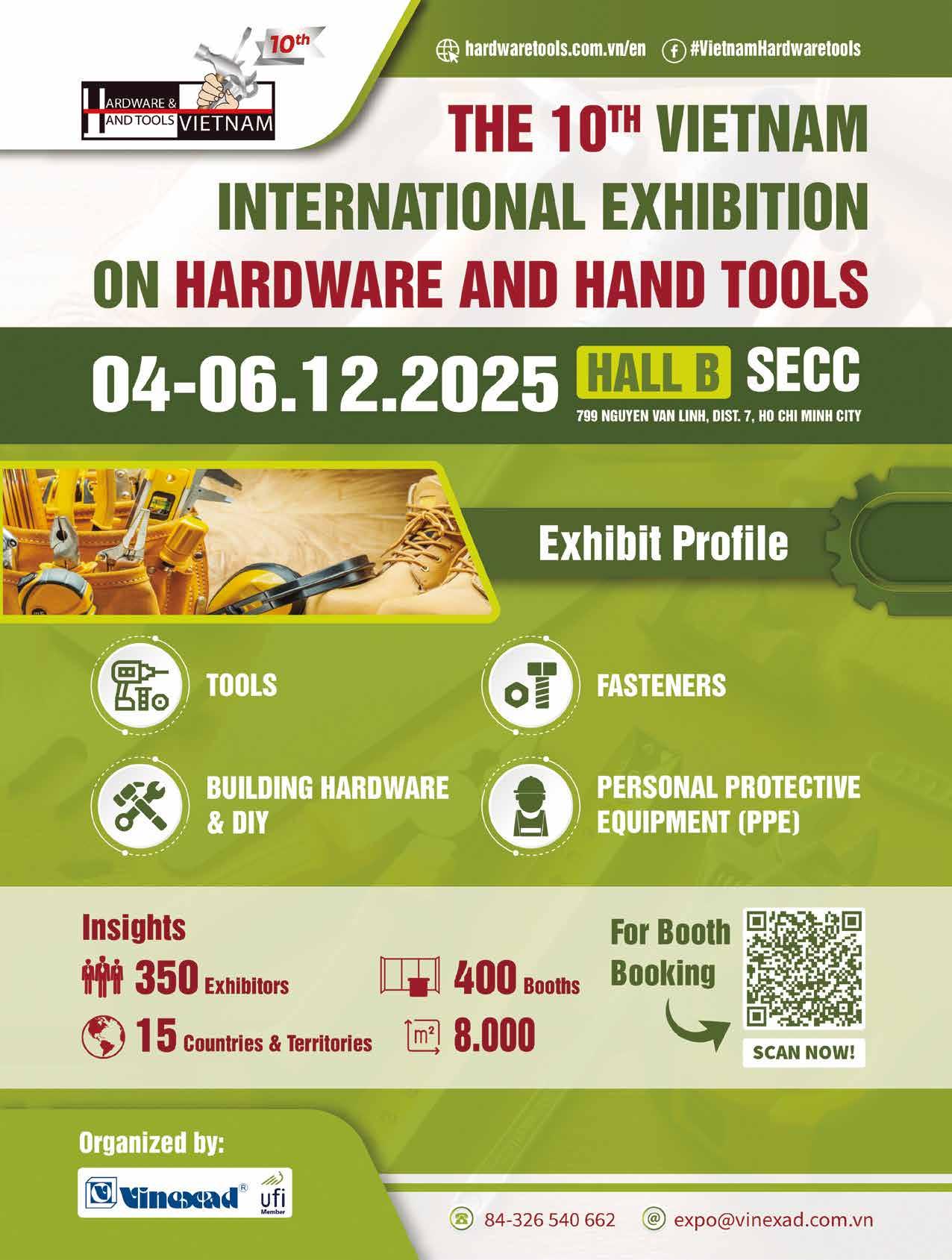

Hungary's fasteners and fastening tools market presents a compelling case for growth and strategic investment in 2025. Situated at the heart of Central Europe, Hungary is not only a key manufacturing hub for the automotive and machinery sectors, but also plays a pivotal role in regional supply chains extending into Western Europe and the Balkans. This article offers a detailed analysis of the current state of the market, grounded in genuine forecasts and supported by credible sources, while providing practical insights and projections for stakeholders across the value chain.
As of early 2025, Hungary’s economy remains industrially resilient, with manufacturing contributing nearly 20% to its GDP. The automotive sector, driven by global OEMs with local production facilities, continues to dominate exports and industrial output. According to the Hungarian Central Statistical Office (KSH), the industrial production index rebounded in Q1 2025 by 2.1% year-over-year after contractions in late 2024. This industrial momentum fuels consistent demand for a wide array of fasteners, from standard bolts and rivets to advanced, lightweight systems tailored for electric vehicles (EVs) and automated manufacturing.
According to 6Wresearch, the Hungarian industrial fastener market is growing at a rate of 5.43% in 2025, with expectations to reach the CAGR up to 12.71% by 2029. In monetary terms, the market is projected to exceed HUF 90 billion (~EUR 230 million) by 2029. This projection signals not just expansion but a structural transformation in product sophistication and tooling demand.

Parallel to industrial growth, Hungary’s integration into EUfunded infrastructure projects is boosting demand for construction fasteners. Between 2021-2027, Hungary is expected to receive more than EUR 22 billion from the EU cohesion fund, much of which is allocated to transport, water systems, and energy efficiency infrastructure. These developments are increasing the need for high-load, corrosion-resistant fasteners, while light manufacturing and electronics are pushing demand for precision-engineered microfasteners and digitally enhanced fastening tools.
Three key industries are driving Hungary’s fastener demand: ➊ Automotive Manufacturing: Hungary remains one of Europe’s key vehicle assembly hubs. With a growing share




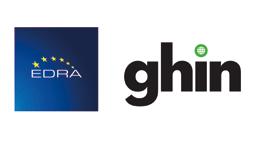


of EV and hybrid production, manufacturers are sourcing fasteners that meet stricter durability, weight, and thermal tolerance standards. Aluminum and high-tensile alloy fasteners are increasingly preferred, while modular vehicle platforms require more standardized fastening systems that improve speed and reduce variability on production lines.
➋ Construction and Infrastructure: The domestic construction market expanded by 4.7% in early 2025 compared to the previous year, driven by large-scale transport and residential projects. Structural fasteners, especially those with anti-corrosion coatings and compliance with seismic standards, are in high demand, particularly in transport, logistics, and renewable energy projects.
➌ Industrial Equipment and Machinery: Hungary’s machinery and components sector grew by 6.3% in 2024, and this momentum continues into 2025. Local and foreign suppliers require customized fasteners for thermal control, automation, and energy applications. Torque-controlled fastening systems, digital verification tools, and assembly optimization software are now increasingly used in precision engineering environments.
The fastening tool segment, including electric drivers, torque wrenches, pneumatic tools, and AR-guided fastening systems, is gaining significant traction across Hungary. Regulatory tightening around quality assurance and traceability in industrial assembly is driving demand for smart tools. Tool system suppliers report increased interest from both large assembly plants and SME subcontractors in:
• Electric torque tools with calibration sensors
• Battery-operated impact drivers with variable torque control
• Guided fastening solutions integrated with ERP or MES systems
Hungary’s tool distribution model is also shifting. B2B digital platforms now account for nearly 22% of tool sales, a figure expected to rise above 30% by 2026. The growth of e-commerce platforms serving industrial buyers is improving tool accessibility, particularly for remote construction and manufacturing zones.
Based on current trajectories and projections from industry sources:
• 2025: Fastener market growth at 5.43%, fastening tool segment estimated at ~6.0%.
• 2026–2027: Growth moderates (~4.8–5.1%) due to anticipated EU regulatory transitions, tightening margins, and input cost volatility.
• 2028–2029: Strong recovery driven by Green Deal-linked investments and increasing exports. Fastener CAGR may reach 12.71%, with continued momentum in fastening tool demand.
Hungary’s strong export infrastructure, combined with its role in nearshoring and supply chain resilience strategies, positions it ahead of several regional peers.
The right chart presents year-over-year percentage growth estimates for Hungary’s fastening tool market, alongside related construction sector growth and raw material cost trends. These values are derived from credible regional studies and global industry research—specifically on power tools and fastening solutions in Central and Eastern Europe—tailored to Hungary’s economic and industrial profile. The slight

(2025-2029;%)

dip in 2027 likely reflects macroeconomic adjustment, followed by strong momentum through 2029. The easing of steel and aluminum price inflation further enhances the sector’s outlook.
Hungary’s geographical location and developed logistics infrastructure support its role as a fastener distribution and re-export center. According to Volza, Hungary consistently exports fasteners to Poland, Romania, Austria, and Ukraine. In 2024, the country registered over 120 distinct export shipments of fastening components, indicating strong B2B and OEM supply network activities.
Local producers are gaining traction through ISO 9001 and ISO/TS 16949 certification, while foreign investors continue to expand their fastener manufacturing capacity near Debrecen and Győr. The trend toward integrated packaging, tools and fasteners combined in tracked systems, is also helping Hungarian firms win supply contracts in electronics, defense, and construction applications.
• Material Costs and Availability: Steel prices in early 2025 rose 9% year-over-year, while aluminum input costs increased by 11%. Sourcing consistent quality materials remains a barrier to growth.
• Workforce Development: While Hungary has a strong vocational training tradition, specialized labor shortages, especially in robotics-based assembly environments, are limiting advanced tool adoption.
• Certification and Compliance Costs: Smaller firms face significant overhead to comply with EU procurement standards and environmental reporting obligations.
➊ For Manufacturers: Prioritize R&D in hybrid alloy fasteners, expand production of coated and multi-application fasteners, and invest in digital twin simulation for fastening process design.
➋ For Distributors: Focus on vertical integration, providing both fasteners and tools. Leverage ERP and inventory analytics to enhance responsiveness and customer retention.
➌ For Policymakers: Accelerate digital infrastructure in logistics parks, expand technical education subsidies, and harmonize standards across EU and non-EU supply chains to ease cross-border trade.

Hungary’s fasteners and fastening tools market in 2025 reflects a rapidly maturing industrial ecosystem that is adopting advanced technology while building on a resilient manufacturing base. With structured investment from both public and private actors, and the support of EU funding cycles, the market is poised for high-value growth across automotive, energy, infrastructure, and precision engineering. For stakeholders ready to innovate and scale, Hungary offers both competitive access to the European market and the ability to influence the fastener industry evolution over the next decade.
Copyright owned by Fastener World / Article by Dr. Sharareh Shahidi Hamedani, UNITAR International University
References
Hungary Industrial Fasteners Market, 6Wresearch (2022–2029)
Europe Industrial Fasteners Market Report, Credence Research, 2024
Grand View Research, Global Industrial Fasteners Market Outlook, 2024
MarketsandMarkets: Power Tools and Fastening Tools Forecasts, 2025–2029
Volza Export Shipment Data: Hungary, 2024
Hungarian Central Statistical Office (KSH): Industrial Production Index and Construction Output Reports, 2025
EU Cohesion Fund Budget Allocation 2021–2027 for Hungary, European Commission
2024-2025第一季波蘭扣件和緊固工具貿易統計

Poland's economy expanded by 2.9% in 2024 despite pressures from energy costs and EU Green Deal transitions. Industrial output particularly in automotive, white goods, and general machinery remains a major contributor to its GDP, accounting for nearly 22% as of late 2024 (Statistics Poland, 2025). This industrial strength supports robust demand for both basic and specialty fasteners, alongside a growing appetite for advanced fastening tools.
According to data from the Polish Agency for Enterprise Development (PARP), Poland imported approximately €214 million worth of fasteners and fastening components in 2024, marking a 4.1% year-over-year increase. At the same time, exports reached €176 million, with a strong presence in markets such as Germany, the Czech Republic, Slovakia, and Sweden. Much of this trade focuses on bolts, screws, nuts, washers, and rivets made of steel, brass, or aluminum.
The fastening tool market also registered a noticeable expansion, with total imports of powerdriven tools valued at over €96 million, supported by demand across automotive plants, construction sites, and light manufacturing facilities.
Poland is one of Europe’s largest vehicle component producers, housing over 300 tier-1 and tier-2 automotive suppliers. Electric vehicle (EV) production continues to rise in Katowice and Lower Silesia, driving up the use of lightweight aluminum fasteners, blind rivets, and vibration-resistant locking systems. These trends correspond with Poland’s export of specialized automotive fasteners valued at €64 million in 2024 alone (Eurostat, 2025).
Fastener consumption in Poland’s construction sector rose by 6.3% in 2024, according to the National Association of Construction Manufacturers. EU recovery funds and public-private partnerships continue to support road, rail, and residential projects. This has significantly increased demand for anchor bolts, heavy-duty expansion plugs, and galvanized steel fasteners.
As a major production hub for appliances and consumer electronics, Poland’s manufacturing sector uses high volumes of small-diameter screws, captive fasteners, and torque-controlled assembly tools. The sector’s output grew 5.4% in 2024, according to GUS (2025), amplifying domestic consumption of highprecision fasteners and related tooling systems.
The fastening tool segment in Poland is evolving with a clear shift toward digitized and ergonomic solutions. Key trends in 2024–Q1 2025 include:
- Cordless Electric Tools: Demand surged by 8.1%, led by battery-operated torque wrenches, impact drivers, and angle grinders.
- Smart Assembly Tools: Increasingly adopted in automotive and aerospace manufacturing. These tools allow for torque verification, data logging, and MES integration.
- Growth in SME Usage: Affordable imports from Taiwan, Germany, and China have increased availability among SMEs involved in furniture, metalwork, and machine maintenance.
Retail and B2B e-commerce for fastening tools also gained momentum, now comprising roughly 27% of total sales, particularly among younger and digitally inclined buyers.
The table below summarizes Poland's key fastener-related trade figures for 2024 (source: Eurostat, UN Comtrade, 2025 ):
public infrastructure spending and industrial automation. The automotive segment maintains solid export strength due to Poland’s role as a Tier-1 supplier in Europe. Meanwhile, the industrial fastener category, though growing more modestly, still represents the highest total trade value, confirming its foundational role in Poland’s manufacturing ecosystem.
Poland remains one of Central Europe’s largest re-exporters of industrial components, acting as a logistics hub for both EU and nonEU flows. According to Volza export shipment data, Poland conducted over 140 distinct fastener export shipments in Q1 2025 alone, with consistent volumes to Hungary, the Czech Republic, Romania, and Germany.
The country’s bonded warehouse infrastructure, road-rail connectivity, and special economic zones (e.g., Katowice Special Economic Zone) enhance its appeal for multinational producers seeking just-in-time supply networks for fasteners and associated tools.
These data reflect a broadly expanding market, with construction fasteners and power tools showing the highest annual growth rates, supported by strong
Copyright owned by Fastener World / Article by Behrooz Lotfian

Fluctuating steel and aluminum prices remain a challenge. Steel input costs rose by 7.5% in late 2024, squeezing margins for smaller fastener producers and importers reliant on raw material precision.
While Poland offers a welleducated technical workforce, skill shortages in CNC machining, robotics, and digital tool operation are emerging. This poses a barrier to deeper adoption of advanced fastening technology.
Changes to EU carbon disclosure, REACH compliance, and the incoming Ecodesign requirements for tools are expected to increase costs, particularly for imported fastening systems and subcomponents.
- Invest in corrosion-resistant, weight-optimized fasteners for EV and aerospace clients.
- Embrace digital twin simulation to optimize fastening system design.
- Consider co-locating production with tool providers to create bundled offerings.
Retailers
- Expand digital catalogs and support for e-commerce platforms.
- Integrate after-sales service and tool calibration to enhance valueadded offerings.
- Target Tier-2 manufacturing firms with modular fastening tool kits.
- Promote technical education in tool calibration, automation, and mechatronics.
- Simplify certification for SMEs under new EU procurement rules.
- Strengthen bilateral trade facilitation with Baltic and Balkan markets to diversify exports.
Poland’s fastener and fastening tool sector in 2024–Q1 2025 reflects a growing, strategically vital industry aligned with national manufacturing strengths and EU industrial strategies. As automation and electrification redefine product requirements, Poland’s trade data underscores both opportunity and pressure to innovate. With continued investment in infrastructure, tooling technology, and workforce development, the country is well-positioned to become a regional leader in fastening systems over the next decade.
References
- Eurostat Trade Database (2025). EU Trade Statistics for Mechanical Fasteners.
- Statistics Poland (GUS). Industrial and Construction Output Reports, Q1 2025.
- Volza Shipment Analytics: Poland Fastener Exports, 2024–2025.
- UN Comtrade Database. HS Codes 7318 & 8467 Trade Flows – Poland, 2024.
- Polish Agency for Enterprise Development (PARP), 2024.
- MarketsandMarkets: Fastening Tools Market – Central Europe Forecasts (2024–2029).
- European Commission, EU Green Deal Implementation Roadmap, 2024–2025.
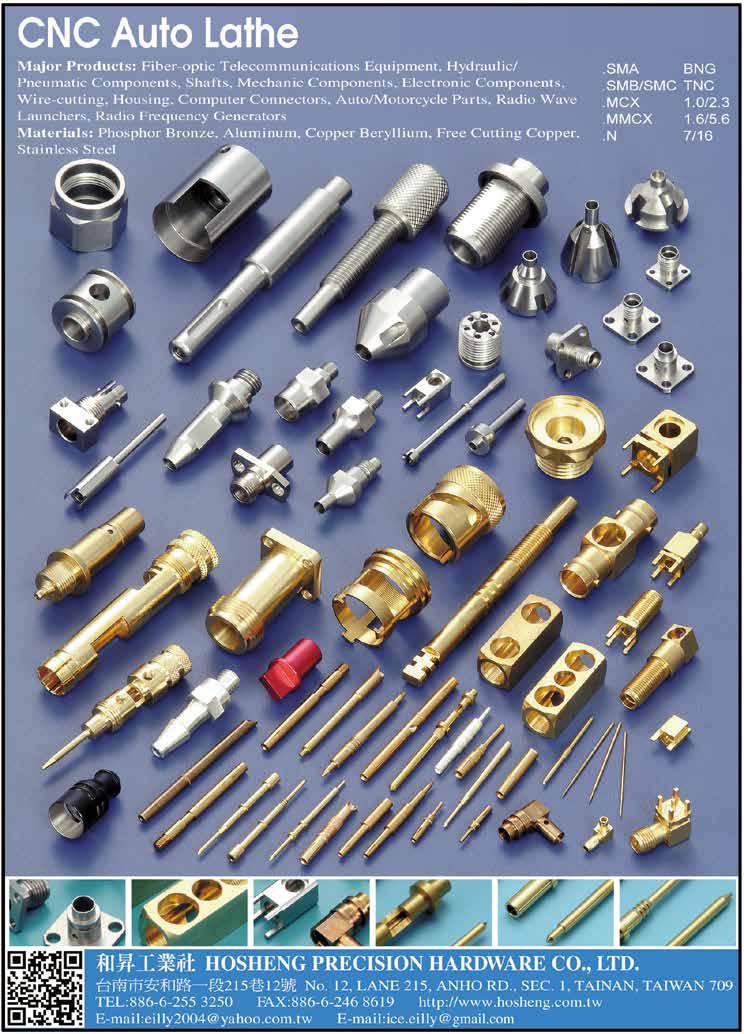

International Exhibition and Convention Centre Expo Krakow
Twodays of industry meetings, presentations of the latest technologies and products, an expert conference on topics important for the fastener industry, Meeting Zone and novelty – Surface Protection Exhibition. This is a preview of this year's edition of the International Trade Fair for Fastener and Fixing Technologies FASTENER POLAND®. The trade fair will take place on October 15th-16th at EXPO Kraków.
The previous edition of the trade fair was attended by 153 exhibitors from 18 countries, 75% of which were foreign companies. The statistics of visitors were equally international. Of the 2,856 guests, 46% came to Krakow from abroad. Europe was most represented by industrialists from Germany, the Czech Republic, Slovakia, Ukraine and Romania. The above data only emphasize the importance of the event and the fact that the FASTENER POLAND® trade fair is the most important place for business meetings in the industry in Central and Eastern Europe.
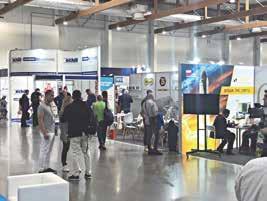

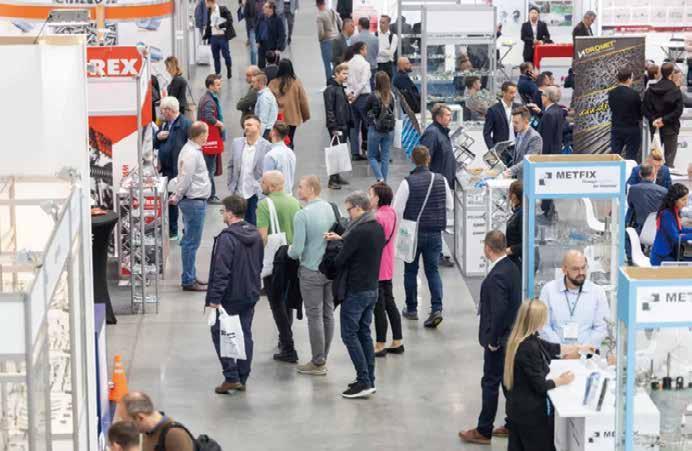
The demand for specialised fasteners, in terms of quality and standards, is constantly growing. This is probably influenced by the most technologically advanced industrial sectors. Polish suppliers have specialised in supplying high-quality fasteners. Thanks to investments in modern technologies that are friendly to the environment and the continuous improvement in the qualifications of production staff, Poland is the third largest supplier of fasteners in the European Union, after Germany and Italy. The location of Poland and well-developed transport infrastructure guarantee uninterrupted supply chains to the furthest corners of the continent. Although labour costs are also rising in the country, Poland still offers competitive prices compared to other European countries. All these factors make Poland an ideal place for investment in the fasteners industry. Exhibitors from all over the world know this, and every year at the only event dedicated to fasteners in Poland they want to establish business contacts, find an agent or investigate the potential to open a branch.
A novelty of this year's edition of the FASTENER POLAND® Trade Fair will be an exhibition devoted to the preparation and protection of the surface of fasteners. This work is carried out at every stage, both by manufacturers and distributors of fasteners. Therefore, the organizer invites manufacturers and suppliers of cleaning, degreasing, coating, varnishing and protection of metal surfaces to EXPO Kraków. Manufacturers of machines and devices, suppliers of chemicals, paints, varnishes and galvanic technologies will present their offer.
D156 BIING FENG ENTERPRISE CO., LTD. 秉鋒興業股份有限公司 www.bf-bestformer.com
D153 BOSS PRECISION WORKS CO., LTD. 伯獅精工股份有限公司 www.screwboss.com
D158 CHI NING CO., LTD. 旗林股份有限公司 www.nutformer.com.tw
D136 CHITE ENTERPRISES CO., LTD. 尚余企業股份有限公司 www.chite.com.tw
D138 DE HUI SCREW INDUSTRY CO., LTD. 德慧螺絲工業股份有限公司 www.dehuiscrew.com
D120 FENG YI TITANIUM FASTENERS (FENG YI STEEL CO., LTD.) 豐益鋼鐵企業有限公司 www.fengyi-ti.com
D152 FRATOM FASTECH CO., LTD. 福敦科技有限公司 www.fratom-fastech.com
D118 HOPLITE INDUSTRY CO., LTD. 合利國際股份有限公司 www.hoplite.com.tw
D114 INDUSTRIAL TECHNOLOGY RESEARCH INSTITUTE (ITRI) 工業技術研究院 中分院 www.itri.org.tw
D115 JOKER INDUSTRIAL CO., LTD. 久可工業股份有限公司 www.joker-fastener.com
D161 KO YING HARDWARE INDUSTRY CO., LTD. 柯穎五金企業有限公司 www.ko-ying.com.tw
The previous edition showed that B2B meetings are a very important aspect of the trade fair. Meeting Zone dedicated to companies that are beginning their adventure with participation in fairs and those that have not planned this form of promotion in this year's budget. In a dedicated area, with a small financial outlay, traders had the opportunity to present their offer and obtain orders. This project was enthusiastically received and will certainly be continued this year, too.
D117 L & W FASTENERS COMPANY 金大鼎企業股份有限公司 www.lwfasteners.com.tw
D154 MAC PRECISION HARDWARE CO. 鑫瑞精密工業有限公司 www.machardware.com.tw
D133 MAO CHUAN INDUSTRIAL CO., LTD. 貿詮實業有限公司 www.maochuan.com.tw
D155 RAY FU ENTERPRISE CO., LTD. 瑞滬企業股份有限公司 www.ray-fu.com
D135 TAI HUEI SCREW INDUSTRY CO., LTD. 台煇螺絲工業股份有限公司 www.taihuei.com
D137 TAIWAN INDUSTRIAL FASTENERS INSTITUTE 台灣螺絲工業同業公會 www.fasteners.org.tw
D176 TAIWAN PRECISION FASTENER CO., LTD. 台灣精密扣件有限公司 www.taiwan-precision-fastener.com
D160 TSUNAMI LTD. 宣大企業有限公司 www.tsunami-p.com.tw
D121 VERTEX PRECISION INDUSTRIAL CORP. 緯紘精密工業股份有限公司 www.vertexprecision.com.tw
D162 YESWIN MACHINERY CO., LTD. 友信機械股份有限公司 www.twyeswin.com
D159 YI XING SCREW CO., LTD. 億炘實業有限公司 yixing-fastener.tw/
D157 ZHISHAN XING ENTERPRISE CO., LTD. 至善行興業有限公司 www.fastener-world.com/en/supplier/zhishan

Bulgaria's industrial sector continues robust expansion, significantly influencing demand for fasteners and fastening tools in 2025. With a stable economic environment and advantageous geographic positioning in Eastern Europe, Bulgaria is emerging as an increasingly strategic market. Anticipated growth above global averages is primarily driven by thriving sectors such as automotive manufacturing, heavy machinery, construction, and infrastructure developments, boosted by European Union investment initiatives and supportive governmental policies.
By mid-2025, Bulgaria's economy is demonstrating strong resilience, maintaining a GDP growth projection of around 2.6%. The manufacturing sector, representing about 27% of Bulgaria’s GDP, remains a robust contributor to national economic stability and growth. The ongoing surge in infrastructure projects, including large-scale construction of transport corridors and residential buildings, has significantly boosted the demand for industrial-grade fasteners.
Automotive assembly, notably buoyed by the electric vehicle (EV) sector, has witnessed marked acceleration. Major European automakers have expanded their Bulgarian operations, incorporating advanced lightweight materials such as aluminium and titanium alloys and corrosion-resistant coatings. Fastening tools have seen considerable market traction, supported by industrial modernization, increased investments in precision and automation technologies, and a growing doit-yourself (DIY) culture.
Bulgaria’s industrial fastener market is forecasted to experience a steadily rising growth trajectory between 2025 and 2029. The annual growth rate is expected to start at approximately 8.8% in 2025 and gradually increase to around 9.56% by 2029. By 2027, the growth rate is projected to stabilize near 7.98%, underscoring Bulgaria’s solid performance within the European region, led predominantly by Germany, followed by the United Kingdom, France, Italy, and Russia. These figures point to a consistent upward trend, supported by Bulgaria’s expanding manufacturing capabilities, increasing foreign direct investment, and integration into pan-European supply chains.
Figure 1: The Projected Annual Growth Rates for Bulgaria’s Industrial Fastener Market from 2025 through 2029
The Bulgarian industrial fastener market is specifically projected to reach around BGN 0.65 billion (€0.33 billion) by the end of 2025. These estimates are grounded in a comprehensive analysis incorporating Bulgaria’s proportional share of Europe’s industrial output, its relative GDP standing, and sector-specific growth factors such as infrastructure development and industrial modernization.
Industrial fasteners, essential to sectors like construction, transportation, and machinery, constitute the bulk of this market. Demand is particularly strong for standard and specialized fasteners used in civil engineering, structural installations, and export-oriented equipment manufacturing.
Within this segment, the automotive fastener subsector is gaining momentum and is expected to reach approximately BGN 0.17 billion by the end of 2025. This growth is being driven by increased vehicle assembly operations, especially in electric vehicle production, and a market shift toward lightweight, durable components. Fasteners made from coated steel, aluminium, and titanium alloys are becoming increasingly favoured for their strength-to-weight advantages and enhanced corrosion resistance.
Figure 1 illustrates the projected annual growth rates for Bulgaria’s industrial fastener market from 2025 through 2029.
It highlights the country’s positive market momentum and reinforces expectations for long-term sector expansion.
A temporary dip in 2027 (down to 7.98%) may reflect cyclical adjustments in industrial demand, project funding delays, or material supply fluctuations across European markets. Nonetheless, the return to stronger growth in 2028 and 2029 suggests that underlying fundamentals remain sound and growth is expected to regain pace quickly.
The market for fastening tools continues its growth trajectory, projected to reach around BGN 0.12 billion by the end of 2025. This figure is similarly derived from market analyses considering growth in the industrial, automotive, and construction sectors, as well as consumer adoption trends in precision and automated fastening technologies.
High demand for precision torque tools, cordless electric drills, automated fastening equipment, and augmented reality (AR)-assisted systems has characterized market growth. Industrial upgrading initiatives, accelerated construction activities, and the expanding DIY consumer segment further contribute to strong tool sales. Manufacturers and distributors report increased adoption of advanced power fastening tools, driven by efficiency, precision requirements, and worker safety considerations.
Looking forward to the latter half of 2025, market optimism remains strong. Continued infrastructure investments, supported by EU funds and robust domestic policies, will fuel sustained demand growth across fasteners and fastening tools. The automotive sector, particularly in EV production, is expected to further increase its utilization of advanced fastening solutions, maintaining consistent demand for specialized components.
Construction projects are poised to sustain their vigorous pace, significantly driving market demand for reliable, high-quality fastening systems and related tools. Enhanced adoption of digital solutions, automation, and precision technologies in fastening tools is also anticipated to rise sharply, offering further market expansion opportunities.
However, stakeholders must remain vigilant regarding global raw material prices, especially steel and titanium, as these could introduce inflationary pressures. Strategic emphasis on innovation, product differentiation, and strict compliance with European regulatory standards will remain essential.
The Bulgarian fastener and fastening tool market presents numerous strategic opportunities for stakeholders due to its economic outlook, industrial expansion, and increasing integration into European supply chains. To fully capitalize on these opportunities, industry stakeholders must strategically position themselves by leveraging current market trends, proactively addressing potential challenges, and innovating to meet evolving customer expectations. Key strategic recommendations include:
Manufacturers should:
• Prioritize innovation and invest in advanced materials and coatings to meet evolving industry demands.
• Leverage digital and automation technologies to optimize manufacturing processes, improve product quality, and reduce operational costs.
• Develop strategic partnerships with automotive and construction industry leaders to expand market reach.
Distributors and retailers should:
• Diversify product portfolios to include advanced and specialized fastening tools catering to both professional and DIY markets.
• Expand online presence and digital sales platforms to meet increasing consumer preferences for e-commerce.
• Enhance after-sales services and customer support to foster longterm client loyalty.
Policymakers and industry associations should:
• Continue aligning national manufacturing standards with EU regulatory frameworks to facilitate seamless market integration and trade.
• Promote industry-specific training programs and skill development initiatives to ensure a skilled workforce, critical for sustained industry growth.
• Encourage public-private partnerships to drive investment and innovation in the fastener and fastening tool sector.
Bulgaria’s fastener and fastening tool market presents not only a promising growth story, but also a strategic convergence point within Europe’s evolving industrial ecosystem. As the country continues to attract foreign manufacturing investment, strengthen its infrastructure pipeline, and embrace technological upgrades in both product design and tooling systems, it is carving out a competitive niche in high-demand segments such as automotive, construction, and energy.
For manufacturers and suppliers, this is a call to action to integrate into a market that values precision, quality, and efficiency, which are traits increasingly demanded by modern assembly lines and infrastructure projects. For policymakers and investors, the growth trajectory signals a broader industrial transformation aligned with EU priorities for innovation, resilience, and green infrastructure.
References
• European Fastener Market Analysis Report, Market Research Future, 2024.
• Bulgaria Industrial and Economic Report, World Bank, 2024.
• Global Automotive Fasteners Market Report, Technavio, 2025.
• Global Power Tools Market Analysis, Allied Market Research, 2024.
• Bulgarian National Statistical Institute Economic Reports, 2025.
• EU Infrastructure Investment Plans and Projections, European Commission, 20242025.
• 6Wresearch. (2024). Bulgaria Industrial Fasteners Market (2025–2029) – Forecast and Trends.
Those who proactively invest in this landscape, whether through advanced fastening technologies, strategic supply chain positioning, or local partnerships, stand to gain significant returns. Bulgaria is no longer just a peripheral manufacturing site; it is fast becoming a vital hub in Europe’s fastener and fastening tool value chain.
SUNCO參與2025年大阪世界博覽會:用螺絲連結藝術與未來
Provided by Sunco Industries
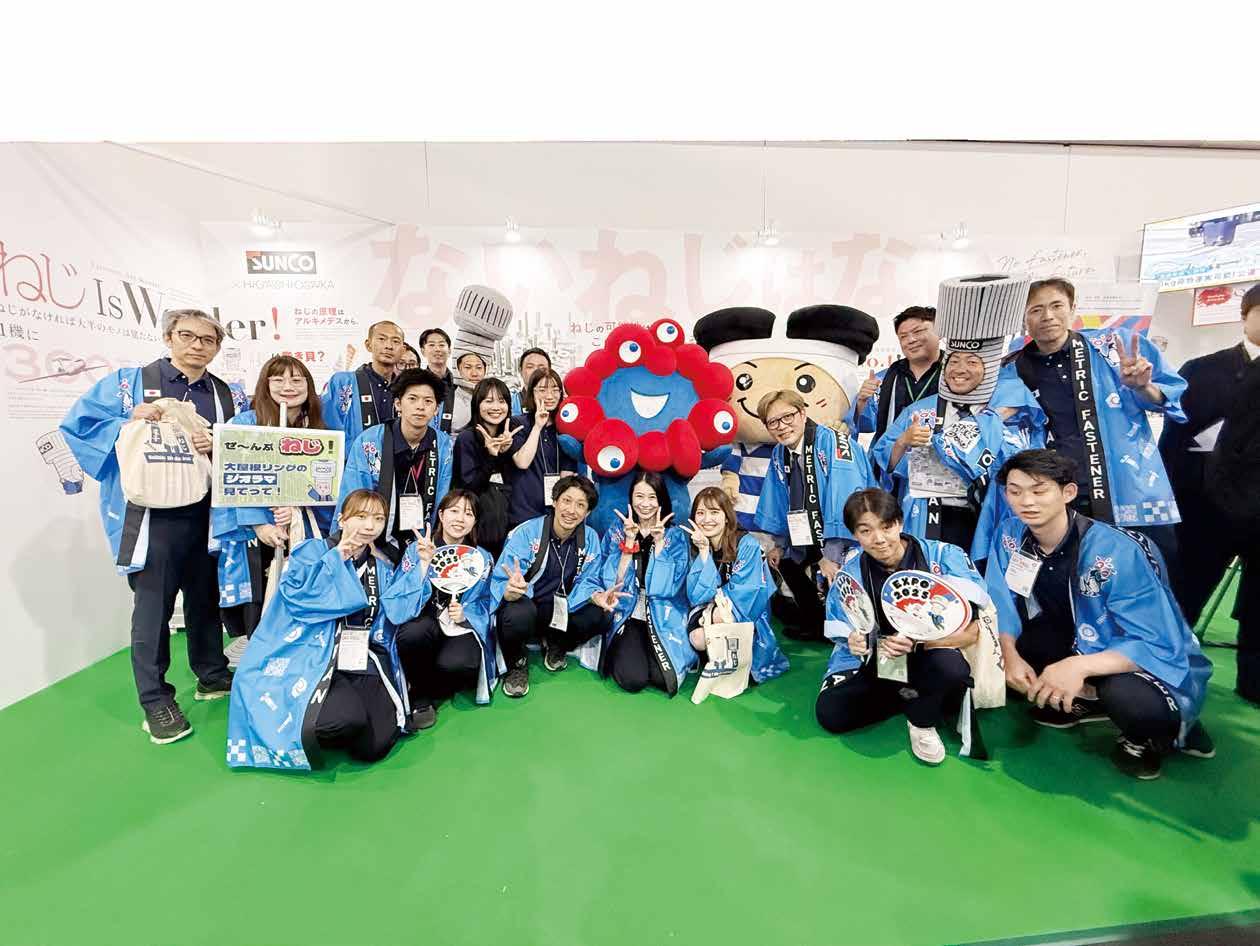
SUNCO exhibited at EXPO 2025, which is being held in Osaka from April 13 through October 13, 2025, under the theme “Designing Future Society for Our Lives.” This international event brings together people and innovations from around the world to address global challenges. Countries from across the globe are participating by presenting their own unique pavilions.
As a related event, the 3rd Japan International Art Festival/Osaka-Kansai EXPO Exhibition was held from July 2 to July 6 at EXPO Messe “WASSE.” SUNCO joined the exhibition through the introduction of the Mayor of Higashiosaka. Its booth, which fused fasteners and art, stood out and captured the attention of many visitors.
Following the opening ceremony of the 3rd Japan International Art Festival/Osaka-Kansai EXPO Exhibition, President Mr. Yoshihide Okuyama gave a greeting at the SUNCO booth. He noted that final products using screws can be found all over the world in industrial goods, automobiles, motorcycles, and more, many of which use JIS-standard screws. Based in Higashiosaka, Osaka Prefecture, home to the largest concentration of screw manufacturers in Japan, SUNCO is committed to delivering JIS screws to the world.
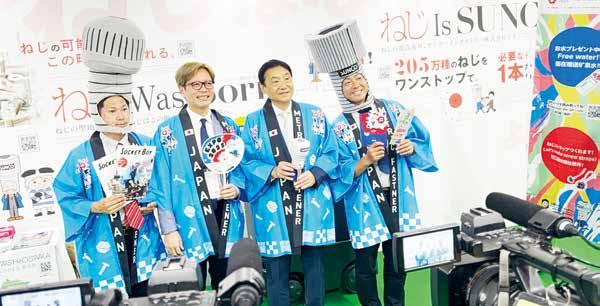
Despite having less than two months to prepare after confirmation, SUNCO’s booth was packed with creative ideas. From meticulously designed booth walls to a screw-themed original keychain-making event, SUNCO’s display overflowed with originality and attracted a constant stream of visitors throughout the day. The highlight was a diorama art piece of the EXPO 2025´ s symbolic “Grand Ring." This iconic structure was recreated using screws and became a topic of conversation on TV and online news.
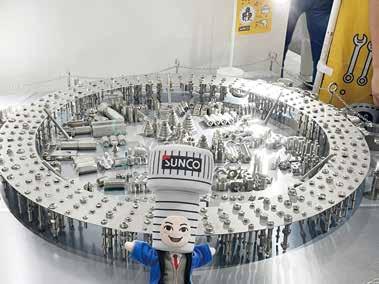
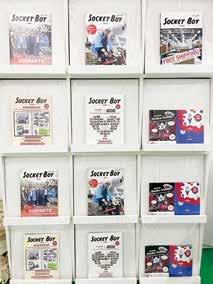

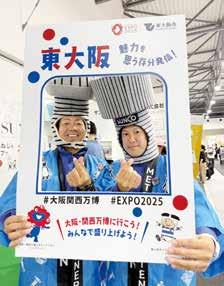
Including preliminary meetings, the diorama took over a month to complete. Approximately 1,500 to 1,600 screws, all SUNCO products, were used. Selected from SUNCO’s extensive catalog of over 2.01 million items, the screws added depth and realism to the artwork. The production team stated, “The actual Grand Ring is constructed without any nails or screws. That’s why recreating it with screws carries significant meaning and appeal.” Screws, typically behind-the-scenes structural components, took center stage in this piece. The natural weight and luster of metal gave the work a strong presence. The team hopes visitors will enjoy discovering and being surprised by the screws, saying things like, “ What is this screw normally used for?" or “I can´ t believe this is a screw!"
The booth welcomed a wide range of visitors, from school groups and families to elderly guests, creating a lively and unexpectedly large turnout. Many visitors from Higashiosaka commented, “I’ve seen the penguin logo before,” “I’ve heard the name on train announcements,” and “I saw the TV commercial.” Although most visitors were Japanese, somewhat off from SUNCO’s original aim of promoting JIS screws internationally, the event offered a valuable opportunity to connect with the general public and raised awareness of SUNCO´ s name beyond the industry.
During JAPAN DAY on July 3, a vibrant parade was held, with SUNCO´ s original character “ Socket Boy " leading the way. As various Japanese mascot characters walked in line, many attendees called out “Hey, Socket Boy!” and waved in support.
Within the booth, SUNCO actively distributed its magazine “ SOCKET BOY " to share its efforts and highlight the appeal of the screw industry. Although the audience turned out to be predominantly Japanese, limiting the reach to overseas readers, the team remarked that today, anyone can become a media outlet through social media. They believe that spreading the word online can serve as effective marketing. Even simply raising awareness that such an actively PRdriven company exists in Higashiosaka made the exhibition worthwhile.
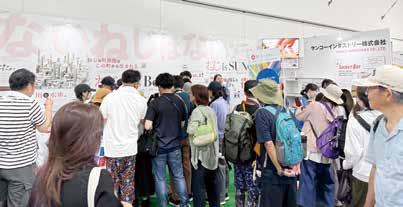
The collaborative efforts leading up to SUNCO’s participation in EXPO 2025 marked a major achievement for the company. The opportunity to exhibit came just as employees began to develop a global mindset, making it a potential catalyst for future international expansion. Looking forward, SUNCO plans to promote young talent and aims to increase global brand recognition and boost overseas sales. With its mission of delivering Japanese (JIS) screws to the world, SUNCO remains committed to taking on new challenges.

Video Highlights


Data note: The data for this article is derived from the US Census trade statistics. US Census trade statistics analyze imports and exports on all modes of transportation. That value is calculated in USD by general FOB for imports and FOB for exports. The HS Codes used in this article are 7526 (other articles of iron or steel), 8487(machinery parts, not containing electrical connectors, insulators, coils, contacts, or other electric features), 7609 (aluminum tube or pipe fittings), and 7419 (articles of copper).
As global supply chains undergo strategic recalibration in 2025, the United States’ position in the CNC machining market continues to reflect both competitive opportunity and structural dependency. This article examines the evolving landscape of U.S. trade in CNC-related components, focusing on key import and export trends through the lens of four critical HS codes: 7326 (other articles of iron or steel), 8487 (machinery parts not containing electrical features), 7609 (aluminum tube or pipe fittings), and 7419 (articles
of copper). These categories capture a broad cross-section of the materials and parts integral to precision manufacturing and automation—sectors that are both heavily globalized and acutely sensitive to policy, logistics, and reshoring efforts.
Overlaying these trends is the persistent influence of tariffs, particularly on imports from Asia and Europe, which continue to reshape sourcing strategies and cost structures across the CNC supply chain. With trade tensions between the U.S. and major manufacturing economies (such as China) remaining unresolved or periodically escalating, the pricing and availability of key inputs have become more volatile. Tariff regimes have not only raised the landed cost of critical components but also accelerated efforts by U.S. manufacturers to diversify suppliers, seek domestic alternatives, or reengineer product designs to circumvent duties. This article explores how these trade policy dynamics are reflected in the latest import/export data and what they suggest about the strategic direction of the U.S. CNC sector amid ongoing geopolitical and economic uncertainty.
Monthly Trend Analysis of U.S. Imports Based on Total FOB Value for HS Codes 7326, 7419, 7609, and 8487


Main query filters: HS Code : 7326 - articles of iron or steel, others or 7419 - articles of copper, others or 7609 - aluminum tube or pipe fittings (including couplings, elbows, and sleeves) or 8487 - machinery parts, not cont. electrical connectors, insulators, coils, contacts, etc. others
01/01/2024 - 04/30/2024 01/01/2025
HS Code (4)
7326 - ARTICLES OF IRON OR
8487 - MACHINERY PARTS, NOT CONT. ELECTRICAL CONNECTORS, INSULATORS, COILS, CONTACTS, ETC. OTHERS
7419 -
7609 - ALUMINUM TUBE OR PIPE FITTINGS (INCLUDING COUPLINGS, ELBOWS, AND SLEEVES)
During the first four months of 2025, the United States imported over US$2.5 billion worth of critical CNC-related components classified under HS codes 7326, 8487, 7419, and 7609. Most of these imports originated from China, Mexico, and Canada, underscoring the continued reliance on established North American and Asian manufacturing hubs. Among the four categories, HS 7326 (other articles of iron or steel) accounted for the highest volume and total value, followed by 8487 (non-electrical machinery parts), 7419 (articles of copper), and 7609 (aluminum tube or pipe fittings).China remained the leading supplier, contributing nearly 26% of total import value, with Mexico and Canada following at 20% and 12%, respectively. European trade was also notable, with Italy and Germany serving as the primary EU partners. Across Asia, India, Taiwan, Japan, South Korea, and Vietnam played significant secondary roles in supporting the U.S. CNC supply chain.
However, beginning in February 2025, monthly import values have experienced a clear and sustained downward trend, a pattern not limited to Chinese-origin goods but also observed across North American suppliers. This contraction appears to be closely tied to the escalating tariff environment and regulatory uncertainty, particularly surrounding industrial components. With new and extended tariffs on CNC-related imports especially those with high strategic or technological relevance businesses are grappling with increased costs, sourcing disruptions, and a reassessment of supplier portfolios. As a result, many U.S. manufacturers are reducing order volumes, delaying procurement, or shifting to alternative sourcing strategies, which is reflected in the steady decline in total monthly FOB values across all major partner countries.
Compared to the same period in 2024, U.S. imports of the four key CNC-related components declined by 7% in total value during the first four months of 2025. This drop was mirrored across most trading partners: imports from Mexico fell by 16%, Canada saw a 22% decline, and South Korea saw a 36% drop. Other trading partners increased their exports to the U.S. including Vietnam which exported 64% more in total value in 2025 compared to the same period in 2024, India increased by 17%, and Taiwan by nearly 10%.
Among the various iron and steel components imported under HS code 7326, subheading 732690 (other articles of iron or steel) represented the largest share, accounting for 83% of the total import value during the first four months of 2025. This was followed by 732620 (articles of iron or steel wire), which also contributed significantly to overall trade activity. Notably, 732611 (grinding balls and similar articles for mills) saw a substantial increase, with import value rising 54% compared to the same period in 2024. Even more striking was the 256% surge in import volume measured by gross weight (kg), indicating a sharp rise in demand for these industrial milling components, possibly driven by growth in domestic processing industries or shifting supply chain strategies.
Main query filters: HS Code : 7326 - articles of iron or steel, others or 7419 - articles of copper, others or 7609 - aluminum tube or pipe fittings (including couplings, elbows, and sleeves) or 8487 - machinery parts, not cont. electrical connectors, insulators, coils, contacts, etc. others



HS Code (4)
7326 -
8487 - MACHINERY PARTS, NOT CONT. ELECTRICAL CONNECTORS, INSULATORS, COILS, CONTACTS, ETC. OTHERS
7609 - ALUMINUM TUBE OR PIPE FITTINGS (INCLUDING COUPLINGS, ELBOWS, AND SLEEVES)


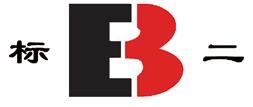

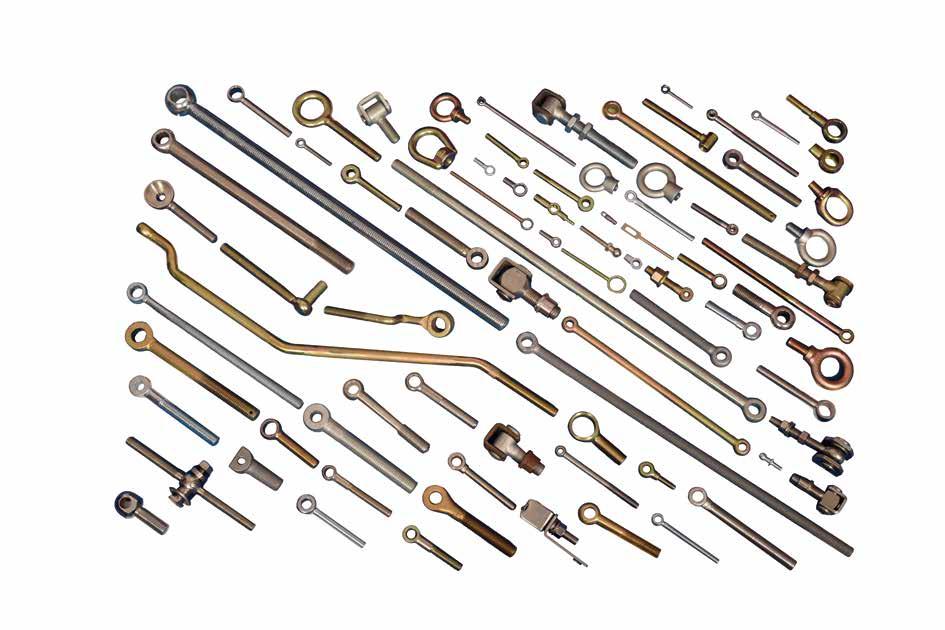
Interestingly, despite the sharp decline in imports, the United States exported a total of US$2.6 billion worth of CNC-related components—classified under HS codes 7326, 8487, 7419, and 7609—during the first four months of 2025. The primary destinations for these exports were Mexico, Canada, and Germany, reflecting strong demand among key manufacturing and industrial partners.
Notably, exports to Germany surged by 53% in value compared to the same period in 2024, signaling increased transatlantic industrial collaboration or possibly supply chain shifts within the EU. Similarly, exports to Singapore rose by 28%, further highlighting Southeast Asia’s growing role in advanced manufacturing and assembly operations.




Among the four product categories, HS 7326 (other articles of iron or steel) dominated outbound trade, accounting for 81% of the total export value so far in 2025. This was followed by HS 8487 (non-electrical machinery parts) at 12.4%, HS 7419 (articles of copper) at 4%, and HS 7609 (aluminum tube or pipe fittings) at 2.4%. These figures reflect the U.S. continued strength in high-value, precision-manufactured components, and may suggest a relative resilience in its export competitiveness even amid turbulent global trade dynamics.
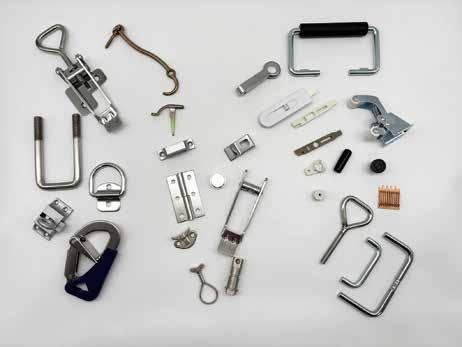

While the first four months of 2025 offer valuable insights into shifting trade patterns in the U.S. CNC component market, the path forward remains uncertain. The sharp declines in import volumes, coupled with selective growth in export destinations, suggest that manufacturers are actively recalibrating sourcing and distribution strategies in response to evolving geopolitical and economic pressures. However, with global tariff regimes still in flux, supply chain vulnerabilities exposed, and diplomatic tensions lingering across key trade corridors, the long-term stability of this sector is far from assured. As stakeholders navigate this volatile landscape, the next several quarters will be critical in determining whether current trends represent a temporary disruption or signal a more permanent realignment in global CNC trade.
Copyright owned by Fastener World Article by Sabrina Rodriguez
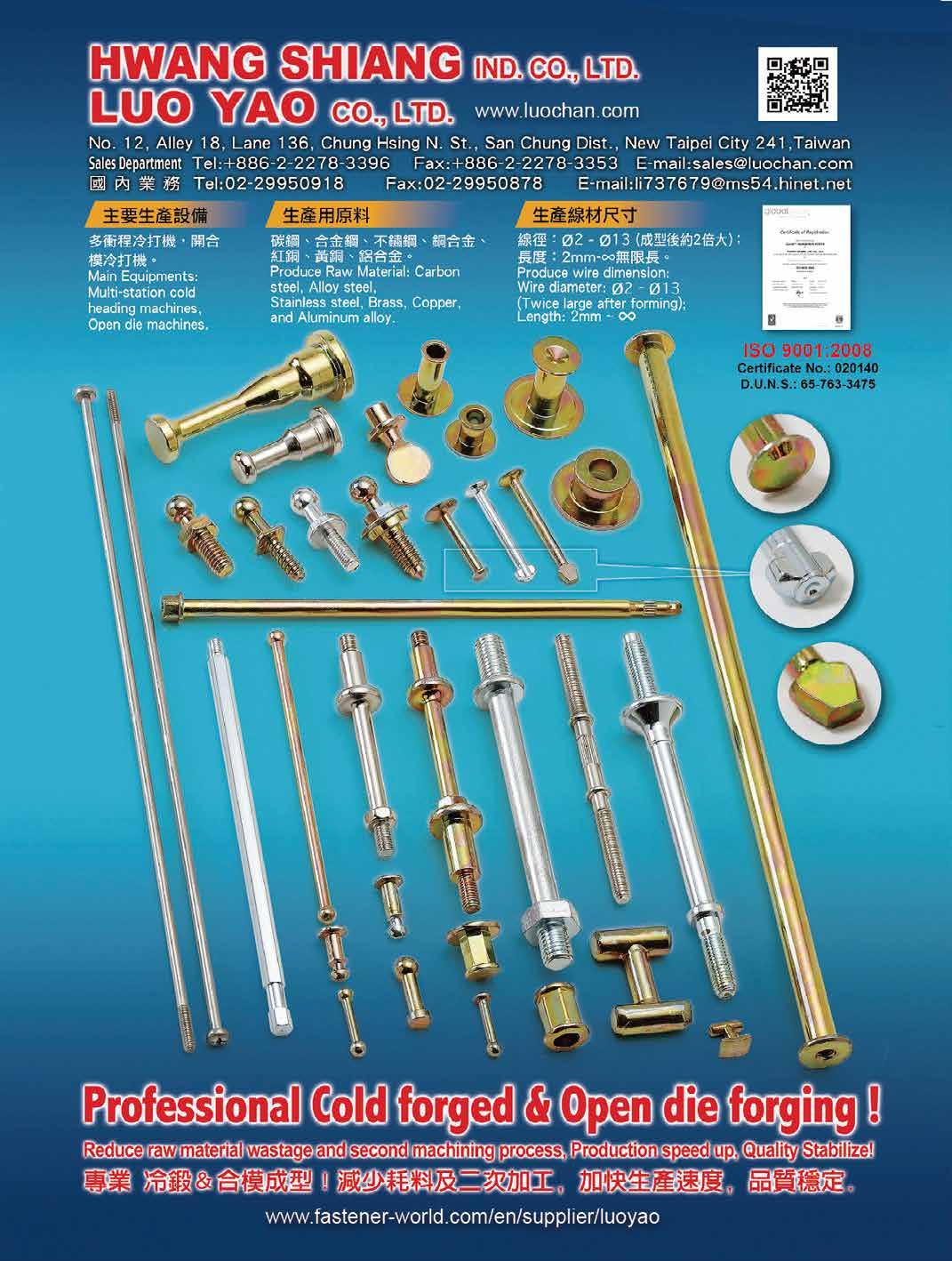

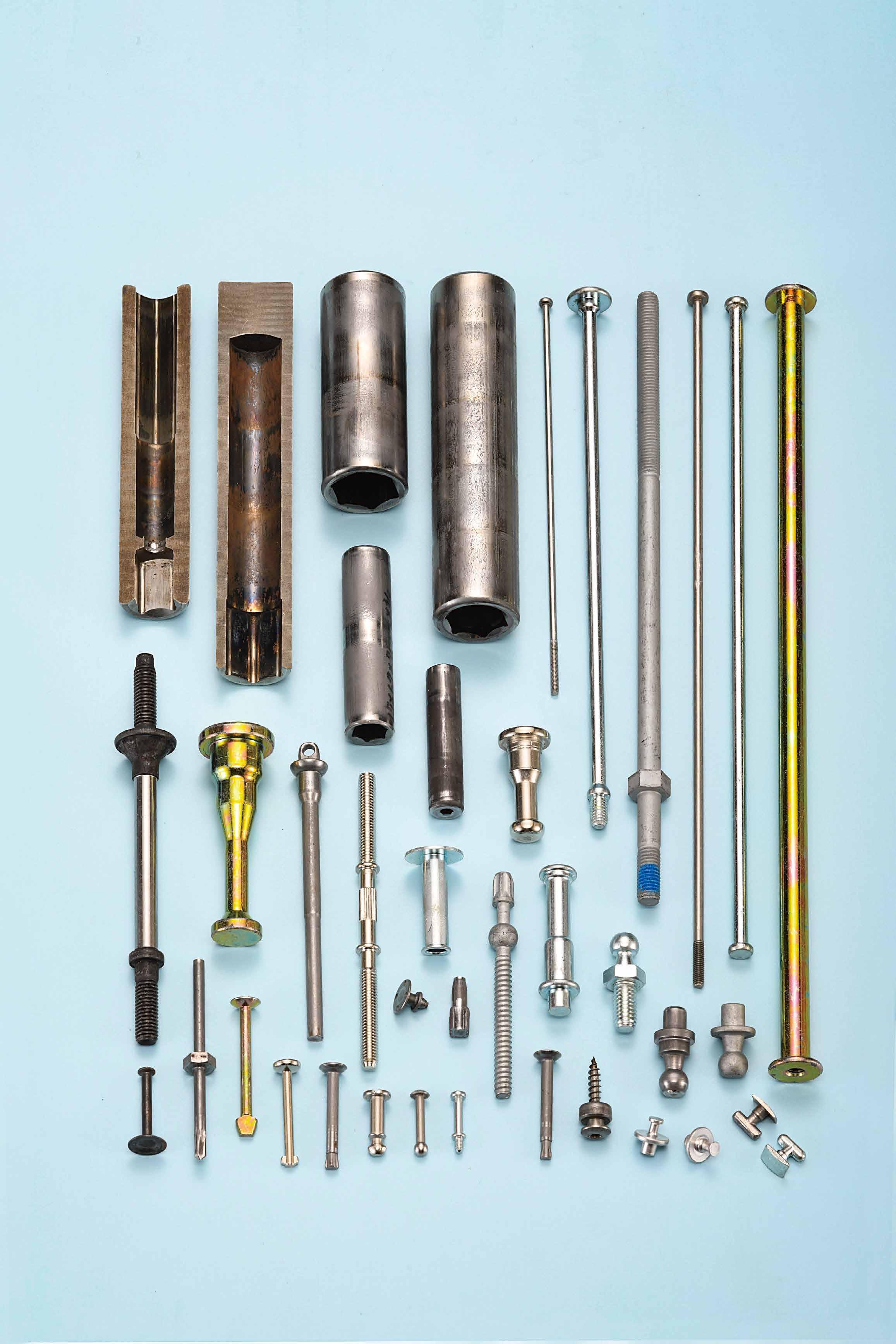
台灣CNC車修零組件在中東北非
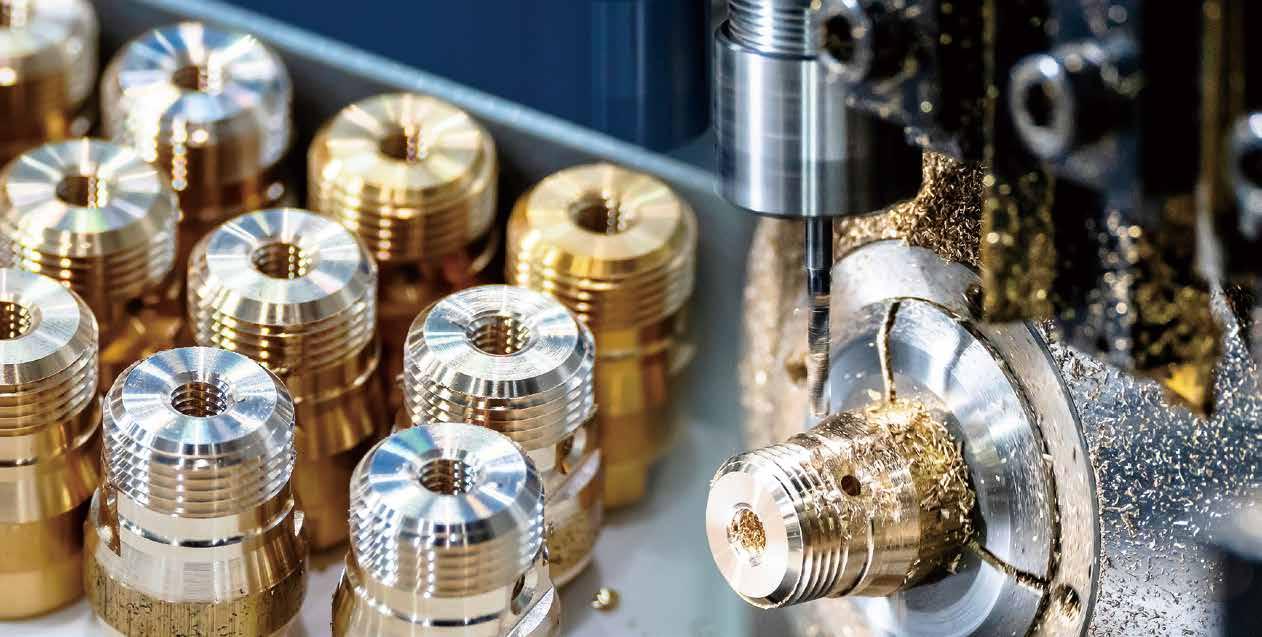
Due to the restructuring of the industrial supply chain caused by the global political and economic changes, Taiwan's CNC aftermarket parts industry is gradually expanding from existing markets to other emerging markets by virtue of its high-precision machining technology, flexible order-taking capability, and complete industrial agglomeration.

The MENA and Latin America have become the important potential markets for Taiwanese companies to focus on due to their high level of car ownership, stable demand for aftermarket parts, and well-established industrial base. The Middle East region mainly comprises the Gulf States and industrialized countries in North Africa, showing high demand for aftermarket parts, but have more variable and complex certification thresholds and trade policies. In Latin America, Mexico is a country focused on export, which benefits from the advantages of vehicle maintenance & repair and FTAs, so it has a long-term import demand for Taiwanese related parts. This article focuses on 6 Middle East countries (Saudi Arabia, the UAE, Qatar, Kuwait, Bahrain, and Oman), 3 countries in North Africa (Egypt, Algeria, and Morocco), and 13 countries in Latin America, to analyze their market potential, the dynamics of major importers and exporters, and the competitive structure, which will serve as a reference for Taiwan's CNC machined parts (HS code 7326, 7419, 7609) and related industries to make their global layout.
Table 1 shows the CNC machined parts imports of Taiwan, MENA, and Latin American markets in 2020-2024. In 2024, MENA and Latin American markets imported US$7.85 billion worth of CNC machined parts, accounting for 11% of the global import (US$71.39 billion), and the 5-year CAGR was 5.8%, showing a stable market demand. Mexico was the world's 4th largest importer of CNC machined parts and its import far exceeded that of Brazil (ranking 26th). Taiwan's annual import was US$ 750 million. If one wants to penetrate the market in MENA and Latin America, he should focus on Mexico, Brazil, Saudi Arabia, the UAE and others with higher import value.
Table 2 shows the CNC machined parts exports of Taiwan, MENA, and Latin American markets in 20202024. In 2024, MENA and Latin American markets exported about US$2.98 billion worth of CNC machined parts, accounting for only 4% of the global export (US$ 75.30 billion), and the 5-year CAGR was 9.6%, still showing a certain export potential. Mexico was the world's 8th largest exporter of CNC machined parts due to the market demand from N. America, and its CAGR was over 10%, making it a much larger exporter than Brazil (ranked 40th). Taiwan's annual export was US$ 1.21 billion, ranking 18th globally. Taiwan's related industries can consider setting up factories or OEM cooperation in Mexico for exports to the American market, lowering the impact of tariffs and strengthening global distribution.
Table 3 shows the import sources of Taiwan’s CNC machined parts in 2020-2024. In 2024 the value of CNC machined parts Taiwan imported was US$750 million, with a CAGR of 11.7%. China was its no.1 import origin, with the import in 2024 reaching US$ 286 million, accounting for 38.1%, and an average annual growth rate of 14.9%, followed by Japan (24%), the U.S. (9.6%), the Netherlands (7.6%), and Germany (4.4%), all of which accounted for over 80% of the total import. China, the U.S., Germany showed a stable CAGR of imports, indicating that Taiwan has shifted its reliance on China to Europe, the U.S. and Japan in CNC machined parts imports.
Table 4 shows the export destinations of Taiwan’s CNC machined parts in 2020-2024. From 2020 to 2024, the CAGR of Taiwan's CNC machined parts exports showed a decline, with the total export dropping from US$ 1.29 billion to US$ 1.21 billion and the 5-year CAGR was -1.6%. The U.S. was its no.1 export destination, with the export in 2024 being US$ 400 million, accounting for 33.4%. The U.S., together with Japan (14.3%) and China (11.1%), accounted for nearly 60% of the total export. Although Taiwan's export to Mexico was only US$ 0.03 billion, the CAGR was 31.4%, indicating that Taiwan is actively strengthening its export to Mexico, a major importer of CNC machined parts.


Table 5 shows Taiwan’s import of various CNC machined parts from 2020 to 2024. The most imported CNC machined parts of Taiwan from 2020 to 2024 were “Other Articles of Iron and Steel (HS code 7326)”, with an import value of US$ 496 million in 2024, accounting for 66% of the total import, and with an average annual growth rate of 11.3%, indicating that articles of iron and steel are still the main import items in the CNC machined parts market. The 2nd most imported items were “Articles of Copper (HS code 7419)”, with an import value of US$ 0.245 billion in 2024, accounting for 32.6%, and an average annual growth rate of 13.9%, the highest growth rate among all items, reflecting the increasing application of copper products in the precision maintenance field. Hence, Taiwan needs to strengthen its processing technology and materials used to reduce the dependence on import.
Table 6 shows Taiwan’s export of various CNC machined parts from 2020 to 2024. The most exported CNC machined parts of Taiwan from 2020 to 2024 were “Other Articles of Iron and Steel (HS code 7326)” with an export value of US$1,046 million in 2024, accounting for 86.3%, and the 5-year CAGR of about -1.6%. “Other articles of copper (HS 7419)” showed a significant decline. As these products are mostly used for internal parts of engine tanks and heat exchanger systems (copper heat exchanger tubes, fixtures), as well as electrical connectors, copper grounding bushings, and turned parts for transformer repairs, such a decline suggests that the demand for certain mid- to high-end materials has weakened. Although the share of aluminum tubes or pipe fittings (HS code 7609) was only 1.4%, the average annual growth rate was 8.9%, the only positive growth item. Taiwan's export of CNC machined parts are still concentrated on articles of iron and steel, so it should expand the application of highvalue materials and diversify its markets to cope with the risk of fluctuating orders in the steel market.
Table 7 shows Taiwan’s exports of 732690, 732620, 732619, 732611 from 2020 to 2024. The export of 732690 was US$ 1,014 million, accounting for 96.9% of the total export in 2024, but the CAGR slipped 1.3%. 732690 is mostly used in vehicle suspension links, rocker arms, fixed washers, engine mounts, and high load industrial vehicle repair parts (e.g., gear washers, steel bushings, hinge seats, etc.). These products are cost-effective, but they face price competition as they are standard parts, so their advantages of customized processing, heat treatment upgrades, and surface treatments should be strengthened in order not to be defined as middle- and low-end products. Other steel wire products, unprocessed forged/stamped steel products, and unprocessed steel grinding ball products are relatively small in value, and manufacturers need to strengthen the development of high value-added products to diversify risks.
Copyright owned by Fastener World / Article by Dr. Arthur Hsu
a. MENA and Latin American markets show potential. Brand building and local service are the Key
Although MENA and Latin America are not the main export markets for Taiwan's CNC machined parts, its imports have grown significantly in recent years, reflecting the rising demand for basic manufacturing and the expansion potential of the aftermarket sector in these countries. However, the local market has low brand awareness and high price sensitivity. It is suggested that Taiwan manufacturers enhance service timeliness and brand trust by participating in exhibitions, establishing local distribution channels, or collaborating with technical service centers.
b. The local manufacturing base is weak, and Taiwan has a technological and delivery advantage.
MENA and Latin America still have a certain demand for automotive CNC parts and depend on imports. In view of Taiwan's advantages of CNC machined part precision and delivery stability, Taiwan is suitable for the supply of medium and high-end maintenance factories or OEM market. It is suggested that Taiwanese manufacturers focus on high wear-rate items (e.g., shafts, sleeves, end caps) to carry out product customization and standard parts layout.
c. Responding to competitors' low price competition via quality differentiation and FTA
MENA and Latin American markets are becoming the targets for low-cost part exports from China. Taiwanese manufacturers should avoid price-cutting, focus on product lifespan, machining accuracy, and after-sales service, and utilize FTA between Taiwan and Latin American countries (e.g., Paraguay) to reduce the cost of import tariffs and create a global competitiveness.
d. Focus on connections to key players in the Mexican
Mexico has gradually developed into a trend-setting country for the global automotive industry thanks to the concentration of U.S. and Japanese carmakers investing in plants, especially in the Bajío region of Mexico, where many industry clusters have been formed. In recent years, automobile industry suppliers and their satellite factories from Taiwan, Japan, Korea, and China, have continued to meet the requirements of major int’l carmakers to set up factories in Mexico. Therefore, Taiwanese manufacturers can evaluate the adoption of local processing, warehousing, and OEM, and grasp the aftermarket parts demand in the Americas to enhance the added value of its exports and toughness in the market.


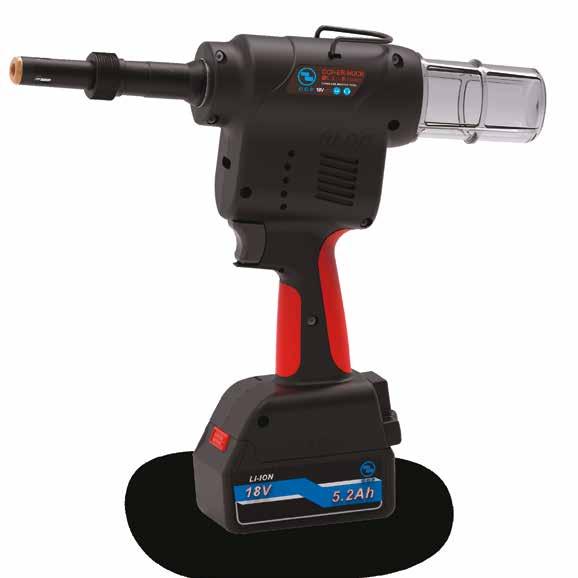
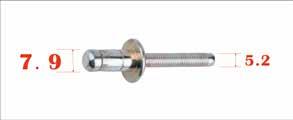
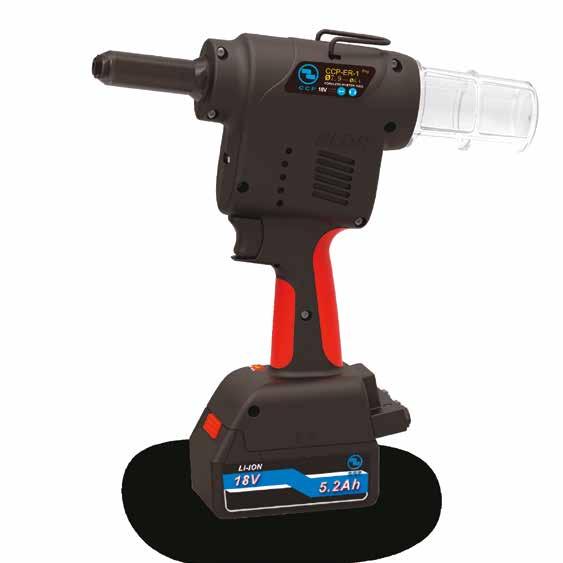
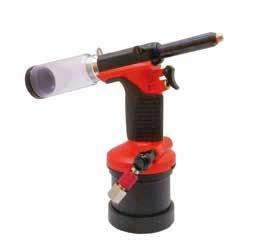
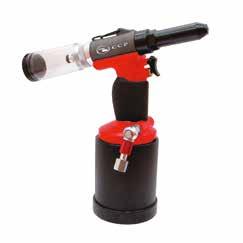
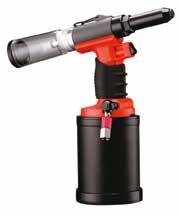
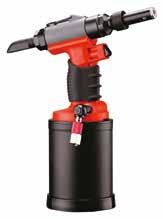
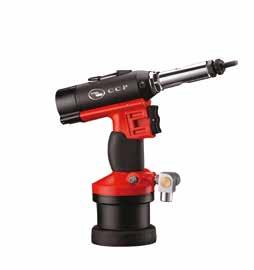

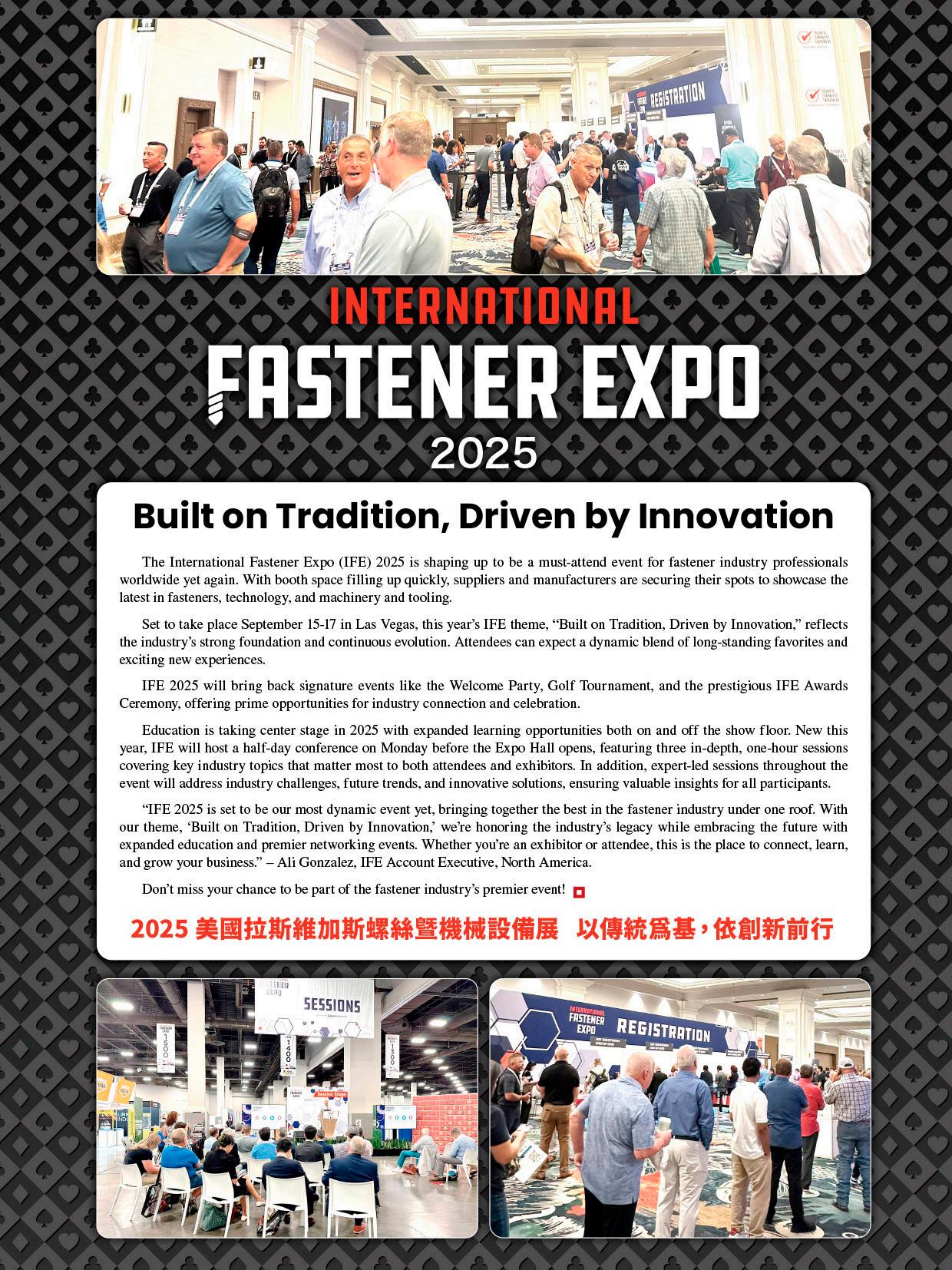


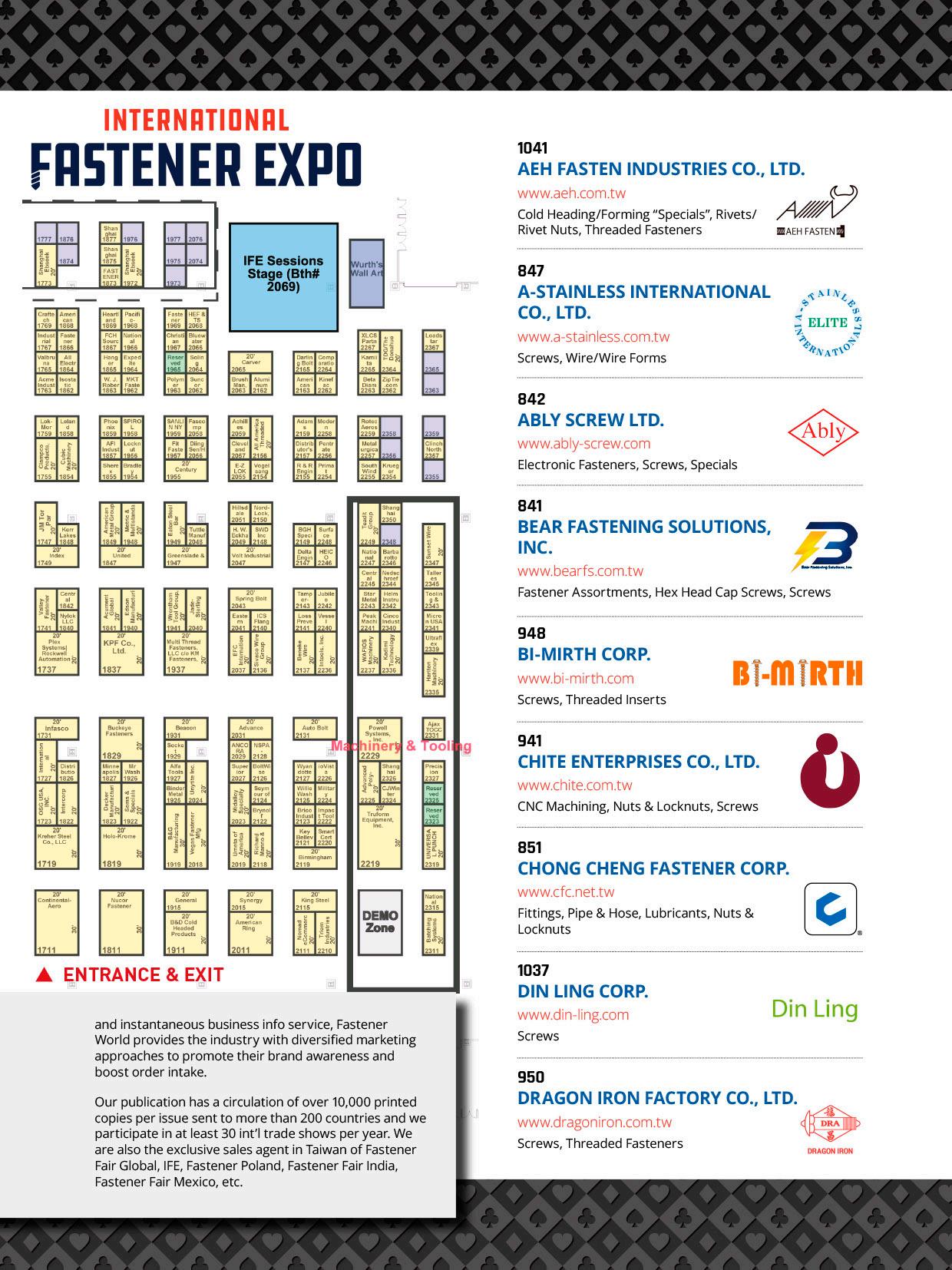
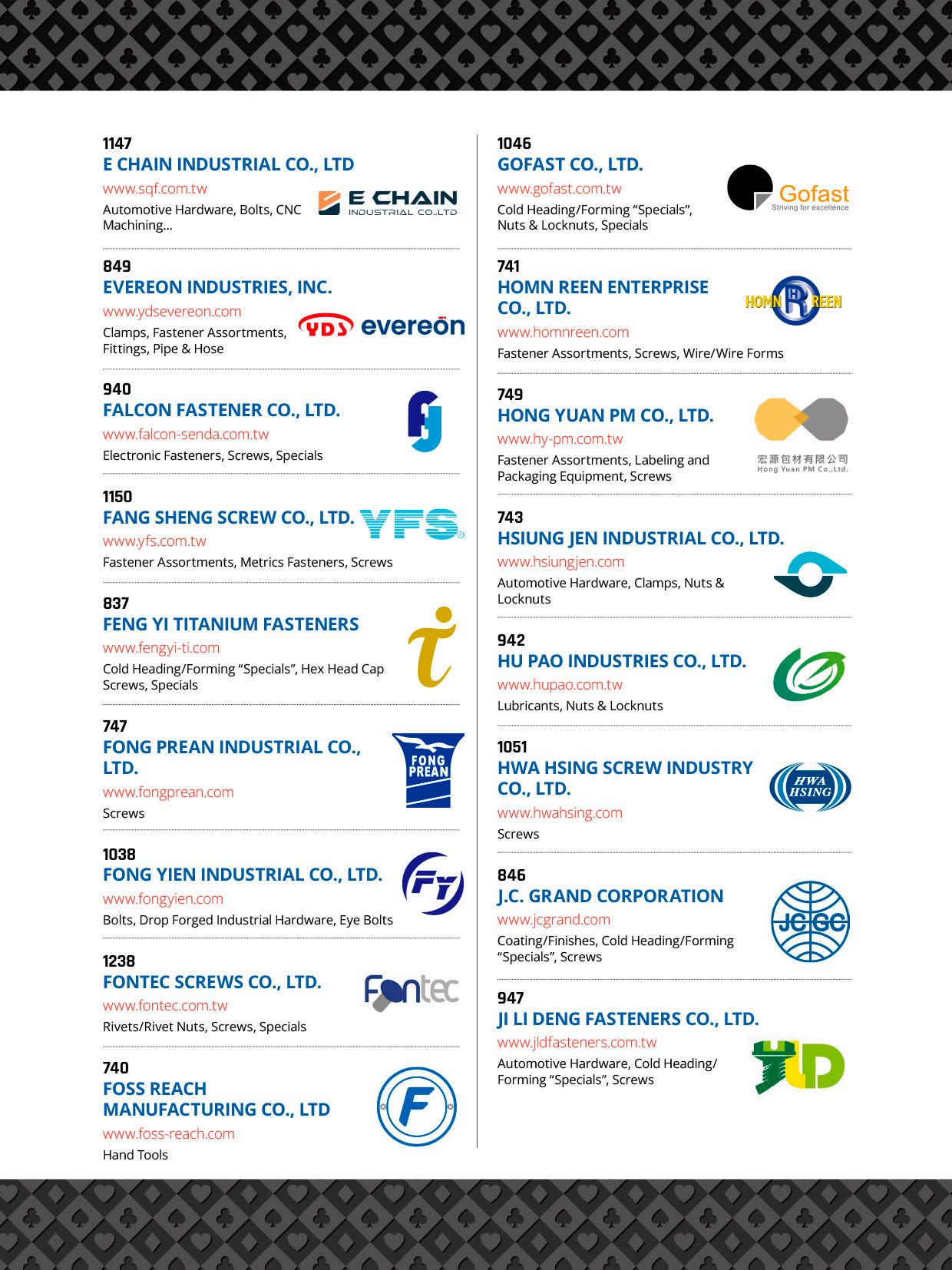
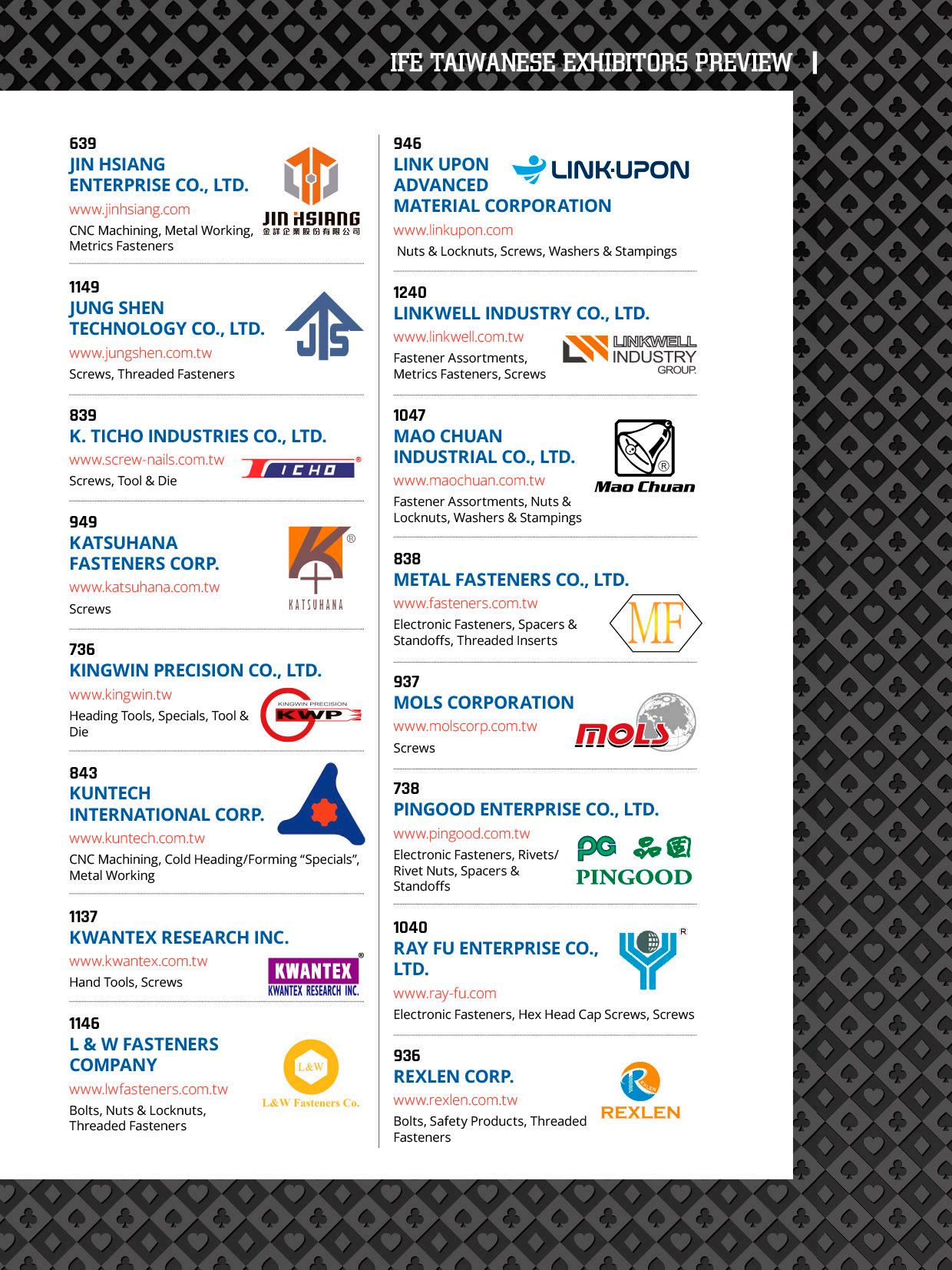

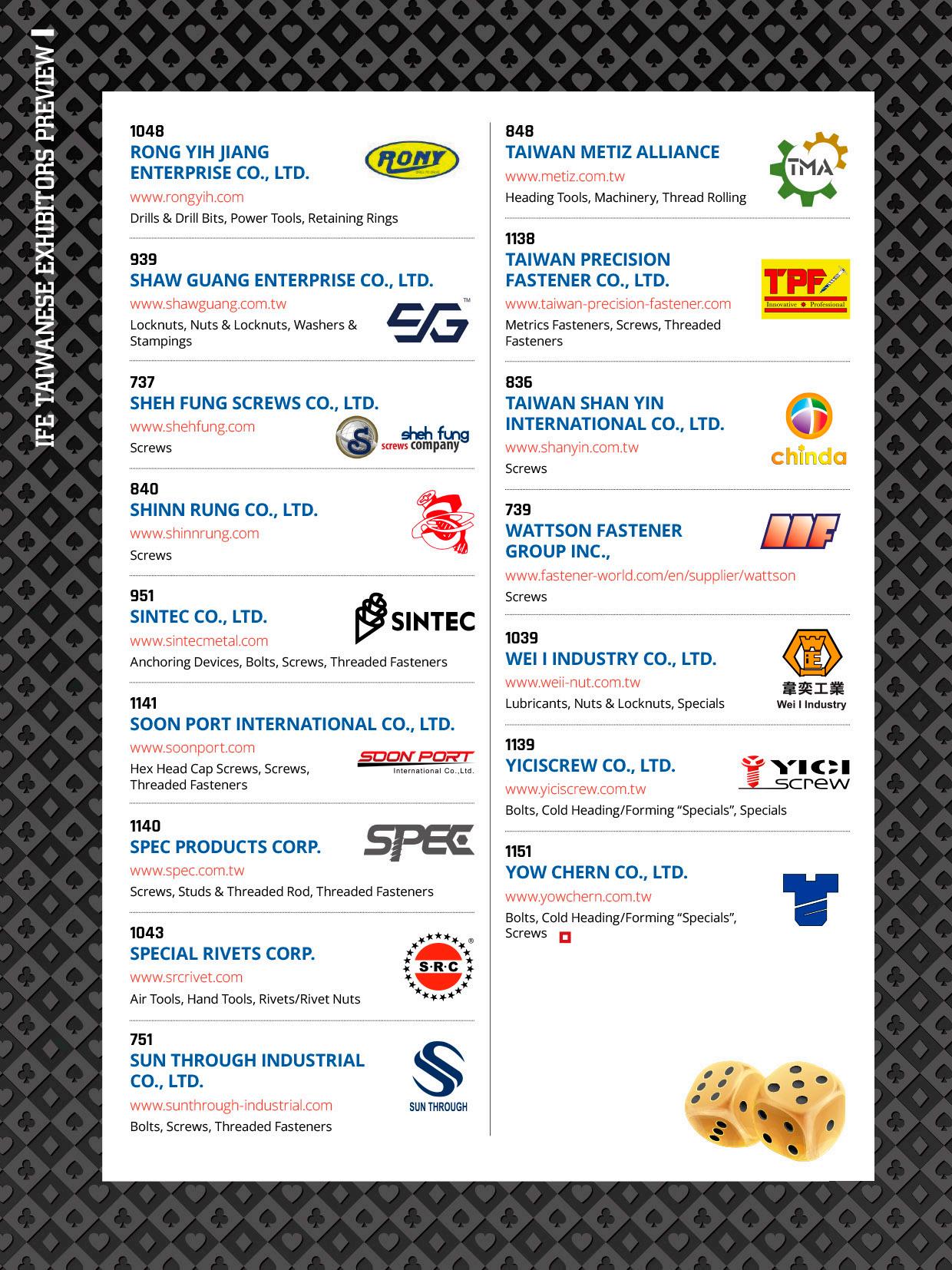

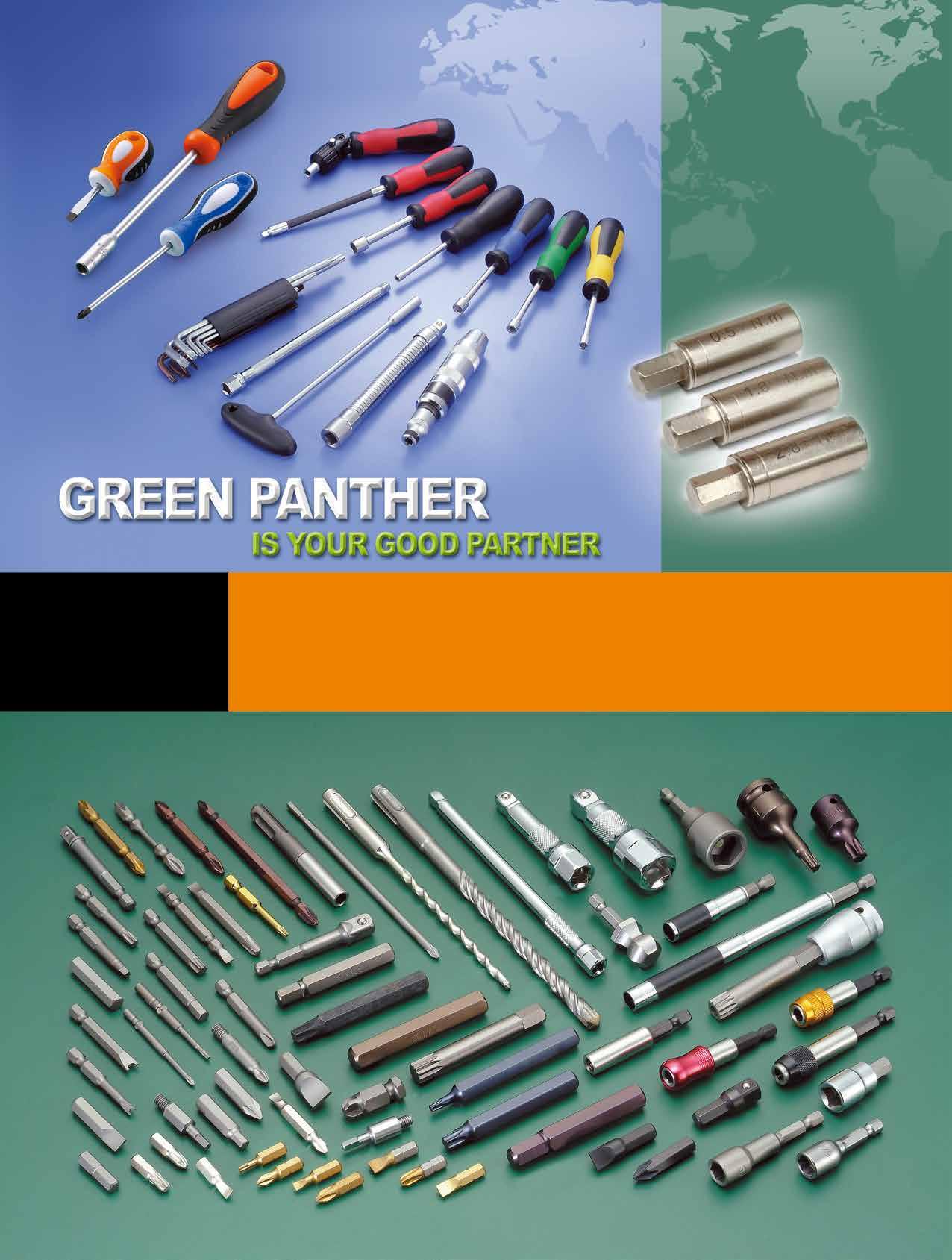


In the context of steadily growing global industrial demand, Latin America is increasingly asserting its importance as an emerging market. With ongoing development in infrastructure, automotive, and manufacturing sectors in this region, the Latin American market for fasteners and fastening tools is expanding steadily and showing a clear reliance on imports. Fierce competition among the United States, China, and Europe contributes to a complex and dynamic international trade environment within Latin America. Taiwan has also gradually penetrated this market, demonstrating its influence within the global industrial supply chain. This report offers an indepth analysis of the Latin American fastener and fastening tool market in 2024. It examines the trade structure, key country roles, international competitive landscape, and policy risks. The aim is to provide the industry with comprehensive and forward-looking market insights to help enterprises grasp opportunities, meet challenges, and continuously optimize their deployment and strategic adjustments.
The report is divided into two parts. Part One is Fastener Product Analysis illustrated with charts presenting trade statistics for Latin America covering the full year of 2024 and partial months of 2025. This section highlights the top 15 importing and exporting countries in the region and delves into the primary trade partners of the top 5 countries. It also features Taiwan’s top ten export destinations in the region during the same period to illustrate trade flows between Taiwan and Latin American countries. Part Two is Fastening Tool Analysis following the same analytical framework as the first part for fastening tools.
The Latin American trade data are sourced from Inter-American Development Bank (IDB), which provides data based on trade values. Taiwan’s trade data come from the International Trade Administration of Taiwan’s Ministry of Economic Affairs, which include both trade values and weights. Given the fact that not all Latin American countries’ data for 2025 are updated to the same month, the time frames of the 2025 data for respective countries have been clearly marked in a separate table column. As for Taiwan’s trade statistics, the 2025 data are currently updated through June. Since not all Latin American countries publicly disclose data, this report focuses the analysis on countries listed by the Inter-American Development Bank.
‧ Ranking of Fastener Trading Countries in
Table 1 ranks the top 15 Latin American countries by their fastener import values for 2024 from the highest to the lowest. The top five were: Mexico (imports of USD 2.8 billion, exports of USD 270.6 million), Brazil (imports of USD 1.0 billion, exports of USD 152.5 million), Argentina (imports of USD 219.9 million, exports of USD 9.7 million), Chile (imports of USD 198.2 million, exports of USD 13.0 million), Peru (imports of USD 176.5 million, exports of USD 6.7 million). Mexico’s import value accounted for about 58.5% of
the combined total of these 15 countries—roughly 2.6 times (refer to Figure 1) that of Brazil (21.7%) and 12.9 times that of Argentina (4.5%). This large gap illustrates Mexico's clear dominance over other countries in the Latin American fastener import market. In terms of exports, Mexico held about 56.6% of the total among the 15 countries, which was 1.7 times (refer to Figure 2) that of Brazil (31.9%) and 27.8 times that of Argentina (2.0%). In other words, Mexico controlled over half of both the fastener import and export markets in Latin America, while Brazil commanded around 20-30%.
The combined total of these 15 countries indicates that the fastener import market size in Latin America reached at least USD 4.8 billion in 2024, while exports totalled at least USD 477.5 million. The region’s overall fastener imports were more than 10 times its exports, revealing that Latin America had a strong dependence on imports for fastener products.
For the first three to four months of 2025, import rankings largely mirrored the 2024 pattern. However, there are some changes in export rankings for this period. The combined import value of this period for these 15 countries was USD 1.3 billion, with exports totaling USD 133.2 million.
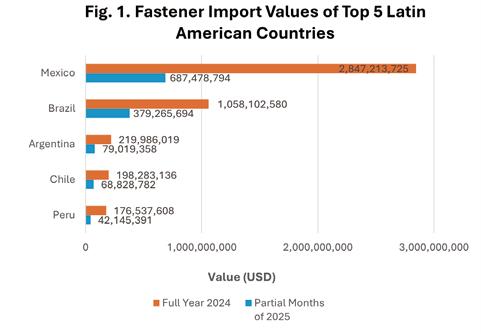

This article extracts and analyzes the top five Latin American countries from Table 1, analyzing their top ten import and export trading partners. The data are visually presented side-by-side as pie charts in Table 2.

1. The largest import sources for Mexico: The United States, China, Taiwan.
2. The United States held nearly a 50% market share in Mexico.
3. The import proportions from Taiwan and China both exceeded 10%. Taiwan and China were mutual competitors in Mexico.

1. Brazil's largest import sources: China, The United States, Germany.
2. China and the United States were mutual major competitors in Brazil.
3. Brazil imported at least 79% from mid-to-high-end fastener manufacturing countries (The U.S., Germany, Italy, Japan, France, Taiwan, Switzerland, S. Korea), at least 25% from Europe, and at least 43% from Asia.
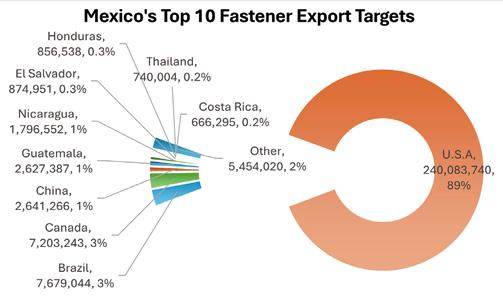
1. The United States dominated Mexico's fastening export market, accounting for as much as 89%.
2. The proportion of Mexico's exports to Latin American countries was at least 5.8%, with Brazil (3%) being the largest recipient.
3. Mexico’s main export destinations were the United States and Latin American countries.
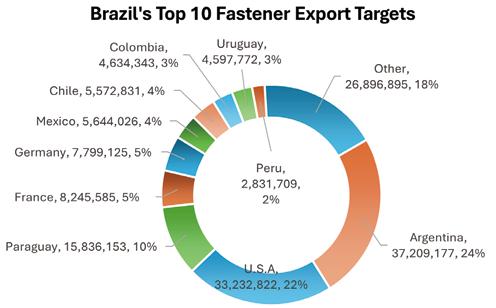
1 Argentina and the United States jointly dominated Brazil's fastener export market, each accounting for about 20%.
2. The proportion of Brazil’s exports to Latin American countries was at least 50%, exports to Europe at least 10%, and exports to mid-to-high-end fastener manufacturing countries (The U.S., France, Germany) at least 35%.
3. Brazil’s main export destinations were the United States and Latin American countries.

1. Argentina's largest import sources were China, Brazil, Thailand, and the United States. These four countries directly competed with each other.
2. Argentina imported at least 39% from mid-to-high-end fastener manufacturing countries, at least 46% from Asia, and at least 17% from Europe.
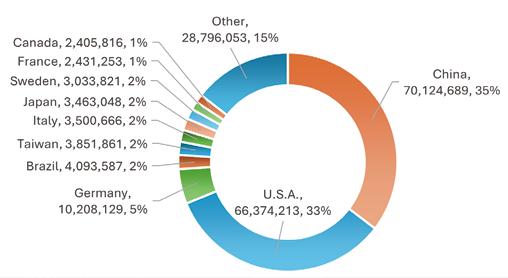
1. Chile’s largest import sources were China and the United States. These two countries directly competed with each other, each accounting for about 30%.
2. Chile imported at least 48% from mid-to-high-end fastener manufacturing countries, at least 39% from Asia, and at least 10% from Europe.
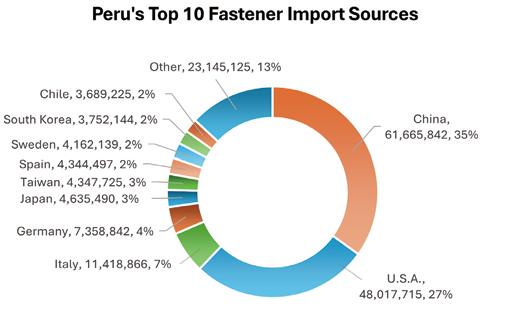
1. Peru’s largest import sources were China and the United States. These two countries directly competed with each other.
2. Peru imported at least 50% from mid-to-high-end fastener manufacturing countries, at least 43% from Asia, and at least 15% from Europe.
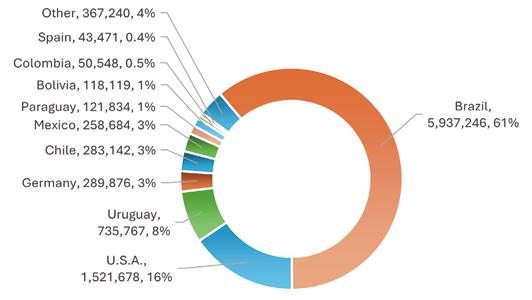
1. Brazil dominated Argentina's fastener export market, accounting for as much as 61%.
2. At least 77.5% of Argentina’s exports went to Latin American countries, 16% to the United States, and at least 3.4% to Europe.
3. Brazil’s main export destinations were Latin American countries.
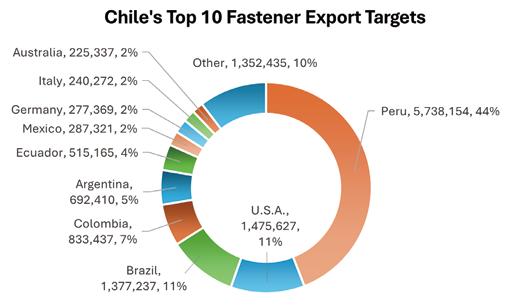
1. Peru dominated Chile’s fastener export market, accounting for as much as 44%.
2. At least 73% of Peru’s exports went to Latin American countries, 11% to the United States, and at least 4% to Europe.
3. Chile’s main export destinations were Latin American countries.
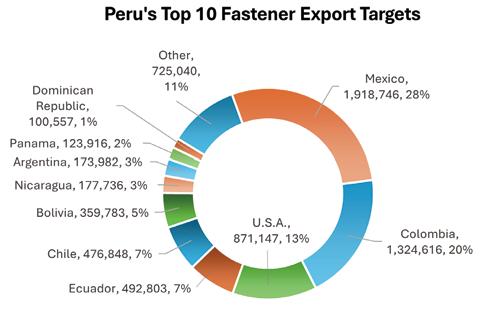
1. Peru’s largest export destinations were Mexico, Colombia, the United States.
2. At least 76% of Peru’s exports went to Latin American countries, 13% to the United States, and there were no European countries among its top ten export destinations.
3. Chile’s main export destinations were Latin American countries.
1. Taiwan’s fastener products were included in the top ten rankings of all the above five countries.
2. In Latin America, only in the Mexican market could the United States and Taiwan compete with China in terms of market share. In Brazil, Argentina, Chile, and Peru, China’s market share surpassed that of the U.S. and far exceeded Taiwan’s.
3. China occupied a large market share in Latin America. Against the backdrop of tense U.S.-China relations and the unified 50% tariffs imposed by the Trump administration on global steel and aluminum products, China is expected to accelerate expanding its market share and intensify competition in the Latin American market to diversify its market risks.
1. The top five fastener exporting countries in Latin America primarily exported to other Latin American countries. Among them, Mexico and Brazil also counted on the United States as a main export destination. Mexico’s exports to the U.S. were even 15 times higher than its exports to other Latin American countries, showing Mexico’s heavy reliance on U.S. demand for fasteners.
2. Argentina, Chile, and Peru’s fastener exports were highly dependent on Latin American countries.
Taiwan’s fastener exports to Latin America are primarily export-driven and Taiwan imports only a small volume from the region, so this section analyzes the export aspect only. According to Table 3, Taiwan’s top 10 export destinations in Latin America in 2024, ranked by weight from the highest to the lowest, were: Mexico (USD 140.3 million in export value, 33,264.8 tons), Brazil (USD 16.6 million, 4,866.1 tons), Argentina (USD 5.9 million, 1,437.6 tons), Peru (USD 2.0 million, 681.8 tons), El Salvador (USD 2.1 million, 677.5 tons). In 2024, Taiwan’s total fastener exports to Latin America amounted to USD 181.6 million by value and 45,533.4 tons by weight. In the first half of 2025, exports totaled USD 88.0 million and 21,972.7 tons. Based on this, the export weight and value in 2025 might decline by about 3% compared to 2024. Figure 3 highlights that Taiwan’s fastener exports to Mexico alone accounted for 38% of its total export weight to Latin America—6.8 times the weight exported to Brazil (5%). This substantial gap emphasizes Mexico’s critical role as Taiwan’s most important export market in the region.


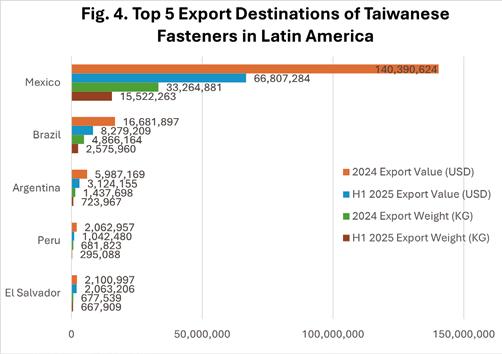
Table 4 ranks the top 15 Latin American countries by their fastening tool import values for 2024 from the highest to the lowest. The top five were: Mexico (USD 1.5 billion in imports and USD 233.1 million in exports), Brazil (USD 451.8 million in imports and USD 150.9 million in exports), Peru (USD 159.8 million in imports and USD 10.3 million in exports), Chile (USD 157.9 million in imports and USD 25.2 million in exports), Argentina (USD 140.4 million in imports and USD 364,634 in exports). Mexico accounted for approximately 54.7% of the combined import value among the top 15 countries, which was 3.3 times (refer to Figure 5) larger than Brazil’s 16.1% share and 9.5 times Peru’s 5.7% share. This significant margin confirms Mexico’s dominant position in the fastening tools import market within the region. On the export side, Mexico controlled about 52.9% of the total, 1.5 times (refer to Figure 6 ) Brazil’s 34.2%, 9.2 times Chile’s 5.7%, and 22.5 times Peru’s 2.3% share. In short, Mexico occupied over half of both import and export markets for fastening tools in Latin America, with Brazil taking between 10% and 30%.
The aggregate market size for these 15 countries in 2024 reached at least USD 2.7 billion in fastening tool imports and at least USD 440.4 million in exports. Overall, the region’s fastening tool import value exceeded exports by more than six times, highlighting a heavy reliance on imports. Excluding Panama, 14 of these countries showed substantial import values far surpassing their exports in 2024, emphasizing Latin America's dependence on importing fastening tools. For the first three to four months of 2025, the total import value among these 15 countries was about USD 760.2 million, while exports reached USD 104.4 million.
1
HS 8204:Hand-operated spanners and wrenches
HS 8205:Other hand tools, blow torches, etc.
HS 8207: Interchangeable tools for hand tools, whether or not power-operated, or for machine tools
In the wrench product category (HS 8204), Mexico accounted for 37.2% of the total imports of the 15 countries for 2024, followed by Brazil with 21.4%, Peru 7.3%, Chile 7.2%, and Argentina 5.9%. On the export side, Mexico’s share was 74.5%, with Brazil at 19.3%, Chile 1.3%, Peru 0.7%, and Argentina 0.1%. Figures 5 and 6 illustrate that Mexico led in both imports and exports of wrenches among the top 5 fastening tool trading countries in Latin America, confirming that Mexico was Latin America’s largest wrench market, followed by Brazil.

Similarly, Mexico and Brazil were also the top two importers and exporters in the HS 8205 category (Other hand tools, blow torches, etc.) and HS 8207 (Interchangeable tools for hand tools, whether or not power-operated, or for machine tools). For HS 8205, Chile ranks third in both imports and exports, while for HS 8207, Peru is the third largest importer and Chile the third largest exporter. The data for the first three to four months of 2025 show that Mexico and Brazil remained the top two importers and exporters in HS 8204 and HS 8205 categories.

This article extracts and analyzes the top five Latin American countries from Table 4, analyzing their top ten import and export trading partners. The data are visually presented side-by-side as pie charts in Table 5
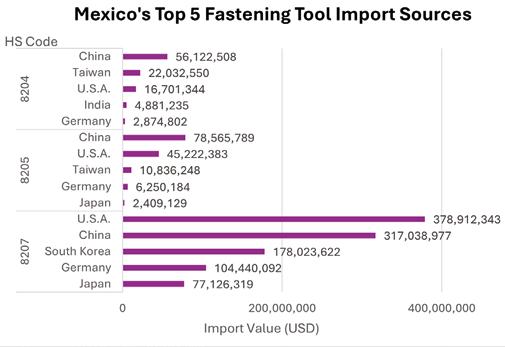
1. The proportion of wrenches (HS 8204) imported by Mexico from China was much higher than those imported from Taiwan and the United States, indicating that Mexico was highly dependent on Chinese wrenches. A similar phenomenon also occurred in category 8205.
2. In category 8207, the proportion of hand tools from the United States surpassed those from China and South Korea. The gap between China and the United States was 19.5%, which, although seemingly significant, showed that China was already closely trailing behind.
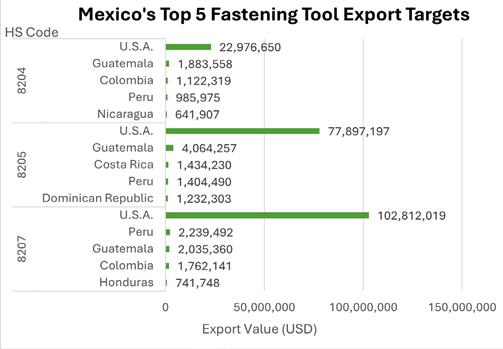
1. The United States simultaneously dominated categories 8204, 8205, and 8207.
2. Mexico was highly dependent on the United States as its primary export destination.
3. For Mexico, aside from the United States, the main export destinations were Latin American countries.
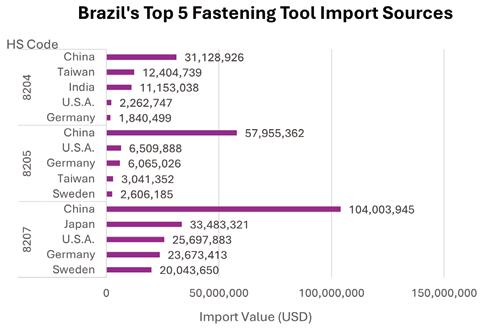
1. China simultaneously dominated the proportions in categories 8204, 8205, and 8207, far ahead of Taiwan and other countries in the ranking.
2. In category 8204, the gap between Taiwan and India was 11.2% (India had a chance to surpass). In category 8205, the gap between the United States and Germany was 7.3% (Germany had a chance to surpass). In category 8207, the gap between Japan and the United States was 30.2%.
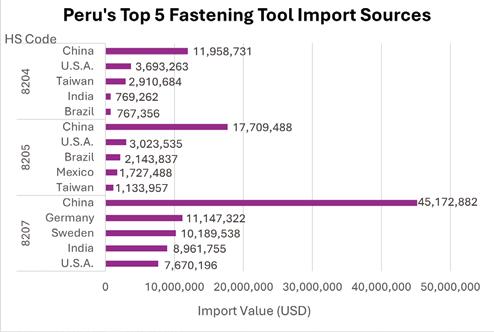
1. China simultaneously dominated the three categories.
2. In category 8204, the gap between the United States and Taiwan was 26.8%; in category 8205, the gap between the United States and Brazil was 41.0%; in category 8207, the gap between Germany and Sweden was 9.3% (Sweden had a chance to surpass).
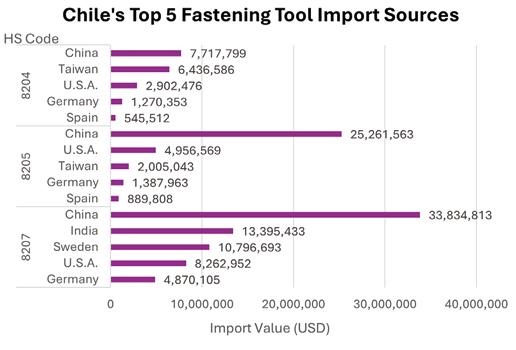
1. China simultaneously dominated the three categories.
2. In category 8204, the gap between China and Taiwan was 19.9% (relatively small; Taiwan still had a chance to surpass), and the gap between Taiwan and the United States was 121.7%. In category 8205, the gap between the United States and Taiwan was 147.2%. In category 8207, the gap between India and Sweden was 24.0%.
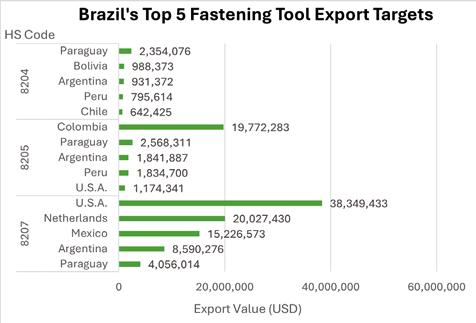
1. Except for category 8207, primarily exported to the United States, Brazil mainly exported categories 8204 and 8205 to Latin American countries.
2. Colombia dominated category 8205.

1. In category 8204, Ecuador had a chance to surpass the United States (with a gap of only 1.2%) to become Peru's largest export destination.
2. The United States dominated category 8205.
3. In category 8207, the gap between Bolivia and Brazil was 10.4% (Brazil had a chance to surpass Bolivia).
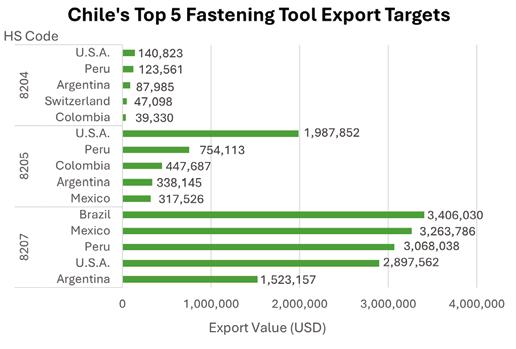
1. In category 8204, Peru had a chance to surpass the United States (with a gap of 13.9%).
2. The United States dominated category 8205.
3. In category 8207, the competition among Brazil, Mexico, Peru, and the United States was intense.
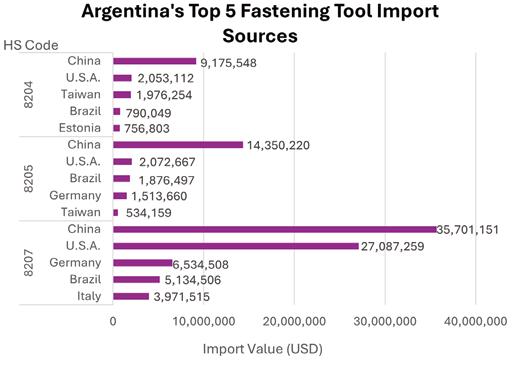
1. China simultaneously dominated the three categories.
2. In category 8204, the gap between the United States and Taiwan was 3.8% (Taiwan had a chance to surpass); in category 8205, the gap between the United States and Brazil was 10.4% (Brazil had a chance to surpass); in category 8207, the gap between the United States and Germany was 314.5%.

1. Argentina mainly exported to Latin American countries.
2. Uruguay dominated categories 8204 and 8205.
3. Chile dominated category 8207.
1. In categories 8204 and 8205, Taiwan’s hand tool products ranked among the top five exporters.
2. These five countries primarily imported hand tools from China and the United States, with some imports also coming from Europe, India, and Brazil.
3. China held a significant market share in the Latin American fastening tool market. Against the backdrop of tense US-China relations and the uniform 50% tariffs imposed by the Trump administration on global steel and aluminum products, China is expected to accelerate expanding its market share to diversify market risks, thereby intensifying competition in the Latin American market.
1. Except for Mexico, which is highly dependent on the United States, the five countries listed above mainly exported to countries in Latin America.
2. Overall, among the five countries listed above, the proportion of exports to the United States was still significant.
Since Taiwan's fastening tools also rely on exports, this article only analyzes the export aspect here. Table 6 is based on the export weight in 2024, ranking Taiwan's top 10 export destinations in Latin America from the largest to the smallest. The top five were Mexico (with the 2024 export value of USD 23.9 million and the export weight of 2,321.6 tons), Brazil (USD 17.5 million, 1,391.9 tons), Chile (USD 6.5 million, 641.0 tons), Peru (USD 2.0 million, 231.0 tons), and Colombia (USD 2.4 million, 205.1 tons). Taiwan's total market size for fastening tool exports to Latin America in 2024 reached USD 61.7 million by value and 5,500.3 tons by weight. In the first half of 2025, the export value reached USD 26.9 million and the weight reached 2,581.4 tons. Based on this current value, it is estimated that the total export value and weight for the entire 2025 may decrease by 12% and 6% respectively compared to 2024. Figure 7 shows that Taiwan’s export weight to Mexico accounted for 42% of Taiwan's total export weight, 1.6 times that of Brazil (25%), showing a significant gap between Mexico and other listed countries. Mexico was Taiwan's most important fastening tool export destination in Latin America, with Brazil (25%) and Chile (12%) being the second and third largest export destinations respectively.
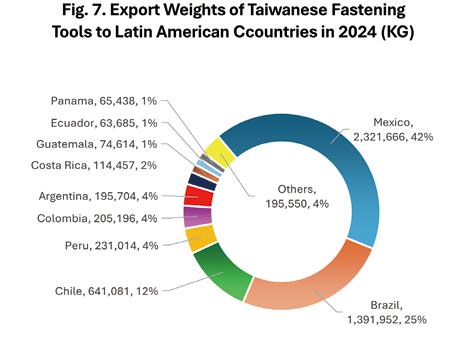

1. The fastener market size in Latin America (USD 4.8 billion) was 1.7 times that of the fastening tool market (USD 2.7 billion).
2. Exports of both fasteners and fastening tools in Latin America mainly relied on Latin American countries as well as the United States.
3. The import volumes of fasteners and fastening tools in Latin America were both greater than their export volumes.
4. Mexico and Brazil were the top two countries in both the fastener and fastening tool markets in Latin America.
5. Mexico’s exports of fasteners and fastening tools were highly dependent on the United States.
6. Although Taiwan’s exports of fasteners and fastening tools to Latin America were not large, they have made the rankings, indicating that Taiwan was also an important participant in the Latin American market.
7. The market shares of the United States, Europe, Taiwan, and others in the Latin American market were being greatly squeezed by China.
8. China was gradually dominating the import market for fasteners and fastening tools in Latin America. Against the backdrop of tense US-China relations, China's aggressive expansion in Latin America (and even globally) during Trump’s administration has reached a peak.
The frequent reversals and high unpredictability of tariff policies initiated during the Trump administration remain one of the most significant unresolved risks shaping the international trade landscape. Although some countries have reached agreements with the U.S. by the end of July this year, which alleviated some trade tensions in the short term, overseas media analyses warn that the U.S. government could still initiate a new form of trade war based on changing domestic political or economic conditions or outcomes of trade investigations, using tariffs as leverage in negotiations. This persistent external risk means companies may face the dual burden of high tariffs and trade friction in the near term.The instability and potential changes in Trump’s tariff policies remain crucial risk factors restricting Latin America’s economic development. The region is directly impacted by U.S.
tariff hikes coupled with immigration enforcement pressures, creating significant short-term economic strain. However, this adversity is also accelerating regional integration and cooperation with other countries, highlighting Latin America’s potential value as a risk mitigation option.
Businesses are advised to carefully assess the market environment and consider Latin America as a key region for risk diversification and hedging. Proactively developing regional supply chains and sales networks can reduce overreliance on the U.S. market and strengthen resilience to trade shocks. Preparing strategically for possible renewed trade conflicts will allow companies to maximize both risk avoidance and growth opportunities.
Copyright owned by Fastener World / Article by Dean Tseng

The DEWALT 20V MAX XR is a battery-operated rivet tool for setting blind rivets made of aluminium, steel and stainless steel. The cordless version DCF403 can set 800 rivets with a pulling force of up to 10 kilonewtons, while the DCF414 reaches 300 rivets with a single battery charge of up to 20 kilonewtons. Both feature a detachable riveting mandrel collector, integrated nosepiece storage, and allow for tool-free nosepiece changing. The ergonomically designed tools are designed for various applications.
Manufacturer: Stanley Black & Decker Ltd., Spennymoor, United Kingdom
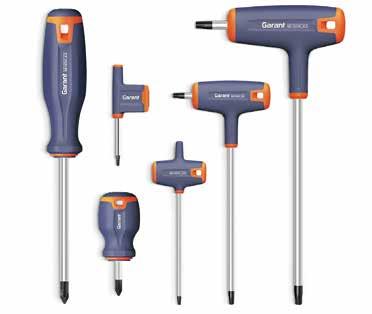


The GARANT Multicomponent Screwdrivers stand out due to their flowing handle shape with balanced proportions and iconic details such as the T-shaped orange element. The screwdrivers can be hung or safety lines can be attached to the opening at the end of the handle. The optimised ergonomics and the grippy material mix allow for effortless, energy-saving work. The precisely manufactured blades of the screwdrivers are made of high-quality steel and guarantee robustness and durability.
Manufacturer: Hoffmann SE, Munich, Germany
The Black Zero Drill is a minimalist designed, electric 16-volt screwdriver, impressing with its compact form, reduced weight and its casing made from a high-strength combination of PC and ABS plastics. The restrained colour and design, with soft lines and rounded edges, dispels the conventional notion of unwieldy electrical devices. Thanks to its compact and ergonomic design, it fits well in the hand and is also usable in tight spaces.
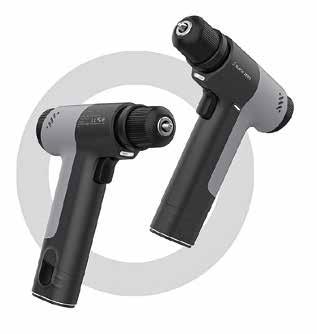
Manufacturer: Ningbo
Mingliang Technology Co., Ltd., Ningbo, China
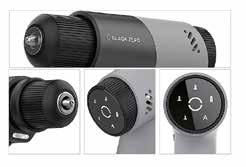
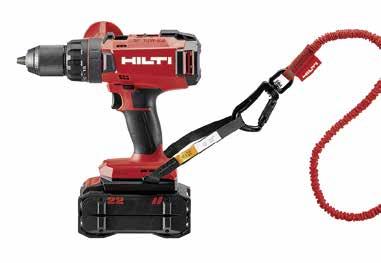
The Hilti SF 10W-22 is a high-torque cordless drill driver for demanding fastening and drilling of wood and other materials. The tool comes with a robust full metal chuck, a brushless motor, 4-speed gearbox, rubber bumpers and optimised cooling to withstand intense use under tough construction site conditions. Active Torque Control (ATC) also prevents uncontrolled spinning if the drill bit sticks.
Manufacturer: Hilti Corporation, Schaan, Liechtenstein
Inspired by science-fiction films, the Symtik S1 Boost EDC Screwdriver (Gatling), made from an aluminium alloy, stands out due to its structural design. Its material structure and the sandblasted, metallically shiny surface convey robustness and durability. The appropriate accessories are precisely integrated into the geometric shape. It is designed to be compact and practical, and is easy to transport. Vertical lines, protrusions and grooves highlight details of the futuristic aesthetics.
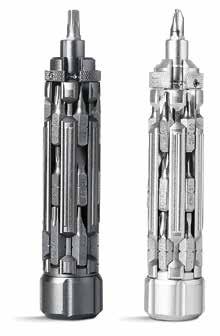
With the SKIL 4V Twist 2.0 Screwdriver, effortlessly switching between a straight-handle and a pistol-grip screwdriver is achievable thanks to a rotatable head holder. The innovative transparent window design allows the selection of various

Manufacturer: Keyi Technology (Guangzhou) Co., Ltd., Guangzhou, China
The Fanttik S1 Pro 3.7V electric screwdriver impresses with its well-thought-out design, which is specifically intended for use in private households. Its compact and practical format is particularly convincing in confined spaces. The magnet motor with an electric torque of 1.5 to 6 Nm and a manual torque of 8 Nm delivers the appropriate performance for different applications, such as assembling furniture, installing air conditioners or maintaining power strips and desktop computers.
Manufacturer: Fanttik Technology Innovation Co., Ltd., Shenzhen, China
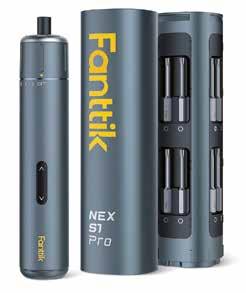
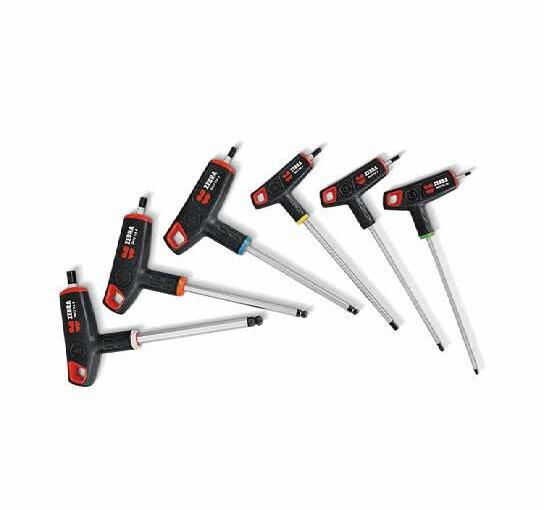
The ZEBRA T-handle wrenches are easy to work with. The asymmetric handle shape improves accessibility in tight spaces, while the concave hand rest on the twocomponent handle with its anti-slip surface ensures efficient power transfer and reduced fatigue during use. The rapid-turning zone with recessed grooves further increases versatility and speed while working. Colour coding and large symbols on both sides of the handle make it easier to identify the wrench size.
Manufacturer: Adolf Würth GmbH & Co. KG, Künzelsau, Germany
The Cordless Grinder-Driver Tool is a wireless, battery-operated angle grinder and screwdriver that combines two distinct functions in one device. Without the need to change the tool head, the compact, portable device offers two functions in one, providing greater comfort and time savings. On the top of the casing, the required function can be selected via a switch. Since both tools cannot be operated simultaneously, but only alternately, the risk of accidents is minimised.
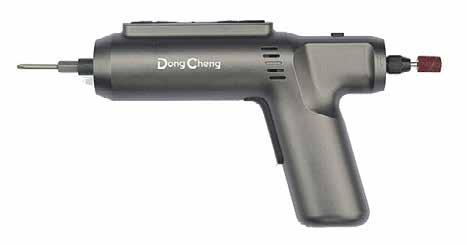
Manufacturer: Jiangsu Dongcheng M&E Tools Co.,Ltd., Qidong City, China
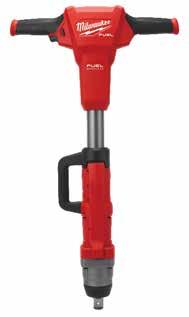
Milwaukee M18 FUEL™ 1" Railway Impact Wrench revolutionizes railway track applications by boosting productivity and optimizing ergonomics. It allows users to work upright, eliminating the need to bend over and making track bolt fastening and unfastening easy. With a torque of 2000 Nm, it is powerful to remove stubborn track bolts. Weighing just 7.8 kg, it is half the weight of gas competitors, providing fatigue-free working. 3-speed settings enhance precision, while the auto shut-off function prevents over-tightening for safety. The tool is easy to transport with a carrying handle, and LED lights improve visibility in dark environments.
Manufacturer: Milwaukee Tool Europe
Würth has developed a new range of premium torque wrenches for the controlled tightening of bolted joints. The centerpiece is an innovative quick torque setting technology that makes them among the fastest on the market. Unique in its class is the NFC chip for contactless data exchange in an increasingly digitalized world. The user benefits from an extra-large double scale for perfect readability as well as haptic and audible clicks when setting the torque value. An ergonomic 2-component handle and a push/pull button ensure convenient operation. A noble black matt chrome finish on the metal components adds to the overall premium look.
Manufacturer: Adolf Würth GmbH & Co. KG
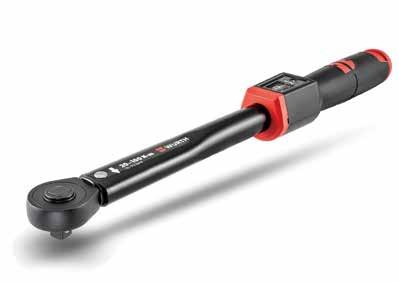
One of the original design concepts of the "Aluminum Mini Torque Wrench" is "lightweight and professional application." Therefore, the material used is 6061 aluminum alloy, combined with anodized surface treatment to present a professional visual impression. Additionally, it offers a variety of product colors to match the diverse color options of consumer bicycle frame. In terms of convenience and safety, the "Aluminum Mini Torque Wrench" fully meets the needs of the professional cycling users. Every aspect, from appearance, structure, color matching, product length and packaging design is considered from the user's perspective. The front direction plate features a sun wheel pattern, which effectively prevents slipping and adds aesthetic appeal during operation. It uses die-cast zinc alloy to on-piece; the adjustment handle also comes with anti-slip stripes and a simple design, providing the comfort and an attractive appearance.
Manufacturer: Torque-Tech Precision Co., Ltd
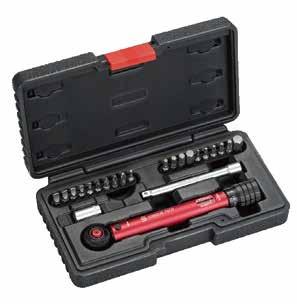
When it comes down to it, you need to be able to rely on it! The SW STAHL pneumatic impact wrench series offers three different models, equipped with a high-performance twin-hammer impact mechanism for optimum work. The low weight and one-handed switchover for clockwise and anticlockwise rotation ensure comfortable handling. The impact wrenches are available in ½" and ¾” sizes, making them ideal for working on large vehicles as well.
Manufacturer: SW Stahl Gmbh

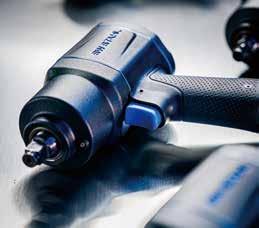
The detachable cement clamp is a type of fall protection anchor point used in rebar concrete environments for working at heights. The concrete anchor offers the advantage of convenience, as it can quickly set up anchor points and provides indicators to prevent users from incorrectly installing or using it. The design's emphasis on safety builds user confidence in the product. Additionally, the concrete anchor is designed for one-handed operation, making it easy to install and remove without occupying both hands, thereby providing added safety for users working at heights. The reusable design significantly reduces environmental impact. In recent years, YOKE has expanded into new markets with its own brand, focusing on "industrial design" and "patent layout," with the N-86050 concrete anchor being one of its outstanding products. This product meets the strength requirements of various standards and has unique advantages in patent development and market strategy.
Manufacturer: Yoke Industrial Corp.
